









caseih.co.nz


PO Box 36753
Merivale, Christchurch 8146
ph 03 329 6555
www.agrimedia.co.nz
Publishers of Rural Contractor & Large Scale Farmer, AgriBusiness, AgriVet, NZ Cropping, Australian AG Contractor & Large Scale Farmer, NZ Novachem Agrichemical Manual.
© RURAL CONTRACTOR AND LARGE
SCALE FARMER - No part of this publication may be reproduced in any form without the prior written permission of the publisher. Opinions expressed in this publication are not necessarily that of the publisher and suggest independent advice be sought before acting on information or suggestions contained herein.
CONTRIBUTIONS - Editorial and photographic contributions are welcomed and should be sent directly to AgriMedia Ltd. Editing of submissions is at the sole discretion of the editor and will accept no responsibility for unsolicited material.
EDITOR
Paul Titus
87 Stanbury Avenue, Christchurch mob 021 655 092 email titus@agrimedia.co.nz
ADVERTISING MANAGER
Michael Lightbourne mob 021 403 853 email michael@agrimedia.co.nz
CIRCULATION
email admin@agrimedia.co.nz
PRODUCTION, LAYOUT & DESIGN
Hannah Kincaid
email art@agrimedia.co.nz
CONTRIBUTORS
Joanna Ibell, David Hill, Fiona Calvert, Kathy Davis, Jacqueline Knight, Logan Tasker, Antonia Olszewski.
Printed by Blueprint Ltd
TECHNOLOGY
3
Kiwi inventor’s ‘edible’ netwrap on the menu 4 Successful forage crops with Allen Custom Drills
6 Genetically modified pasture crops have huge potential 8 Healthy soil for a wealthy future
TechnoPack gives Kverneland balers superpowers
Diverse pasture trials preliminary findings
World needs better phosphorus use 16 Anticipation is vital to protect brassica crops 18 Make every pasture dollar go further this spring 20 Donaghys builds on history of innovation and service 21 ‘Blue chip’ inoculant offers real alternative
Nitrogen-fixing maize and cereals now a reality
Food waste could boost animal nutrition
Soil conditioner lifesaver for forage crops
Smart job and invoicing app designed for ag contractors 30 Cooler bales, less spoilage with Biostart preservatives
Interest in hay bale grazing on upswing
Annual chicory can outperform ryegrass, plantain
Benefits of diverse pastures for soil health and carbon management 38 NIR sensors now in the mix for maize trading
App counts true cost of pasture weeds
Peecon mixer wagon an investment in innovation and quality
Vantage NZ gives mixed fleets guidance, precision and more
New tool to protect wholecrop barley
Kuhn grass gear sweeping up awards 48 Mid-sized Fendt rake offers ISOBUS bells & whistles 49 When does maize need nutrients? 50 Agpac’s charitable journey with TrioWorld
Belt mergers can boost triple mower performance 52 Weed and pest control in maize
54 2024 roundup of forage cultivars for Quality Silage, Hay and Grazing
68 Busy couple have eyes on the prize
Loyalty driving force behind experienced contractor 76 Across The Ditch: For the love of the game

KIA ORA. IN A BIG WAY MY ROLE AS EDITOR OF THIS PUBLICATION IS AN EASY ONE. MY JOB IS TO GATHER STORIES ABOUT NEW AND INTERESTING THINGS HAPPENING IN AGRICULTURE, BUT THAT REALLY MEANS REPORTING ON THE HARD YAKKA OF OTHERS.
Out there in the hinterland contractors and farmers are putting their energy and money on the line running dynamic businesses. At the same time, engineers and researchers in factories, labs and test farms are beavering away to come up with new technology and plant breeds that our primary producers can use.
This Green to Gold special edition of the magazine is a testament to this. It is chocker with stories about some of the latest gizmos, chemistry and genetic technology that is coming down the track.
For example, we talk with Feilding-based H&T Agronomics. They have been working with partners in the United States, who have isolated and deployed microbes that give maize and cereals the same capability as clover and other legumes to fix their own nitrogen.
The microbes are delivered to the plant via the ‘N-Fix’ seed coating. It is commercially available this season, and H&T says it could reduce synthetic urea input in maize by up to 25 percent.
Another of our stories tells the tale of a clever Kiwi invention – Econet biodegradable netwrap. Like many people, Southland farmer Grant Lightfoot was fed up with plastic netwrap, which cannot be recycled but can end up in the guts of livestock or in the gears of power harrows and other implements.
Grant knew that round bale netwrap used to be made from the natural fibre sisal. So, he and his partner literally hand-knitted 50m of net wrap from jute, another natural fibre, to see if they could make it work. It did, and Grant is now collaborating with a factory to produce commercial netwrap that is not only biodegradable but also edible for sheep, cows and deer.
As the new government moves to end the ban on genetically engineered and modified organisms outside of laboratories in Aotearoa, you might wonder how that will work.
But it turns out AgResearch is already going down that track. It has been working with its partners in Australia to do trials on genetically modified plants outside the lab. In another article in this issue, they report on an

PAUL TITUS, EDITOR
endophyte and two pasture species with GE features they have developed.
Oh look! There is still some room for a few dad jokes. Stop me if you have heard them before…
As I get older, I remember all of the people who I have lost along the way. Maybe a career as a tour guide wasn’t the right choice.
***
I went to the doctor to see what he thought about a suspicious-looking mole. He said they all look like that and I should have left him in the garden.
***
Did you hear about the new restaurant on the moon? Great food, no atmosphere.
***
A man asked his waiter, “Does your piano player take requests?”
The waiter said, “Yes he does, sir.” The man replied “Then please ask him to play solitaire until I’ve finished my meal.”
RC

EARTHWORM eDNA IN SOIL TESTING
● Our new eDNA test enhances soil health monitoring, providing valuable measures on the biological health of your soil
● A simpler, less labour-intensive way to measure earthworm presence
● A New Zealand first, this development reflects our commitment to supporting farmers and producers on their sustainability journeys
FARMER GRANT LIGHTFOOT IS LEAPING FORWARD, BY LOOKING TO THE PAST.
Bales used to be wrapped in a natural fibre – sisal. Sisal breaks down eventually and that was considered to be a problem.
It was replaced with twisted polypropylene, a plastic-based fibre. It lasts forever, hoorah!
Today, having a plastic that lasts forever is no longer a source of delight. It does not decompose and it can spread as micro plastics. And, while the outer, air-tight wraps of silage film can be recycled, there is no recycling option for the inner net.
This is the problem Grant is solving – how to wrap biodegradable net around a round bale.
His solution is a return to a natural fibre. Instead of sisal, he has focused on jute, an annual crop that mostly grows in India and Pakistan.
Grant says cows can eat jute, which makes it easier when placing bales in a paddock.
“You see dairy farmers taking a week’s worth of plastic off silage bales, and then there is the net. By the time the ring feeder is on a lot is wasted. With my bales, you leave the netwrap on and there is no wastage.”
Grant has a deer farm in Orepuki, by Te Waewae Bay in Southland. He has been trialling the bales on his stags, cows and other animals for two to three years. He says all animals can eat it.
“There are no worries. It is just going back to the old days and how we used to bale hay or straw.”
He started working on the problem while working as a commercial diver on oil rigs.
“I used to live in a decompression chamber for months on end. There is lots of time to think. I wanted to invent something and came up with this.”
Initial thoughts were towards hemp, but even a low level of THC prevents access to an American market.
He settled on jute, and he is now pleased that is the direction he took.

“It took about eight months. The novelty wore off and it was painful. But when we tried it in a baler, I knew I was onto something.”
It took five years to develop the product Kiwi Econet. Balers do not have to be modified to use the biodegradable net. Grant has trialled it in his own Welger baler and in a contractor’s McHale Fusion.
Econet is made off-shore and Grant now has samples from the factory to put through a baler. If he is satisfied with the product, it will go into full commercial production and it should be available in the New Zealand market this coming season.
Standard rolls of plastic netwrap are 3600m while Econet will be about 1000m. The smaller size decreases the weight, but it does mean that rolls need to be changed more often.
“It is not as bad as it sounds though, because you don’t have to put so many wraps on with Econet. You can apply one-and-a halflayers, not three.”
Grant has a patent pending, and is working on a distribution network. He says the price could be a little more than the comparable plastic, but if it is, it will not be by much. “Plus it has the advantage that animals can eat it.”
Already Kiwi Econet is making not so much waves, as tsunamis. At the Southern Field
KIWI ECONET IS MADE OF JUTE, WHICH IS EDIBLE TO COWS, SHEEP AND DEER.
Days at Waimumu in February he won the Farm Innovation Awards. Grant won $500 for the award, which he donated to the local Westpac Rescue Helicopter.
He was then invited to National Fieldays at Mystery Creek and placed in the top five for
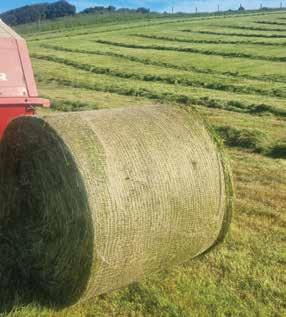
The beginning shows great tenacity. He and his partner Coleen Quirk hand-knitted 50m of jute net.
THERE IS ALREADY INTEREST AROUND THE WORLD IN ECONET, AND GRANT LIGHTFOOT IS HEADING TO THE UNITED STATES TO DEMONSTRATE IT.

CONTRACTORS AND FARMERS WHO ESTABLISH PASTURE AND FORAGE CROPS HAVE TO SOW DIFFERENT TYPES OF SEED IN A DIVERSE RANGE OF TERRAINS. QUALITY-BUILT ALLEN CUSTOM DRILLS ARE SPECIFICALLY DESIGNED TO DEAL WITH THESE CHALLENGES AND THEY CAN PLAY A CRITICAL ROLE IN SUCCESSFUL FORAGE AND FODDER CROPS.
Often these crops have to be drilled in tight windows at particular times of the year to ensure they establish well and are successful. Accuracy is critical to manage this.
Using a proven, accurate system to get the seed into the ground is the best way to promote even germination of the crop. With their renowned Accord metering system Allen Custom Drills can play a pivotal
role to achieve this.
Around the world agricultural businesses face tough competition to maintain their own footprint in the market. The same is true for agricultural machinery manufacturers and Allen Custom Drills has maintained its advantage by continuing to build their machines from the ground up in Ashburton, Mid Canterbury.
Over their 20 years in business, they have established a solid market for their products and built up strong relationships with their customers, suppliers and dealers.
With their tough frame developed to work efficiently in New Zealand’s rugged terrains, they can handle conditions virtually anywhere in the world.
Craig Allen designs all Allen Custom Drills himself using a state-of-the-art computer aided design (CAD) program. Each drill is designed for high performance, simplicity and low maintenance costs.
The Allen drill range is based
on five base models. Customers can work closely with Craig from the design phase to build what works for them and their farming or contracting operations.
Getting the seed into the ground right from the start is a key for maximising the productivity of your land. Allen Custom Drills’ Accord metering system can be operated using their 7115 drill controller with 7-inch touchscreen. Or you can specify your Allen drill ISOBUS-ready.
Craig says he and his company pride themselves on the quality and durability of their drills.
“We won’t compromise on reliability or strength. Any component incorporated into our product must perform and meet our very high expectations.
“We are confident that we have the highest performing, reliable and efficient drills on the market. We get a lot of positive feedback and good yarns from our customers or operators. That is what continues to drive me if I am honest.”
Allen Custom Drills strives to
continuously improve their products, their business and their people. As a team they use the latest science to learn from the ‘old’ while developing new technology for the future.
They can show people an Allen drill at work, so they can see exactly how it operates and the results it can give.
“I can safely say that many of our customers are happy for us to call in with someone who is thinking about an Allen drill, so they can jump in the cab and see the drill run,” Craig says.
When you invest in an Allen Custom Drill, you get not only a high-quality and high-performance agricultural machine, you also get a relationship with a proud family-owned New Zealand company.
WITH THEIR ROBUST BUILD AND ACCURATE METERING SYSTEM, ALLEN CUSTOM DRILLS ARE THE IDEAL TOOL TO ESTABLISH FORAGE CROPS AND PASTURE IN A WIDE RANGE OF CONDITIONS.
the Innovation Awards there. He was invited to the Royal Highland Show in Edinburgh, but unfortunately could not make it. He is going to Texas to show Econet on large-scale farms
there. He has been invited to the Environmental Southland awards in October.
As an idea of the scale of the plastic problem this could solve, Grant describes a conversation
he had about one Israeli factory. “They make about 15 billion metres of plastic net annually. That is just one factory and you can’t do anything else with that net.
Along with direct and dealer distribution in New Zealand, Allen Custom Drills also exports their air seeder drills to Australia.
For more information on Allen Custom Drills, visit the website allencustomdrills.co.nz or call 03 308 4094. RC

“I can’t wait to get it out there. I'm getting phone calls and emails daily and they are worldwide.”
More information is available on the website kiwieconet.nz. RC


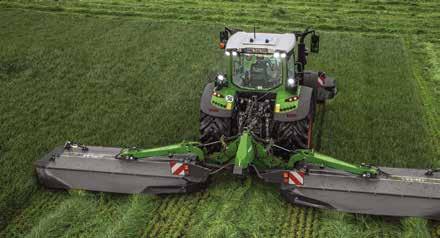
PASTURE IS THE FOUNDATION OF NEW ZEALAND’S LIVESTOCK INDUSTRIES, AND AGRESEARCH IS NOW WORKING WITH PARTNERS TO USE GENE EDITING AND GENETIC MODIFICATION TO IMPROVE THE PERFORMANCE OF MAJOR PASTURE SPECIES.
Gene editing and modification can be used to change the DNA of plants and animals by inserting, replacing or deleting genetic material in their genome.
The technology has the potential to improve farm productivity and animal health. It can also help reduce farming’s environmental impact by reducing greenhouse gas emissions and nitrogen leeching.
Currently AgResearch is working on three pasture programmes. The plants that have been bred with the gene technology are now either under indoor containment in New Zealand or in field trials offshore.
Those three projects are: 1) gene edited endophytes, 2) high metabolisable energy ryegrass, and 3) high condensed tannin white clover.
AgResearch and its partners are seeking permission to operate a contained outdoor growing trial of ryegrass that carries geneedited Epichloë endophytes.
Epichloë endophytes live inside ryegrass and form a mutually beneficial relationship with their host. Natural substances released by the endophytes deter insect pests from eating the ryegrass and improve plant growth and persistence.
The benefit should be reduced use of chemical pesticides and increased efficiencies in milk and meat production.
Endophytes have already been a boon to

TECHNICIAN ASHLEY PRENTICE CHECKS AGRESEARCH’S GENETICALLY MODIFIED HIGH ME RYEGRASS IN A CONTAINMENT GLASSHOUSE.
New Zealand agriculture. An estimated 90 percent of proprietary ryegrass sold in New Zealand contains an endophyte. The economic benefit of just the AR37 endophyte is estimated to have been $3.6 billion over 20 years.
There are drawbacks, however. Some endophytes that protect ryegrass against pests also produce toxins that can be harmful to the livestock that eat the ryegrass. They can cause heat stress or the disease ryegrass staggers.
AgResearch scientists, with support from commercial partners PGG Wrightson Seeds and Grasslanz Technology, have identified ways to change the DNA of selected endophytes via gene editing that improves plant protection or reduces harm to livestock.
There is a very low risk of genetic material from genetically altered endophytes to travel outside of the trial site. AgResearch wants to conduct a contained trial, which means that
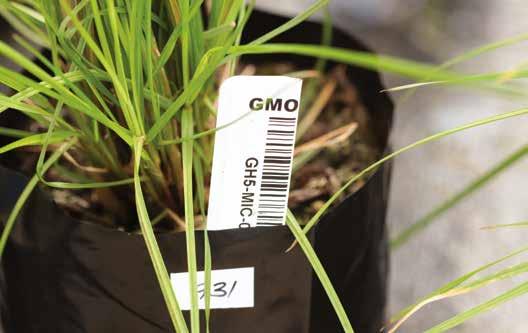
any genetic material that can be reproduced is confined to that site. The edited endophytes are contained in the ryegrass seed and do not travel via the ryegrass pollen.
As part of the application process, AgResearch and its partners will engage with interested and affected parties to understand and address any concerns they raise. If approved, the trial would allow scientists to test how resistant the ryegrass with geneedited endophytes is to insect pests and how well they grow in outdoor conditions here. Outdoor trialling of ryegrass containing these gene-edited endophytes is already underway in Victoria and New South Wales, Australia. The Australian trials will run for three years. They will measure persistence, yield, insect damage, chemistry and the level of endophyte presence in the ryegrass.
AgResearch and its partners have developed a genetically modified High Metabolisable Energy (HME) ryegrass that should reduce environmental impacts while boosting animal nutrition and farm productivity. There is some evidence that suggests it could also reduce methane emissions by 10 to 15 percent and trials will be carried out to test this.
Researchers have developed the modified ryegrass by adding and modifying two plant genes to increase fat content in the leaf and
THE GENETICALLY MODIFIED HIGH ME RYEGRASS AGRESEARCH HAS DEVELOPED COULD IMPROVE ANIMAL PERFORMANCE AND REDUCE METHANE EMISSIONS BY AS MUCH AS TO 15 PERCENT.
enhance photosynthesis in the plant. The aim is to improve animal nutrition and thereby reduce urinary nitrogen excretion. The benefit of this is reduced nitrous oxide emissions and nitrate leaching.
AgResearch scientists have had government support for the project and they have worked with their commercial partners –Grasslanz Technology, PGG Wrightson Seeds and DairyNZ – to develop the HME ryegrass.
One genetic modification they made was with the protein oleosin from the sesame plant. It helps to form and stabilise the increased fats in the plant.
When applying to Australia’s Office of the Gene Technology Regulator for permission to conduct trials in Australia, regulators raised concerns about the risk of sesame as a food allergen.
Although AgResearch scientists were confident that sesame oleosin was not expressed in the pollen of HME ryegrass, they made the decision to use an alternative oleosin from rice to provide certainty. Rice oleosins are not considered allergenic, and the change from sesame to rice does not affect the quality or function of the ryegrass.
In Aotearoa, scientists are preparing for a trial that should start later this year, in which lambs will be fed both the HME ryegrass and an unmodified ryegrass. Enough of the HME ryegrass will be grown in contained glasshouses that it can be ensiled and fed to lambs.
This trial will provide insights on methane
emissions and urinary nitrogen excretion. Confirmation in cattle will need to be performed in outdoor trials, probably in Australia.
Outdoor field trials are now being conducted in Australia on white clover that has been modified to reduce the environmental impact of livestock and improve animal health and production. Recent research in the lab in New Zealand has confirmed its benefits.
Scientists have modified white clover to boost the level of condensed tannins in its leaves. Condensed tannins occur naturally in the flowers of white clover and in other species such as grapes, tea and other human foods.
AgResearch scientists are working with partners PGG Wrightson Seeds and Grasslanz Technology to genetically modify the white clover with a gene taken from another species of clover.
The results in laboratory containment trials in New Zealand suggest the high condensed tannin (HiCT) white clover could reduce methane emissions by more than 15 percent.

Researchers now have permission to grow the HiCT white clover outdoors under a bee exclusion tent for field trials in Australia.
A potential benefit of the HiCT white clover is reduced bloat, which can be fatal for sheep and cattle. Research at AgResearch’s facilities has shown HiCT white clover can reduce frothy foam and biofilm, which are indicators of bloat.
Further phases of research will include feeding the HiCT white clover to animals to consider the potential for commercialisation. RC

By Fiona Calvert, Hill Labs
CROP SOILS HAVE A HEAVY DEMAND
PLACED ON THEM AND NEED PARTICULAR CARE TO MAINTAIN THEIR HEALTH AND LONG-TERM PRODUCTIVITY.
Cropping rotations can result in a high requirement for nutrient supply. Additionally, cultivation and harvest machinery can degrade soil structure and reduce organic matter. Depending on management practices, there may be reduced earthworm populations as well as lowered microbial activity.
Various definitions exist for soil health but the general consensus is that a healthy soil will have a continued capacity to sustain plant, animal and human ecosystems.
Soil health is a dynamic quality that is affected by land-use, management practices and climactic effects. A healthy soil will have good tilth (it is crumbly, well-structured, dark with organic matter), extensive rooting, optimal pH, sufficient nutrients and be free of contaminants. That is, it must be fertile for growing both plants and soil biological organisms.
For agricultural and horticultural production systems, soil health is a combination of physical properties such as soil texture, chemical
FIGURE 1: SOIL HEALTH IS DETERMINED BY PHYSICAL, CHEMICAL AND BIOLOGICAL PROPERTIES.

properties such as pH and mineral nutrient content, and biological properties including living biomass and mineralisable N.
All of these properties are profoundly influenced by soil organic matter and soil type. (See Figure 1.)
The quantity and nature of organic matter is highly dependent on farming practices and climatic conditions. Some of the factors known to affect the build-up or depletion of soil organic matter are listed in Figure 2.
Regular soil fertility monitoring for pasture and crop rotations is an important practice to inform the optimal lime, nitrogen and fertiliser application to meet your production targets and maintain fertility. When doing soil testing for fertility insights, soil health indicators can be added.
Hill Labs has a package of soil tests that help evaluate overall soil health. The Soil Health Package includes basic soil tests (pH, Olsen P, exchangeable cations, CEC and percent base saturation), extractable sulphur tests (sulphate and organic S), anion storage capacity (ASC), organic matter (from total carbon), total nitrogen, potentially available (mineralisable) nitrogen, carbon-nitrogen ratio and also hot water extractable carbon (HWEC).
The HWEC test has been shown to be a good indicator of soil health, as it is highly correlated with microbial biomass carbon and aggregate stability.
Monitoring soils with this group of tests over time provides data to support your management practices. This can provide confidence that the soil will continue to support a thriving ecosystem.
A complementary test that provides an estimation of earthworm abundance in soil has recently been released. Earthworms are an important component of soil biology, and abundant earthworm populations are recognised as an indicator of healthy soil.
Previously, methods for identifying earthworm populations were labour-intensive and required going out to a field to take a spadesquare down to the depth of the spade, break-
OR DEPLETE SOIL ORGANIC MATTER.

CONSISTENT SAMPLING (AT THE SAME LOCATION AND TIME OF YEAR) AND DELIVERING THE SAMPLES TO THE LAB QUICKLY ARE VITAL FOR USEFUL SOIL ANALYSIS.
ing it up and counting the earthworms.
Hill Labs’ new earthworm eDNA test can help build a holistic understanding of soil health. Molecular technology, in the form of quantitative real-time PCR (qPCR) is used to identify the presence of Aporrectodea caliginosa, New Zealand’s most prominent earthworm species.
The test is carried out on the same sample submitted for soil fertility and organic matter tests. It needs to be received at the lab as soon after sample collection as possible to minimise eDNA degradation.
Additional tests such as soil texture (percent sand, percent silt and percent clay) might be useful where little information is available about a soil. Soil texture tests can aid with irrigation, agrichemical application or other land-use decisions.
Completing the laboratory-based soil health monitoring programme is occasional testing for potential contaminants e.g. cadmium, copper or spray residues.
Organic Matter Accumulation
Grass/clover/mixed pasture
Moist summer growing conditions
Direct drill/low or no tillage
Incorporation of crop residue
Controlled grazing
Friable soil structure, good root density
Moderate N fertiliser application
Green manure/cover crops
Organic Matter Depletion
Bare soil/fallow
Summer drought
Intensive cultivation
Removal or burning crop residue
Overgrazing
Compacted soil, shallow root zone
Excessive N fertiliser application
Erosion
Visual assessment of soil has an important role in soil monitoring and is complementary to soil tests. Grading for rooting depth, colour, porosity and soil structure make up a Visual Soil Assessment (Landcare Research) protocol that many advisors are proficient in using. A complete soil monitoring programme enables best practice management to achieve healthy soils and a wealthy productive future.
Vital to any monitoring program is a correct sampling technique in which samples are taken from the same spatial location and at a similar time of year. This minimises variation in space (including sample depth) and time when comparing measurements.
There is significant benefit to engaging experienced advisors to guide sampling for soil fertility and soil health testing.
Further information on the lab tests described in this article can be found on the Hill Labs website hill-labs.co.nz. RC
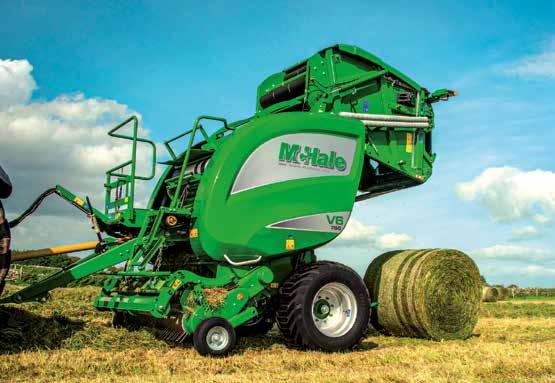
The Fusion 4 Plus is a fully automatic integrated baler wrapper which can apply film or net wrap to the barrel of the bale, delivering optimum bale density.
• Maximum output whilst keeping the machine short and compact at 5.8 metres in length
• 25 knife-chopping unit
• Patented unique bale transfer technique
• ISOBUS ready
The McHale V6750 variable chamber round baler has been designed with the demands of today’s farmer and contractor in mind.
• High-Intake 2.1m pick-up
• 15 knife heavy-duty chopper unit and feed rotor
• Double drive system with auto greasing
• Net and bale density can be adjusted from the cab through the console


VARIO PLUS
The Fusion Vario Plus is a fully automatic integrated baler wrapper that applies film or net wrap to the barrel of the bale, delivering optimum bale density.
• Hay and straw bales from 0.6m to 1.68m
• Haylage or silage bales from 1m to 1.45m to allow for wrapping

WHEN KVERNELAND ROUND BALERS ARE FITTED WITH THE TECHNOPACK PACKAGE, THEY GET TWO ADVANCED FEATURES – CROP HUMIDITY SENSING AND BALE EJECTION CONTROL. THEY ALSO GAIN THE ABILITY TO USE TRACTOR IMPLEMENT MANAGEMENT (OR TIM).
The TechnoPack can be fitted to new balers at the Kubota-Kverneland baler factory in Ravenna, Italy. Or it can be retrofitted to some existing round baler models.
With this technology, baler operators can track the moisture levels in their bales and they can easily monitor the status of bale ejection at the back of the baler.
If they have a compatible tractor, they can also use TIM to enable the implement to take control of certain tractor functions.
Kverneland offers two levels of TIM. The first level allows the baler to adjust the tractor's speed during baling. The baler can also control the engine’s rpm to match the baling conditions for optimal crop intake, and it stops the tractor so the tailgate can open and eject the bale at exactly the right time.
An even more advanced version is TIM Pack 2.0. In addition to all the capabilities of standard TIM, with TIM 2.0 the baler also has Auto Blockage Control (ABC) and Auto Feed Control (AFC).
With ABC, the baler automatically detects and remedies crop blockages faster than the driver
can. With AFC, the baler uses a swingable drawbar to automatically adjust the baler’s position in the sward to maximise bale shape and density without the driver making steering adjustments.
Adrian Ploscar is bale equipment product manager at Kubota’s baler factory. He says the TechnoPack can be fitted to all Kverneland variable chamber round balers.
“The TechnoPack’s real-time moisture detection system uses two electrodes in the bale chamber to measure the electrical conductivity of the crop. This allows the operator to keep track of the crop's humidity, so they always know that they are baling in the right conditions,” Adrian says.
“Crop humidity sensing also displays the average moisture level for the entire bale while it is being bound. This ensures all bales meet quality targets and it reduces the risk of mould.
“Bale ejection control increases the comfort of the tractor driver and makes baling more efficient. A sensor checks if the bale is fully clear of the ramp before the tailgate closes.
KUBOTA-KVERNELAND ENGINEERS HAVE DEVELOPED AN ADVANCED TIM SYSTEM BECAUSE THEY HAVE APPROACHED THE TECHNOLOGY FROM THE PERSPECTIVE OF BOTH THE TRACTOR AND THE IMPLEMENT.

“If the bale isn’t clear from the ramp, the system alerts the driver, which prevents damage to the bale and the machine. This improves efficiency, safety, and convenience by eliminating the need to manually check the ramp.”
It is not necessary to use TIM to get the advantages of moisture sensing and bale ejection control, but if your aim is to maximise baling efficiency by using TIM, then the TechnoPack makes this readily available.
When using TIM, the implement can control the tractor’s three point hitch, its front and rear PTO, and its speed and rpm.
Adrian says Kubota has an advantage in developing TIM because they can work at the technology from the perspective
KVERNELAND BALERS WITH TECHNOPACK HAVE CROP HUMIDITY SENSORS, BALE EJECTION CONTROL AND THE ABILITY TO USE TRACTOR IMPLEMENT MANAGEMENT (TIM).
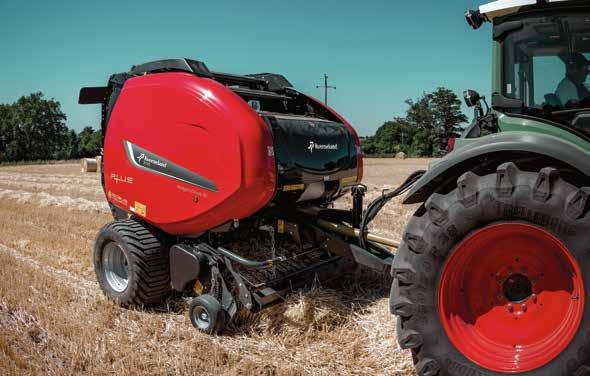
of both the tractor and baler.
“Kubota is the first to offer a tractor and baler combination that meets AEF TIM certification standards.”
Because TIM is an extension of ISOBUS, it allows tractors and implements from different manufacturers to communicate. This means, a Kverneland baler with the TechnoPack can operate with any TIM capable tractor, not just Kubota.
Among the benefits of TIM is less stressful work for the tractor driver. They will be less fatigued because they do not have to monitor all of the baler’s actions and they do not have to carry out as many manual tasks.
TIM on Kverneland balers also improves safety through such features as a slope sensor that prevents bales from being ejected on steep terrain. Auto Blockage Control (ABC) also helps prevent damage to the baler from crop blockages.
Bale quality is higher because the automatic features help prevent damage to crops and help make better, more consistent bales, which adds up to better forage.
TIM’s automated work also speeds up baling and lowers fuel consumption by adjusting engine speed when needed, which means more profitable operations.
Kverneland’s TIM system represents a major advancement in agricultural technology, offering a smarter and more efficient way to handle hay and silage baling. RC

ADEPIDYN ® technology
The NEW SUPERPOWER has arrived to control Ramularia and Scald in barley.
A flexible solo fungicide that actively protects for longer!

Scan for more information, visit www.syngenta.co.nz or talk to your local distributor.
THE FIRST RESULTS FROM A SET OF TRIALS COMPARING DIVERSE PASTURE MIXES TO TRADITIONAL RYEGRASS-CLOVER AND PLANTAIN-CLOVER MIXES SHOW LITTLE DIFFERENCE BETWEEN THEM IN SOIL ORGANIC MATTER, EARTHWORM NUMBERS, MICROBIAL ACTIVITY AND WATER INFILTRATION.
Hawke's Bay applied research company On-Farm Research has now completed two years of an extended series of trials aimed at evaluating what role some aspects of regenerative agriculture could have in dryland farming systems.
On-Farm Research managing director Dr Paul Muir says the company is conducting plot trials and farmlet trials in response

to a 2020 call from the Ministry for Primary Industries to scientifically evaluate the principles of regenerative agriculture.
Regenerative agriculture practices such as keeping soils covered with good pasture covers and encouraging species diversity are said to have environmental benefits such as increased soil
carbon and improved microbial activity.
The first set of plot trials got underway in 2022. They focused on the potential benefits of diverse species in a sward and the role of different grazing heights. The trials looked at two different mowing heights – 20 cm and 8 cm.
THE TRIALS HAVE SHOWN THAT THE NUMBER OF SPECIES IN DIVERSE SPECIES PASTURE DECLINED OVER TIME. AFTER TWO YEARS ONLY SEVEN OF THE 31 SPECIES IN THE DIVERSE MIX REMAINED.

WEIGHT DISTRIBUTION
Unique design allows the spreader to sit closer to the tractor.
• Improves weight distribution for larger payloads with less front weight stress.
DURABILITY
• One-piece stainless steel body integrated with the frame. Eliminates corrosion risk and extends the spreader’s lifespan.
VERSATILE SPREADING
• Conveyor system delivers product to spinners. Bin shape prevents bridging, allowing smooth spreading of various materials, from urea to lime.
ISOBUS COMPATIBILITY
• Plug-and-play control system compatible with all ISOBUS-compliant terminals. Variable rate ready, facilitating easy transfer between machines.
L5 CAPACITY
Loading Height: 2,150 mm
• Urea Capacity: 3,750 kg
• Lime Capacity: 6,000 kg



The aim was to determine the effect of different grazing intensities on production levels among ryegrass, plantain and diverse species and whether different grazing routines affected the mix of species in the diverse pasture.
A diverse pasture mix which had been promoted locally was used for the mowing height trial. This contained 31 different grasses, legumes, brassicas and other species. The mix was sown into plots at rates that ranged from 45 kg/ha to 180 kg/ha.
Paul says this very high level of seed had been used locally by a regenerative farmer but in this study the high seeding rates did not contribute to any extra dry matter.
The ryegrass-clover mix contained four species and was sown at 32 kg/ha. The plantain mix contained six species, of which five were clovers.
Paul says one of the most significant findings of the trial was that the number of species in the diverse pasture declined over time. At 18 months from sowing, only 13-14 of the original 31 species were present and after two years, this had declined to seven species.
“Some species never emerged, probably due to competition from other species in the mix. Some, such as squash, were taken out by frost, and others were annuals that did not persist after the first season. Under both mowing heights the diverse pasture plots became cocksfoot dominant.” Initially the diverse mixtures tended to outperform the other mixtures, with annual ryegrass, cereal and brassica seed contributing an extra 1500 kg DM/ha in the first winter. However, once the annual species had died out, the diverse mixtures became heavily cocksfoot dominant.
Plots mowed to a height of 8 cm generated significantly more dry matter than those mowed at 20 cm. This was partly due to the higher volume of unharvested,
ON-FARM RESEARCH CONDUCTED MOWING AND GRAZING TRIALS COMPARING YIELD AND ENVIRONMENTAL BENEFITS AMONG 1) A DIVERSE SPECIES MIX, 2) RYEGRASS AND CLOVER, AND 3) PLANTAIN AND CLOVER.
OF INFILTRATION RATES SHOWED NO DIFFERENCE BETWEEN RYEGRASS OR PLANTAIN PASTURE AND DIVERSE SPECIES PASTURE.
dead material in the plots mowed at 20 cm, but also because the 8 cm mowing height stimulated more growth from some plants such as plantain.
At a cutting height of 8 cm, the plantain/clover swards were the highest yielding (27.6 tonnes DM over two years) and ryegrass swards were the lowest yielding (25.2 tonnes DM over the same period).
At the 20 cm cutting height, the diverse mixtures had the highest yields. This is probably because the high cutting height better suits Italian ryegrass, cereals and brassicas within the diverse mixtures.
Both the plantain and ryegrass swards performed poorly under the 20 cm cutting regime (15.4 tonnes DM and 12.8 tonnes DM, respectively).
Sowing mixture and mowing height had no effect on earthworm numbers, microbial activity, water infiltration rates or soil carbon.
Earthworm numbers averaged 44 per 20x20x20 cm cube with no significant differences in numbers between species mixtures or mowing height.
To test microbial activity the On-Farm Research field technicians placed an identical square of dried and weighed cotton cloth in the ground under each species mix and left it for six weeks. Then it was dug up, washed and re-weighed. This allowed them

to measure how much of the material has disappeared which was an indicator of the level of microbial activity. There was no difference in the amount of the cloth remained among all the different species mixes and mowing heights.
Water infiltration rates were also measured because faster infiltration is believed to indicate a healthier soil. There was no difference among water infiltration rates among the different species mixes or mowing heights.
An adjacent trial compared infiltration rates in the same diverse and ryegrass mixtures under grazing. Whilst there was no difference between the diverse and ryegrass mixtures, the grazed plots had markedly slower infiltration rates.
This suggests that grazing, treading and compacting the soil have a much bigger impact on infiltration rates than the species mix that has been sown.
To test soil carbon (as well as nitrogen and bulk density) a corer was used to take soil samples to a depth of 30 cm. Samples were taken across the experimental area at the start and at the end of the trial two years later.
Soil carbon increased over those two years (from 2.1 to 2.5
percent) as the site went from fully cultivated to a fully developed sward. Species mixtures or mowing height made no difference to soil carbon, however.
Paul says in this first mowing trial, the 8 cm cutting height might have suited plantain but it was not low enough to stimulate ryegrass regrowth and tillering. Therefore, a second series of plot trials has been started that will also provide a wider range of cutting heights.
The new trial has cutting heights of 5 cm, 10 cm, and 15 cm, and the mowing is being done on two different intervals, four weeks and eight weeks. The new trial is also using a diverse pasture mix containing 19 of the more perennial species. Any that did not perform in the first trial have been eliminated.
Sponsors and funders for the current project are MPI, Hawke's Bay Regional Council, AGMARDT, Barenbrug Seeds, Poukawa Research Foundation, Ravensdown, Atkins Ranch and The Nature Conservancy.
The research has a four and a half year timeframe, and it is overseen by a governance group and a technical committee who monitor and advise on its various trials. RC

MORE EFFICIENT USE OF PHOSPHORUS
COULD SEE LIMITED STOCKS OF THE IMPORTANT FERTILISER LAST MORE THAN 500 YEARS AND BOOST GLOBAL FOOD PRODUCTION TO FEED GROWING POPULATIONS.
But these benefits will only happen if countries are less wasteful with how they use phosphorus, a recent study shows.
Up to 40 percent of farm soils have overapplications of phosphorus, with farms in Europe and North America over-applying the most.
The global population is due to hit nearly 10 billion by 2050, and it is estimated that to feed this number of people a further 500 million hectares of arable land will be needed unless phosphorus can be more efficiently used to boost and maintain crop yields.
Phosphorus is listed as a critical raw material by the European Union, and globally 20,500 kilotonnes of phosphorus are applied to agricultural soils each year as fertiliser.
Concerns have been raised about its limited supply and loss to freshwater where it can degrade water quality. Phosphorus predominantly comes from mining phosphate rock. There are a relatively small number of sources located in countries like Morocco and Russia.
Previous estimates of how long global phosphorus supplies could last vary from 30 to more than 300 years. These prior estimates were based on current wasteful practices continuing and contained a lot of uncertainty.
Research by scientists at Lancaster University in the UK and AgResearch and Lincoln University in NZ has examined concentrations of phosphorus in farm soils across the globe to determine optimum growth of 28 major food crops – from wheat and maize to rice and apples.
The research revealed soils that do not contain enough phosphorus and soils that contain concentrations higher than plants need for optimal growth.
Their findings shed new light on the amounts of phosphorus available in soils and the amounts needed as fertilisers. They reveal that phosphorus reserves could last for up to 531 years if we use it more efficiently and equitably. That is 77 years longer than if we stick with current practices.
Professor Phil Haygarth of Lancaster University is a co-author of the paper. Phil says phosphorus is an essential fertiliser that drives food production on farms around the world.
“It is the ‘energy’ of agriculture that drives our food systems, but we need to manage our supplies carefully. We need to seek ways

to be more efficient and sustainable with its use.
“Our study shows that there is considerable potential to improve the efficiency of how we use phosphorus fertilisers. We show it is possible to optimise global food production without accelerating the depletion of precious and finite global phosphorus fertiliser reserves.
“We are unlikely to run out of phosphorus in the next 500 years, but only if we apply as much as needed to produce optimal crop yields and stop wasteful over-applications,” Phil says.
The research team calculated 10,556 kilotonnes of phosphorus is wasted each year through over-application with much of that dominated by wheat and grassland in Europe and maize and rice in Asia.
Professor Richard McDowell of Lincoln University is the lead author of the study. He says many farmers over-apply phosphorus to bank it in the soil, but only a fraction of soil phosphorus can be used by plants.
“Adjusting applications to sustain the levels that plants need to produce optimal yields negates the need for phosphorus being wasted. If there are excessive levels in soil that plants can’t use, phosphorus can potentially be lost to water, which risks causing water quality problems like eutrophication,” Richard says.
The researchers involved in the study have calculated that around the world nearly 75 percent of farmed soils are in phosphorus deficit. Phosphorus deficits are most acute in Asian countries such as India.
As a result, the researchers calculate that there should be an application of almost 57,000 kilotonnes of phosphorus to alleviate those soils in deficit to boost crop yields.
They then calculated that 17,500 kilotonnes of phosphorus are needed each year to maintain optimum soil phosphorus con-
RICHARD MCDOWELL SAYS IT IS IMPORTANT NOT TO APPLY MORE PHOSPHOROUS THAN CROPS CAN USE.

TO FEED THE WORLD’S GROWING POPULATION FARMERS NEED TO AVOID OVER OR UNDER USE OF PHOSPHORUS.
centrations. This would result in a global reduction in the demand for phosphorus by around 3000 kilotonnes annually.
Richard says the science is clear, but to use phosphorus efficiently and extend supplies, governments need to collaborate to make policies that promote phosphorus use only where needed.
“That will involve balancing distributions of phosphorus for optimal crop growth and reducing subsidies that sustain overuse of phosphorus and likely cause water quality problems.”
The findings are outlined in the paper ‘Phosphorus Applications Adjusted to Optimal Crop Yields Can Help Sustain Global Phosphorus Reserves’ published by Nature Food.
The paper’s authors are Richard McDowell and Peter Pletnyakov of Lincoln University and AgResearch, and Professor Phil Haygarth of Lancaster University. Richard was funded by New Zealand’s Our Land and Water National Science Challenge. RC




Donaghys Crop a proud New Zealand founded agri-business
We’re your partners in agri-business.
Article
BY COMBINING ACCESS TO A GLOBAL RESEARCH PIPELINE WITH LOCAL KNOWLEDGE OF FORAGE BRASSICA PRODUCTION IN AOTEAROA NEW ZEALAND, CORTEVA AGRISCIENCE CAN PROVIDE A RANGE OF PRODUCTS TO DEAL WITH WEEDS AND PESTS.
Corteva’s forage brassica herbicide and insecticide portfolio includes options that will offer protection against most scenarios typically encountered around NZ.
A heavy weed infestation in a brassica crop will reduce yield and quality and result in a poor crop at grazing. Corteva says to avoid this and reduce competition from weeds for light, water and nutrients, it is necessary to protect the crop from emergence right through to canopy closure.
Good weed control in a brassica crop includes limiting weed competition in the crop and pasture rotation by reducing weed seeds within the soil. It is also important to target perennial and rhizomatous weeds such as Californian thistle, yarrow and dock.
Establishing a dense crop canopy is one of the most effective ways to control weeds in brassica crops. To achieve this it is important to aim for rapid emergence, growth and establishment of the crop.
Some of the elements required for good emergence are pH, fertility, seedbed preparation, high quality seed, accurate planting

depth and seed-to soil-contact. Herbicides can also help to bridge the gap.
Applications of post-emergence herbicides should be based on stage of weed growth, not the stage of the crop. And, of course, any post-emergence herbicides must be safe for the germinating brassica seedlings and cotyledons.
It is also important to look out for opportunities to target both weeds and pests at the same time. In these situations, the principle is to focus on the earliest treatment required. Do not delay and compromise optimal control of one over the other. For example, if weeds are ready to be sprayed, don’t delay an application to target insects, and vice versa.
Corteva Agriscience marketing manager Glen Surgenor says there is an increasing emphasis on optimising crop performance, from day one.
Broadleaf herbicides from Corteva Agriscience such as Milestone, Korvetto and Radiate are proven to be reliable tools to achieve this.
Milestone contains two active ingredients – aminopyralid at 60 gm/litre and clopyralid at 276 gm/litre. Both of these are well-recognised and widely used.
Glen says when Milestone was introduced it was a world-first.
“The formulation is sold overseas, but in
THE TWO ACTIVE INGREDIENTS IN CORTEVA’S MILESTONE ARE EFFECTIVE AGAINST THISTLES, WIREWEED, PLANTAIN AND OTHER WEEDS THAT HAMPER BRASSICA CROPS.
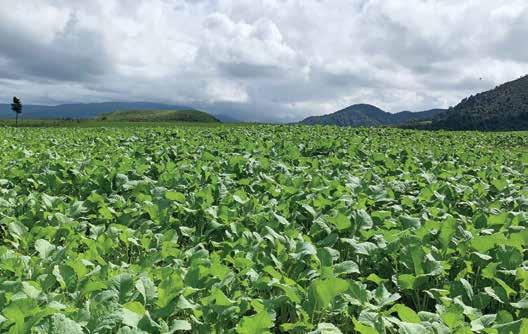
THE BEST WAY TO PROTECT A BRASSICA CROP FROM WEEDS IS TO GET A QUICK CANOPY COVER AND POST-EMERGENCE HERBICIDES CAN HELP ENSURE THIS HAPPENS.
no other country was it used for forage brassicas. It has replaced our T-Max product and offers farmers greater crop safety which was a focus of the R&D team that created Milestone.
“By combining the two active ingredients, aminopyralid and clopyralid, Milestone provides exceptional control of thistles, and its weed spectrum includes wireweed, plantain and most other weeds from the T-Max label,” he says.
Although it was launched six years ago, Korvetto continues to find favour thanks to its unique package of benefits. It offers fast plant-back with control of hard-to-kill weeds like shepherd’s purse. It also provides superb crop safety.
“Plant-back is a standout feature of Korvetto. It is the most flexible post emergence herbicide for brassicas. It has a three month plant-back for clover and six month plantback for fodder beet,” Glen says.
“This gives farmers more flexibility when planning subsequent crop rotations. Some other herbicide options have plant-backs that are 12-24 months, which can be quite limiting.”
Plant-back periods for maize, cereals, ryegrass and forage brassicas are nil; vegetables and legumes other than clover are six months.
Korvetto combines Corteva Agriscience’s new active Arylex (Group 4) with the trusted chemistry of clopyralid (also Group 4), Glen says. This is the only formulation of its type for the forage brassica herbicide market.
As well as controlling key forage brassica weeds like fathen, nightshades and Californian thistles, at 1 litre/ha Korvetto provides best-in-class control of shepherd’s purse and fumitory.
Crop safety is excellent for leafy and bulb turnips, kale, forage rape and swedes. Handling benefits include an in-built methylated seed oil (MSO) adjuvant, so there’s no need
WHILE BENEFICIAL INSECTS ARE THE BEST DEFENCE AGAINST WHITE BUTTERFLY, DIAMONDBACK MOTH CATERPILLARS, APHIDS AND OTHER PESTS THAT TARGET BRASSICAS, CORTEVA SPARTA AND TRANSFORM CAN HELP IF THEIR POPULATION GETS OUT OF CONTROL.
for farmers or contractors to add an oil adjuvant or surfactant to the mix.
Korvetto is safe to use after pre-emergence herbicides and should be applied to actively growing brassica crops when plants have reached the three to four leaf stage.
Radiate is older chemistry, with a narrower weed spectrum, but fills a useful role as a low-cost herbicide when customers need to get rid of fathen in their brassica crops.
Glen says when pests like diamondback moth, white butterfly, looper caterpillars or aphids threaten forage brassica crops, time is critical.
“Caterpillar pests can do significant damage to leaf area within a short space of time. Aphids transmit plant viruses and their feeding points provide entry wounds for diseases that can severely damage plants or even kill large areas of a brassica crop.”
Ideally the first line of defence will be a population of beneficial insects that give natural protection against white butterfly,
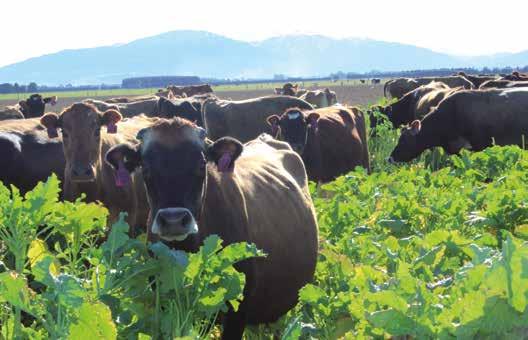
diamondback moth caterpillars and aphids.
Species such as brown lacewing, ladybird beetles, hoverfly, parasitic wasps, predatory mites and beetles can play an important role in protecting brassica crops from pest flare ups and damage through until grazing.
Monitor your crop closely for both pests and beneficial insects and if caterpillar and/ or aphid populations do flare up and require treatment, use insecticides with minimal impact on beneficial insects such as Corteva’s Sparta and Transform.
Sparta works by contact and ingestion to control caterpillars in forage brassicas. Translaminar activity ensures good control of insects feeding on the underside of leaves. Transform is a contact and systemic
KUBOTA AND GREAT PLAINS PRODUCT SPECIALISTS ON-SITE
insecticide that provides rapid knockdown and moves within the plant to protect new untreated growth.
Transform’s systemic and translaminar activity resists wash-off and provides aphid control for up to 21 days, which prevents them re-infesting the crop.
Alone or in combination Sparta and Transform are ideal tools for control of key insect pests in forage brassicas. Both products have excellent environmental and toxicology profiles, providing a high level of safety for applicators.
For further information contact your local Corteva Agriscience territory manager and always refer to the product label for further guidelines on timing and use. RC

You’re invited to our Kubota and Great Plains demo day!
Come see and hear about the following products:
- NEW! Great Plains Turbomax Disc Cultivator
- Great Plains Spartan Direct Drill
- Kubota M7-2 Tractors
WEDNESDAY 30TH OCTOBER PANKHURST FARM 658 WARDS ROAD,
IF THERE WAS EVER A SPRING FOR DIGGING INTO THE TRUE VALUE OF DIFFERENT TYPES OF PASTURE SEED, THIS IS IT.
Cost pressures are severe for many red meat farmers, especially those who have had months of minimal grass growth and high supplement bills. Dairy farmers aren’t immune from budgetary restraints either, although their market outlook is brighter.
Pasture has to be sown or resown in spring, so what is the best way to make sure you get the best possible outcome – not just straight away, but in the medium term as well?
First, recognise that a shortterm fix, for whatever reason, will still need to be resolved sooner rather than later. And this will come with all the associated expenses of more seed and other inputs plus more tractor and labour time.
If you sowed annual ryegrass this past autumn as a cost-saving measure, for example, it was only an interim step. When it runs out after six or eight months, those pastures will start going backwards without further renewal. This means spending more money.
Second, it is important to acknowledge that uncertified seed, while cheap, is unlikely to deliver value for red meat

or dairy farmers.
In fact, it might do the opposite. There is no knowing what it contains, or how it will perform.
Of all the potential fixes available to farmers this spring, uncertified seed is the riskiest, for many reasons.
It can introduce new and unwanted weeds, deliver lower yields or bring other issues associated with seed of unknown origin and quality.
At the other end of the spectrum, with least risk and highest lasting value, are certified seeds for top perennial ryegrass like Barenbrug’s Array, Maxsyn and 4front.
There is no question whether
their yield, quality, seasonal growth and performance will give the best return on every dollar spent on pasture renewal this spring.
Quality, germination, purity and endophyte are guaranteed and the long term value inherent in these advanced genetics has been demonstrated time and again.
Some farmers might not be able to afford to sow as many paddocks in these high-value perennials as they would like this spring. For them, value might best be achieved with a hybrid like Shogun or Forge.
They will grow 1.5 tonnes more dry matter per ha through the

RENEWING ONE PADDOCK WELL WITH PROVEN GENETICS GENERATES MORE VALUE THAN SOWING MULTIPLE PADDOCKS IN UNCERTIFIED SEED.
cool season than a perennial for two to five years, with higher palatability for improved animal performance.
They are not perennials and they will need to be replaced. But in the medium term, they can help farmers get through the next few years with reliable, quality, cost-effective feed.
Pasture eaten remains a key driver of profit on farms. When times are tight, pasture is critical to drive production and dilute farmers’ costs per kilogram of milksolids or meat produced.
Even if it means renewing only one paddock really well, with proven pasture genetics, farmers will be better off in terms of value doing this than sowing multiple paddocks with uncertified seed this spring.
If you’d like to talk this through in more detail, contact your local Barenbrug area manager today. Or visit the website barenbrug. co.nz. RC
PASTURE EATEN IS A MAJOR DRIVER OF PROFIT ON FARMS.


THE PROUD NEW ZEALAND BUSINESS DONAGHYS CROP IS CONTINUING TO EXPAND ITS CROP PACKAGING AND HORTICULTURE
RANGE TO SOLIDIFY ITS POSITION AS A LEADER IN THE INDUSTRY.
With origins tracing back to Donaghys Industries Ltd, the company boasts nearly 150 years of experience in the agricultural sector. They began by manufacturing sisal twine, which remains a staple in their current range as Freerun.
With their rich history of innovation and dedication to service, Donaghys has a diverse array of products tailored for New Zealand's agricultural conditions.
They understand the challenges of local conditions and their products are manufactured and sourced to meet the needs of their customers.
Collectively the company’s representatives have more than 100 years of experience in the agricultural industry. They understand the needs of Kiwi farmers and contractors and bring a depth of expertise and commitment to customers to the table.
Their product range offers exceptional value and performance. The line-up of top-tier products covers twines, bale net, bale wrap, silage film and pit covers. All of these products can make forage production easier and more efficient.
Moreover, they take pride in fostering strong relationships with their customers. Donaghys’ Contractors Club offers a fantas-
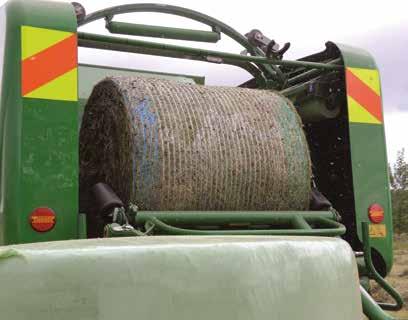
tic reward scheme that recognises and rewards the loyalty of contractors.
They encourage contractors to check it out and register for the upcoming season to take advantage of the numerous benefits.
As Donaghys Crop continues to grow and innovate, it remains dedicated to supporting New Zealand's agricultural sector with high-quality, reliable products and exceptional service. Their
FOR NEARLY 150 YEARS DONAGHYS HAS SUPPLIED HIGH-QUALITY TWINE AND CROP PACKAGING PRODUCTS TO KIWI FARMERS AND CONTRACTORS.
legacy of innovation, and the expertise and passion of their team ensure that they remain at the forefront of the industry. RC

A GOOD SILAGE INOCULANT SPEEDS UP AND IMPROVES THE FERMENTATION OF GRASS, WHOLECROP OR MAIZE SO THIS IS NOT LEFT UP TO LESS EFFICIENT WILD YEASTS AND BACTERIA. WITH AN EFFECTIVE INOCULANT, SILAGE WILL RETAIN MORE NUTRIENTS, LOSE LESS DRY MATTER AND HAVE BETTER AEROBIC STABILITY.
New Zealand-owned company Independent Wrap is introducing a new range of easy-touse silage inoculants that offer fast, efficient performance at a cost-effective price. The inoculants are supplied by the diversified American multinational food corporation Cargill.
Independent Wrap general manager Richard Howard says after the company trialled two of Cargill’s Forage-Mate silage inoculants last season, they will supply both throughout New Zealand in the coming season.
The two products are Forage-Mate AP, an all-purpose microbial inoculant with three strains of lactic acid producing bacteria, and Forage-Mate BP, a Lactobacillus buchneribased inoculant that promotes aerobic stability during feed-out as well as front-end fermentation.
Richard says Independent Wrap managing direct Lydia Dickinson was searching for an inoculant to add to the company’s range of silage wrap and other consumables for a number of years and the Cargill products are an ideal fit.
“Lydia wanted to find the right products that would expand our offering and add value to our customers. The cornerstone of our business is to provide high-quality, dependable products that we and our team believe in.
“Cargill is a large agricultural company that supplies a range of products and services. Its inoculants have a 10 percent market share in the US, which is a huge amount of business. Their inoculants have some of the highest colony forming units (CFU) on the market and they are easy to store and work with.”
Forage-Mate AP is for contractors and farmers who have good forage management practices and are looking for a high-quality inoculant at an economical price. Its bacteria rapidly increase the lactic acid in the silage
WEST COAST CONTRACTOR HAYDEN HAHN USED FORAGE-MATE INOCULANT LAST YEAR. HE SAYS GRASS WITHOUT IT DOES NOT ENSILE AS WELL AND COWS HOOVER UP THE FEED MADE WITH IT.
and reduce the pH, which reduces dry matter losses.
Richard says the three lactic acid producing bacteria that Forage-Mate AP contains are at their most active at different pH levels, so as one tails off, another kicks in to maintain pH drop and fermentation speed.
“Testing in New Zealand on Forage-Mate AP last season shows that it does exactly what it is supposed to do. It lowered the pH and reduced the activity of yeasts and moulds much faster than leaving silage untreated, which sped up preservation and cut nutrient loss.
“We took samples of treated and untreated silage, and tested both samples at days 0, 3, 7, 14 and 56. Results showed a significantly faster reduction in pH for treated silage at days 3 and 7. At 56 days after ensiling the treated samples showed significantly lower pH, higher lactic acid, and higher crude protein.”
Forage-Mate BP also contains bacteria that speed up the production of lactic acid in silage but it also contains Lactobacillus buchneri which preserves nutrients and protects the silage when it is re-exposed to air during feedout.
It is primarily used for maize silage, which is made in very large volumes and is more susceptible to DM losses due to heating when exposed to oxygen.
“We are in the process of collating data from the trials we ran on Forage-Mate BP during the last maize harvest. When applied at the recommended dose it produces 500,000 CFU/gm of forage, which is significantly more than many other inoculants,” Richard says.
“Forage-Mate BP and AP are very cost competitive compared to other products. Both are also easy to work with. They can be used in most applicators used in New Zealand. And, while the gold standard is to keep them refrigerated, they can safely be stored in a cool, dark place.”
West Coast contractor Hayden Hahn used

WHEN MIXED WITH WATER, FORAGEMATE INOCULANTS TURN A BRIGHT BLUE, WHICH MAKES THEM EASIER TO MONITOR IN THE APPLICATOR.
Forage-Mate AP and BP last season and he was very pleased with the results.
Hayden’s business Coastwide Forage Solutions provides baling, bulk grass and maize silage, precision planting and other services across a big swath of the South Island’s west coast from their base at Dobson, near Greymouth.
He says he already buys his silage wrap from Independent Wrap so he was happy to trial their new silage inoculants.
“The inoculants are price competitive and it was easy to deal with the one supplier for silage wrap and inoculant, so we gave them a try. We did about 300 ha of maize silage and we used Forage-Mate BP on 250 ha of that. The maize stacks have stayed very cool, thanks to the buchneri product. Our customers are very happy with it,” Hayden says.
He also used Forage-Mate AP with his two McHale Fusion combination balers, New Holland forage harvester, and three Krone loader wagons. He is also pleased with its performance.
“We have found that cows really clean up the feed that has the inoculant applied. We used the AP inoculant all of the last season but I did some late cut bales for myself in April and May. They did not ensile as well as the crop that had the inoculant.”

IMAGINE IF MAIZE, RYEGRASS AND CEREALS
HAD THE ABILITY OF CLOVER AND OTHER LEGUMES TO FIX THEIR OWN NITROGEN. AS IN MANY ASPECTS OF LIFE, WHAT WAS ONCE FANCIFUL IS NOW REAL.
Kiwi agronomy and seed enhancement specialists H&T have been working with researchers in the USA, who have developed microbes that can attach themselves to the roots of maize, cereals and forage crops and give them the ability to fix nitrogen from the air.
These bacteria act the same as the rhizobia that give legumes this ability. While they have been identified and multiplied in the USA, they are also native to New Zealand, so they can easily be commercialised.
H&T business manager Duncan Thomas says efforts to find nitrogen fixing bacteria that are compatible with grass species have been going on for decades. Two American companies have made breakthroughs and are developing microbes compatible to particular crops.
The bacteria live naturally in the soil and they have been

identified and tailored to work with particular crops. They are an exciting option because the microbial activity puts nitrogen where the plant needs it and when. It converts nitrogen from the atmosphere into ammoniums directly on the plant’s root system.
“Over the past five or six years, this technology has become very big in the US,” Duncan says. “One company, Pivot Bio, has a million acres of maize under production with their bacteria.
“They supply their product in a two-pack liquid form and it is applied directly into the furrow
Hayden says both Forage-Mate products are easy to mix and he likes the fact that it turns a bright blue when it is mixed.
“With the dye in it I can actually see the inoculant going through the pipes, which you can’t do when it is clear. It is easy to store and mix and it works well with our Ascot Pumps applicators.
“We mix it in 20 litre buckets for the silage harvester and we have two 20-litre containers on each of our balers. Each container will cover 130 bales so we can do 260 bales without refilling, which is a normal day’s work when we are not too busy,” he says.
Richard thanks Canterbury Feed Analysis for testing samples of silage treated with ForageMate AP and BP. Further information and contact details can be found at the website independentwrap.co.nz, or by calling 0800 4 U 2 WRAP. RC
during planting. This requires having a planter with capability to spray the liquid, and their bacteria have a short shelf life.
“Instead, we have been working with another company, BioConsortia, which has developed a microbe that can be applied as a stable seed coating.
“Their product is called N-Fix and it was developed by a group of scientists that includes two New Zealanders. They are developing new generations of these microbes that are more powerful and able to fix more nitrogen.”
H&T brought five different N-fixing microbes to Aotearoa
INTRODUCING MICROBES TO MAIZE SEED TO GIVE PLANTS THE ABILITY TO FIX THEIR OWN NITROGEN IS A GROWING TREND IN THE USA, AND H&T AGRONOMICS IS TRIALLING SEVERAL OPTIONS TO INTRODUCE IT TO AOTEAROA.
and put them through massive replication trials to ensure they would work in local conditions.
Duncan says the results are “very cool”.
Environmental damage from synthetic fertilisers is a concern

INDEPENDENT WRAP IS INTRODUCING TWO NEW INOCULANTS - ALL-PURPOSE FORAGE-MATE AP WHICH HAS THREE STRAINS OF LACTIC ACID PRODUCING BACTERIA, AND FORAGEMATE BP, WHICH HAS LACTOBACILLUS BUCHNERI.
in both the US and NZ, and N-Fix can help reduce it. The amount of nitrogen N-Fix delivers is another selling point. It provides great value for money and it is easy to apply.
In the US, N-Fix can provide the equivalent of 30-50 kg N/ha. With our 190 kg N/ha caps it is typical for maize growers to apply 40 kg of N at planting and then another 150 kg as a sidedressing. With N-Fix they could easily provide some of these nutrients while staying well under the cap.
Another benefit N-Fix offers is consistent uptake of nitrogen even in paddocks that have a lot of variability, Duncan says.
Most paddocks have different zones, some of which have lower nitrogen because of the depth of the topsoil, poorer soil structure or drainage issues. When N-Fix is applied to the seed, every plant has access to it, no matter which part of a paddock it is in.
“We have worked with the world record maize grower David Hula. He highlights fertiliser efficiency as a key driver of high maize yields. N-Fix gives you a tool to do that.”
It has a long shelf life and it is also compatible with H&T’s oth
DIRECTOR PAUL OLIVER WITH A

er seed coatings.
“We have our own advanced seed coating plant where we can apply pesticides and our Optimised biostimulant. The nitrogen fixing bacteria are not affected by them and in fact it can enhance
It will be commercially available in limited quantities this season and H&T will work closely with selected growers in the North H&T
bination with Optimised, it delivers nitrogen directly to the plant’s roots at the same time the biostimulant helps the plant build bigger roots which are able to access more fertility and water.”

says the feedback from them regarding N-Fix has been very positive.


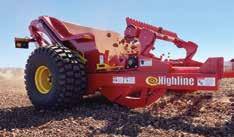

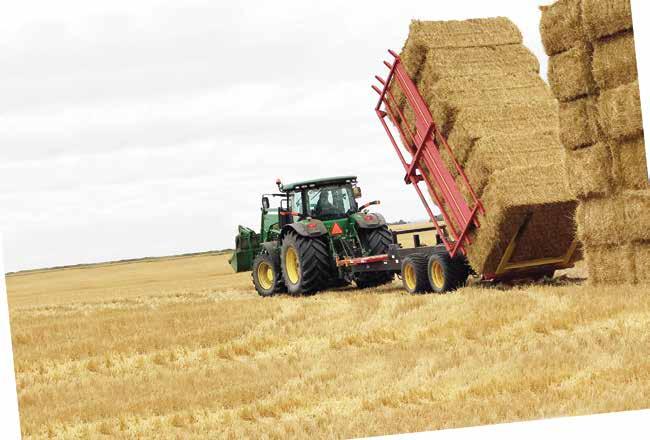

A LINCOLN UNIVERSITY PHD STUDENT AND HER SUPERVISORS ARE AT WORK ON A PROJECT THAT COULD HELP REDIRECT INDUSTRIAL FOOD SCRAPS AWAY FROM LANDFILL TO SUPPLEMENT THE DIET OF LIVESTOCK. AMONG THE POTENTIAL FEEDS THE RESEARCH IS EXAMINING ARE POTATO OFF-CUTS, APPLES PRESSED FOR JUICING, AND BREWER’S GRAINS FROM MAKING BEER.
Antonia Olszewski is carrying out her research under the supervision of a team of academics from Lincoln University, the University of Canterbury, and Manaaki Whenua Landcare Research. She is exploring how to make use of biowastes left over from food-processing.
Each year New Zealand manufacturers generate millions of tonnes of these industrial food
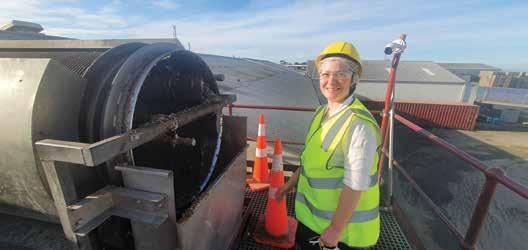
scraps and they are a cost to the national economy, society, and environment.
Antonia says when biowastes are thrown out, it means less revenue for the companies that create them, lost opportunities for feeding people, and more greenhouse gas emissions as they break down in landfill.
“If biowastes are redirected from landfills, they could be used as a supplement at times of the year when pasture is low

in volume or low in quality. They could also reduce our reliance on imported palm kernel extract. We estimate that if all of New Zealand’s edible biowaste was fed to livestock, we could reduce PKE imports by one third.”
She focused her research on pressed apples, potato scraps and brewer’s grains for several reasons. One is that they are among the country’s top five industrial food scraps in terms of volume that are edible for cows. (The other two are grape marc left over from winemaking and wheat byproducts.)
Availability and the logistics of transporting food waste economically and without spoilage are also issues when dealing with food waste. While apples are more seasonal and only available in parts of the country, potatoes and brewer’s grains are more widely available and they are available at more times during the year.
The research focuses on both the potential feed value of the three different types of food waste and their potential environmental impact. For this reason Antonia is analysing the nitrogen pathways as the food wastes are
DRIED APPLE POMACE SPRINKLED ON TOP OF CUT PASTURE READY TO BE FED TO LAMBS DURING ONE OF THE TRIALS. THE APPLE WASTE INCREASED TOTAL DIET DIGESTIBILITY OF POOR QUALITY PASTURE BY AS MUCH AS 76 PERCENT.
ANTONIA OLSZEWSKI SAMPLING POTATO PEELS FROM A PROCESSING DRUM.
digested and turned into urine and manure.
“My thesis is looking at the whole pathway of carbon and nitrogen – from importing the biowastes on-farm, to what is excreted, to how it helps pasture growth, which in turn feeds the animals again.”
The undigested biowaste has potential value to farms in the form of dung, which adds carbon and nitrogen to the soil. The research includes looking at how the dung from animals fed the different biowastes breaks down in the soil.
In February this year Antonia divided 24 sheep into pens of six and them fed cut pasture with one of the three biowastes as a supplement. A fourth group received only cut pasture.
Replacing poor quality pasture with apple waste increased total diet digestibility from 67 to 76 percent (± 6 percent), but digestibility stayed the same for the pasture with potato group (70 ± 5 percent). The dung from this feeding trial will be used in a soil experiment later this year.
The implications of Antonia’s research to date suggest that if sheep were to be offered food scraps that are rich in easily digestible sugars, such as apple, this could help to improve animal production, particularly during periods where pasture growth is slow or feed quality is poor.
Using apple as a supplement for lactating dairy cows would be useful during early lactation as it will help provide them with the
energy they need during milking.
On the other hand, apple and potato waste are low in protein, which will be useful supplements to reduce nitrogen loss when the protein in the pasture exceeds dairy cows’ requirements.
The groups of sheep that were supplemented with brewer’s grains showed a lower digestibility of 59 percent (± 5 percent) compared to the group eating only pasture.
“We found evidence that the raw potato off-cuts were quickly and almost completely broken down in dairy cow rumen fluid, compared to other biowastes, such as brewers grains and apple waste.
“Potatoes are composed primarily of easily digestible nutrients like starch and very little slow-to-digest-fibre. Brewer’s grains were broken down much more slowly and about 40 percent of the sample remained at the end of the experiment. This is caused by the high proportion of fibre that the rumen microbes need more time to break down,” Antonia says.
The brewer’s grains had a much higher protein content compared to the other biowastes and

the summer pasture.
The higher levels of protein and fibre in brewer's grains may provide a useful supplement with high sugar, low N crops such as fodder beet, particularly to dry stock or dairy cows in late gestation. To reduce nitrate leaching, brewer’s grains should not be fed in autumn when the nitrogen in the pasture is already higher than what the animal requires.
The next stage of the research is a soil experiment. It will involve combining dung from sheep that have been fed biowaste with soil in pots sown with grass seed. Measurements of the grass will be made over three months. The measurements will include the carbon dioxide fluxes of ryegrass on dung-treated soil
under light and dark conditions.
“I am interested to test the nitrogen in the urine from the sheep experiment to see if the biowastes changed the nitrogen partitioning between the urine and dung.”
Antonia will cut the grass to simulate grazing it and let it grow again three times. She will measure how much carbon is removed when the grass is cut. She expects to see the level of carbon in the ecosystem increase over time, despite temporary declines in C each time the grass has been harvested.
This will enable her to determine the carbon and nitrogen pathways among the three different food wastes as well as pasture. For instance, if more of
POTATO WASTE IS LOW IN PROTEIN AND COULD BE USED AS A SUPPLEMENT TO REDUCE NITROGEN LOSS WHEN THE PROTEIN IN THE PASTURE EXCEEDS DAIRY COWS’ REQUIREMENTS.
the consumed N is transferred to dung (instead of urine) when the animals are fed a particular food waste as a supplement. Fecal N is more stable and released more slowly into the environment.
Antonia’s research is funded through The Food Transitions 2050 scholarship program. Her supervisors are Racheal Bryant, Brett Robinson, David Whitehead and Christopher Mangwe. RC
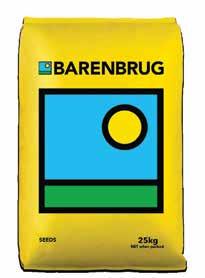
GETTING AND MAINTAINING SOIL MOISTURE CAN BE A BUGBEAR FOR CONTRACTORS AND FARMERS TRYING TO ENSURE GOOD CROP ESTABLISHMENT. ADDED TO THAT CHALLENGE ARE HEIGHTENED CONCERNS AROUND WATER MANAGEMENT AND THE COSTS THAT GO WITH IT.
Budgets are tight, so there is a lot of pressure right now on contractors and farmers but UPL NZ Otago and Southland regional manager Tom McDonald says part of the solution could be simple.
“Zeba soil conditioner is the equivalent of putting moisture down the spout at sowing and retaining it there. Zeba is proven chemistry, but it is not the hard stuff.
“Zeba is one of the all-around good guys. It is easy to apply, safe to handle, and, importantly, there are no residues. It is just very clever science that is good for people, crops, and the environment.”
Corn starch-based and super absorbent, Zeba stores water then releases it when
THE SHANNON FAMILY USED ZEBA TO ESTABLISH A SUCCESSFUL SUMMER FORAGE CROP OF RAPE, SUNFLOWERS AND ITALIAN RYEGRASS ON THEIR CENTRAL OTAGO FARM.
plants need it. Each Zeba granule can hold up to 400 times its own weight in water.
With a high cation exchange capacity, it also interacts positively with soil nutrients and supports soil microbial communities, which promotes resilience. Zeba keeps both water and nutrients at the roots, where the plants need them most. Crop growth is maximised and growth checks minimised.
Tom says Zeba has performed well in very arid areas of countries including Australia, South Africa and India. “Not only that, but in Central Otago, and conditions there can be a real test.”
Sisters Jo and Vicki Shannon farm in the climatically challenging Ida Valley. The area is very dry with hot summers and freezing winters.
The family run Perendales as the main mob, with a terminal mob of Perendale ewes crossed with Hampshire and Texel rams, along with South Devon cattle.
Jo and Vicki took part in a Zeba trial and were won over.
“It is an amazing product,” Jo says. “We would recommend it to anyone. It worked and gave plants a chance to get established. Without it, we just would not have the crops we have now.”
They planted summer crops in October to fatten lambs. Thanks in part to Zeba, the feed lasted to April, and Jo says they will use it again.
Tom says Zeba is a major breakthrough in soil moisture management. “Zeba makes
moisture from irrigation go further and last longer. For dryland systems it is potentially a crop life-saver.
“Zeba helps get seedlings at the establishment phase. That is critical, especially for high-value crops like forage brassicas, cereals, lucerne and beet. They need all the help they can get.”
While Tom acknowledges that New Zealanders are not always quick out of the blocks when it comes to new products, he says uncertainty around climate and a forecast shift to a La Niña weather pattern could reward those who do embrace the new product.
“Essentially, you get more yield for less water and that is a big saving. Zeba is relatively new in New Zealand, but I reckon it will fit right in, in no time.
“Just as we have all got used to using treated seed, Zeba is, ultimately, going to be another valuable tool in insurance for crop performance. Soon, we won’t even think twice about including it in our cropping programmes.”
He says Zeba is not a long-term solution in a crop, as performance will diminish in three to four months, but it’s an excellent start.
“When you look at the costs of irrigating, which like everything else are rising, and you think about the environment, particularly depleted aquifers and water restrictions in some areas, Zeba has a fair bit to offer.”
Talk to your local Technical Field Representative or UPL NZ for more information on Zeba. RC
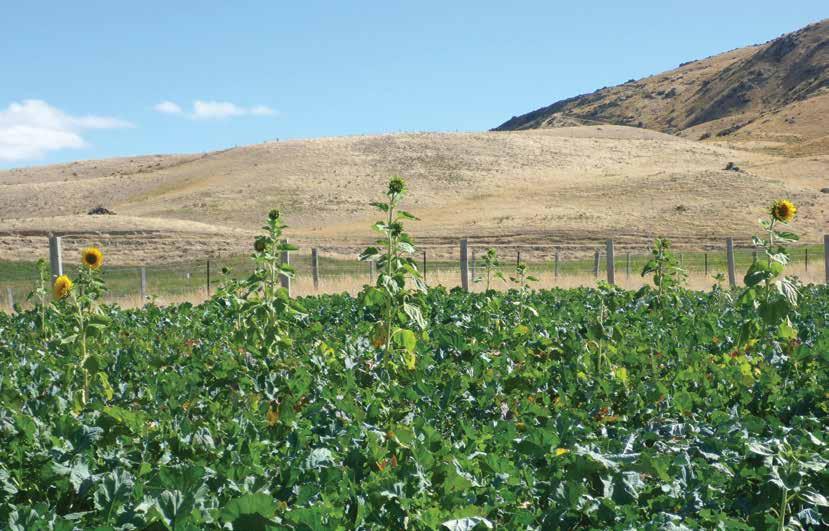


WHEN LIFE WAS RESTRICTED DURING THE COVID PANDEMIC, BRITISH RURAL CONTRACTOR WILL DUNN DIDN’T SETTLE IN AND HAMMER THE NETFLIX ACCOUNT. HE SET OUT TO ADDRESS AN ISSUE THAT HAD BEEN BUGGING HIM FOR SOME TIME.
He was frustrated that there was no digital job allocation and tracking system that rural contractors could use to assign tasks, keep track of them while they were underway, and record details of the completed work.
So he hired a software developer and got busy. The result is Ag-drive, a smartphone app that can be used not only to allocate and record work but also to automatically send invoices and prepare timesheets.
“We launched Ag-drive in June 2021. It has gained a lot of traction in the UK and Ireland and it is now taking off in Australia and New Zealand. We have grown substantially. The business now has a sales team of three plus four or five developers,” Will says.
Although other job allocation systems are available, the unique thing about Ag-drive is that it uses a GPS geolocation system similar to Uber and other digital taxi apps to track the location of tractors and other equipment.
“Some systems are driven by desktop computers or you need an expensive tablet to run them. With ours, you download the app onto your phone. There are minimal setup costs and you can tailor it to any type of job or machinery.
“Our target market is agricultural contractors but it could also be used by fencing contractors, haulage companies, or contractors running construction equipment,” Will says.
A machinery operator can record jobs using Ag-drive and get their scheduled jobs via the app on their phone. Managers can provide

a pin or a map, so operators know exactly which paddock they should be working. The assignment can also include instructions and other details about the job.
The app displays and records the location of the machine, so it is clear exactly which passes it makes when carrying out the job. It does not rely on the tractor’s GPS to record locations and movements.
Will says another feature of Ag-drive is health and safety checks. Before they begin a job, the machinery operator is presented with a list of reminders and things to check on the tractor and implement such as brake lights and tyre pressure.
“You can make the health and safety check as detailed as you like. The operator has to confirm they have carried out the check, which puts the responsibility back on the operator.”
Contractors’ farmer clients can be given access to log into the app to assign jobs, give detailed instructions and track the work as it is carried out in real time.
SOUTH ISLAND CONTRACTOR TOM MACDONALD SAYS THE AG-DRIVE APP HAS A GOOD PRESTART SAFETY CHECK, IT IS EASY TO USE AND IT SPEAKS TO HIS ACCOUNTING PROGRAM.

WITH AG-DRIVE MACHINERY, OPERATORS CAN RECEIVE DETAILED JOB ASSIGNMENTS AND RECORD COMPLETED JOBS ON THEIR PHONE.
Ag-drive also has the capacity to track all the machines on a team job, such as bulk silage, baling or muckspreading.
If you are out of connection to the Internet, jobs can still be recorded and the data will automatically upload when you are back in range.
Once they have finished a job, the operator can record the main details about the job – e.g. seeding rates, bale numbers – and this can be used to immediately push an invoice to the farmer via online accounting software.
“We are in an industry where contractors run machinery worth millions of dollars, but still send out invoices based on information that is essentially written on a of scrap paper. Ag-drive eliminates paperwork and gives you a user-friendly system to generate invoices and timesheets.
“With a few clicks you can draw up invoices from Ag-drive or you can send them through a common accounting software, such as Xero, Sage or QuickBooks. The app provides you all the information from a job quicker, so you can invoice more efficiently and get paid quicker.”
South Island contractor Tom Macdonald says he likes the Ag-drive app because it has a good prestart safety check and it speaks to Xero, his accounting program. It is also userfriendly and affordable.
Tom’s business, Green to Gold, is an arable contracting business based in Wanaka. They specialise in silage, balage, cultivation, drilling, and grain harvesting.
Tom says over the past 10 years he has used five or six different apps, and while most of them had good features, none could do everything that Ag-drive can do.
“It is awesome how easy it is to use. We have a lot of seasonal staff who we have to train on our gear. Ag-drive is simple enough that anyone can pick it up.
“Before we got it, we were using three different systems, which was clunky. We were using a job allocation app and a different safety check app, so when someone started a job they had to switch between them.
“With Ag-drive’s pre-start function, we can specify what to check in every machine. For example, in springtime there is a lot of bird activity here, and they build nests in engine bays. We have tailored the app to make sure our drivers check for that.”
When a Green to Gold machinery operator starts a job, they enter which client the work is for and then they use menus to select the tractor and implement that will do the work. The app then generates a safety checklist for both machines, which they have to fill in before they start.
“The other good thing is that Ag-drive talks to Xero, which makes the office lady’s job much easier. Years ago, I remember my father staying up to 2:00 a.m. to transfer informa-

tion from a job app to produce invoices.”
Tom says Ag-drive measures time at work, which is ideal for invoicing some services such as cartage. When invoicing is done on the basis of hectares covered, the driver can get this figure from the tractor monitor and then enter it into the Ag-drive menu.
“We have our drivers add any notes about the job that can make the office person’s job easier. The office lady won’t know if a driver is on a farm for one day or a week, so they enter JC for job complete. Then she knows it can be invoiced.”
Another benefit of Ag-drive is that Tom can provide Green to Gold’s clients with information about exactly what has been
done on their farm.
“Knowledge is power. If a farmer knows exactly what we have done for them, they know exactly what things cost. They can then make decisions the following season about whether to do the same as last year, or perhaps drop a pass to save costs or even do an extra pass to get a better seedbed and better yields.”
At a time when everyone is facing increasing costs, an easy-to-use system that provides accurate costs is gold.
To start your 14-day free trial, visit the website ag-drive.com. For more information contact NZ sales representative, Chris Tricker on 027 477 0028 or chris@ag-drive.com. RC

USING BIOSTART’S HAYKING HAS BOOSTED THE PERFORMANCE OF A LARGE CANTERBURY CONTRACTOR.
Rob Raisbeck is general manager of Quigley Contracting, and he says using Biostart’s HayKing has helped the company be more productive and efficient when baling hay and straw during the busy season.
“The ability to apply a biological preservative when needed enables us to produce consistently high-quality feed,” Rob says.
“We were looking for a preservative that is easy to handle, gentle on the machinery and, most importantly, effective in preserving the feed without any negative effects. We have found that BioStart’s HayKing ticks all of those boxes.”
Quigley Contracting is a family-owned business based in Ashburton. Rob says they are dedicated to achieving the best quality feed by using the latest technologies. They use high-density big square balers, real time bale moisture monitoring systems, and Biostart’s HayKing to significantly enhance their final product.
They are not the only ones who see the value that Biostart’s forage preservatives can provide. Farmers and contractors around New Zealand appreciate the hay and silage quality and ease of use Biostart preservatives can provide.
FIGURE 1: THE EFFECT OF HAYKING ON BALE TEMPERATURE AFTER BALING HAY AT 20 PERCENT MOISTURE.

TABLE 1: TRIALS SHOW HAY TREATED WITH HAYKING RETAINS MORE OF THE CROP’S METABOLISABLE ENERGY, DIGESTIBILITY AND CRUDE PROTEIN THAN UNTREATED HAY.

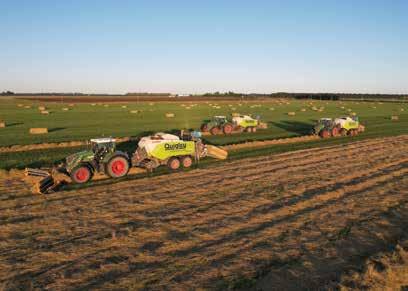
QUIGLEY CONTRACTING USES BIOSTART HAYKING BECAUSE IT IS EASY TO HANDLE, GENTLE ON THE MACHINERY, AND EFFECTIVE IN PRESERVING THE FEED.
Biostart has been developing biological products for 30 years. They have done this using extensive testing with farmers in New Zealand and Australia, to ensure their products work well and are practical for use on-farm.
Biostart’s forage preservatives can be stored at room temperature. The product is used straight from the drum and open drums can be used again in the following days. This means less work for the operator and less wasted product.
They also deliver greater productivity and better continuity of work because they are effective at slightly higher moisture levels, so you can start earlier, finish later, and carry on in damper conditions.
HayKing is made from microbial fermentation extracts. It inhibits hay spoilage microbes, such as yeast and fungi. This ensures bales store better, remain cooler after baling, and maintain better feed quality.
It is this high level of control over spoilage microbes that allows baling to be done at slightly higher moisture levels.
Figure 1 shows that the application of HayKing to hay stopped the bales heating over the first four weeks after baling. The untreated bales heated up two weeks after baling and remained warmer than treated bales for about 30 days.
TABLE 2: DRY MATTER, ME AND DIGESTIBILITY ARE SIGNIFICANTLY HIGHER IN BOTH LOW AND HIGH QUALITY FORAGE WHEN USING SILAGEKING.

The heating in the untreated bales was caused by the activity of the yeasts. These yeasts metabolise sugars in the hay as they grow and this produces heat. Once these sugars are used up by the yeasts, they are not available to feed the animal.
Heating also denatures the protein, which reduces palatability. Feed analysis of the resulting hay showed HayKing maintained higher levels of metabolisable energy (ME), digestibility and protein in the hay (See Table 1).
Biostart’s SilageKing preservative works a little differently. First it activates beneficial lactic acid and acetic bacteria that occur naturally on the forage prior to chopping and baling. These activated bacteria produce the lactic acid and acetic acid that then ensile (preserve) the forage.
Second, SilageKing inhibits the growth of spoilage microbes that are also present on forage in the paddock. These include yeasts, which heat silage pit faces, and fungi, some of which produce mycotoxins that impair animal weight gain and fertility.
Reducing spoilage microbes means more ME is retained in the silage. Trials on both high and low ME forage showed an increase in ME, dry matter and palatability when SilageKing was used (See Table 2).
MaizeKing maize preservative works similarly but has been adapted to create high quality maize silage.
HayKing, SilageKing and MaizeKing are applied straight from the drum as you bale through Biostart’s custom Ascot Pump applicators with in-cab control and volume monitor which is attached to the baler.
For more information visit the website biostart.co.nz or call 0800 274 524. RC


AS INTEREST IN PASTURE-BASED WINTER GRAZING AS AN ALTERNATIVE TO WINTER FORAGE CROPS GROWS, FINDINGS FROM LONG-TERM RESEARCH ON THE TOPIC ARE BEGINNING TO COME THROUGH.
The research suggests that hay bale grazing has a number of potential advantages, in terms of animal welfare, soil quality, nitrogen loss and farm finances.
In a hay bale grazing scenario, bales are placed in a grid pattern on pasture paddocks, and livestock graze breaks of it. Ideally, litter from the bales and the pasture’s root mat protect the soil and minimise pugging and nutrient loss. Hay litter also provides a relatively comfortable surface for animals to loaf on.
AgResearch senior scientist Ross Monaghan says the first Kiwi farmers to develop bale grazing were in Otago and Southland, but now farmers in other parts of the country are adapting it to their systems as well.
“Hay bale grazing is seen by regenerative farmers as a gentler approach to wintering animals because the paddocks are not managed as intensively. Generally farmers using hay bale grazing allocate 16m2/cow/day of pasture whereas the allocation in winter forage crops is often between 8-10 m2/cow/day.
DEANE PARKER SAYS COWS ON BALE GRAZED PADDOCKS ARE MORE CONTENT THAN THOSE ON WINTER CROPS, AND IT IS BETTER FOR HIS OWN MENTAL HEALTH BECAUSE HE DOES NOT HAVE TO MOVE ANIMALS AROUND IN MUD UP TO THE TOP OF HIS GUMBOOTS.

THE MAIN PREMISE OF BALE GRAZING IS THAT LITTER FROM THE BALES AND THE PASTURE’S ROOT MAT PROTECT THE SOIL AND MINIMISE PUGGING AND NUTRIENT LOSS.
“There are environmental benefits when the cows are not bunched up. There is less damage to soil and vegetation and urinary nitrogen is spread around more. Also the pasture usually remains in a viable state and can take up nitrogen from the soil as temperatures warm in spring, so it reduces nitrogen leaching.”
With a larger area dedicated to winter grazing, it is possible to put cows on three-day rotations. In that case, they are more settled which is better for the soil.
“Cows eat 80 percent of the hay bales and leave 20 percent as litter. It makes a good surface to loaf on. The animals are cleaner, drier and warmer, and they have higher rates of rumination.”
A perceived drawback to hay bale grazing is the prospect of dedicating twice as much area to wintering animals, which puts some farmers off.
Ross says that while this is true, pasture ground, even when it has been damaged somewhat by the winter grazing, will bounce back eventually (at times without undersowing). Ground that has been in brassicas or fodder beet requires tillage and reseeding to bring it back into production.
“In trials comparing winter cropping and bale grazing in Southland and Otago, the bale grazing paddocks sulked for a while. But when it warmed up they came away and were back in the grazing round by October.
“In an enclosed system, where you are wintering your own stock and milking off the winter paddocks, this could be a big advantage. It can make financial sense, even if it requires
more land, especially if you can avoid the cost of sending stock off to runoff paddocks.”
A recently-completed trial at Telford has highlighted the importance of soil type when it comes to winter grazing. Like many other parts of Otago, Telford has Pallic soils, which do not have as much structural integrity to stand up to winter grazing.
Paddocks in the Telford trial planted in winter brassica crops and those used for pasture-balage grazing all showed treading damage. While the pasture paddocks returned to production quicker than the cropped paddocks, there was no benefit in terms of nitrogen leaching.
Therefore, in regions with structurally vulnerable soils, other strategies – such as loafing surfaces or standoff pads – may be necessary to prevent soil damage and improve the effectiveness of a pasture-based wintering system.
Although the first farmers to experiment with hay bale grazing have been in Otago and Southland, Canterbury farmer Deane Parker is now giving it a go.
Deane and his wife Melissa manage her family’s dairy farm near Hororata in mid Canterbury. The farm is irrigated and has stony, shallow soils, and their aim is to make it a selfcontained, low input operation.

He also works closely with the Quorum Sense group of regenerative farmers. As part of that work, he observed the success that some southern farmers are having with hay bale grazing, so he and Melissa have begun

HAY BALE GRAZING IN MID-WINTER AT DEANE PARKER’S CANTERBURY DAIRY FARM. DEANE SAYS GRAZED PASTURE PADDOCKS RECOVER MUCH QUICKER THAN WINTER KALE PADDOCKS AND RETURN TO THE GRAZING ROUND BY SEPTEMBER.
to integrate it into their journey toward more sustainable farming.
They have been moving away from traditional winter forage crops, first by using a multispecies winter grazing mix. Then last year they dedicated a third of their wintering area to hay bale grazing. It was successful enough that this year they switched the whole farm to winter hay bale grazing.
“Our first experiment with winter grazing showed us that the pasture recovered much quicker than kale ground. We were able to get it back into grazing quicker, which was better for our milking income,” Deane says.
“We need twice the area for hay bale grazing as we do for a kale crop, but it is out of the grazing round for half as long. We grazed the winter pasture ground until March and then locked it up. After winter we were

grazing it again by September.”
A WINTER BALE GRAZING PADDOCK IN THE FOLLOWING DECEMBER. THE AREAS WHERE THE BALES SAT HAVE GREATER GRASS GROWTH BECAUSE OF THE EXCRETA LEFT BY LOAFING COWS.
The patches where the bales lay looked a bit rough, but in summer they grew twice as much grass as the other parts of the pasture paddocks. Deane attributes this to the viable seed that is present in the hay as well as the dung and urine left behind by loafing animals.
“The areas where the bales were had better rain infiltration, more worms and more organic matter. Well-made hay contains a lot of viable seed,” he says.
“That viable seed reduces the amount of regrassing we need to do after winter. It is not a massive saving but it all adds up.
“Some people try bale grazing with straw and balage, but balage has no viable seed. We did use some ryegrass straw, which has some viable seed, but we would not use barley or wheat straw because it is usually desiccated
with glyphosate before harvesting so it does not have any viable seed either.”
To run their entire wintering programme on hay and pasture this winter has required 1200 hay bales. Deane’s contractor Bob Searle made 400 of those bales on the farm and supplied the other 800 bales.
Along with the financial benefits of hay bale grazing, Deane says it is better for the health of the farm’s land, animals and people.
“From the animals’ point of view, they are happier. The only other place cows are as content as hay bale grazing is in a barn, and that requires a massive investment in infrastructure.
“It is also better for our mental health. It causes a lot of anxiety to move animals when you are up to the top of your gumboots in mud.” RC







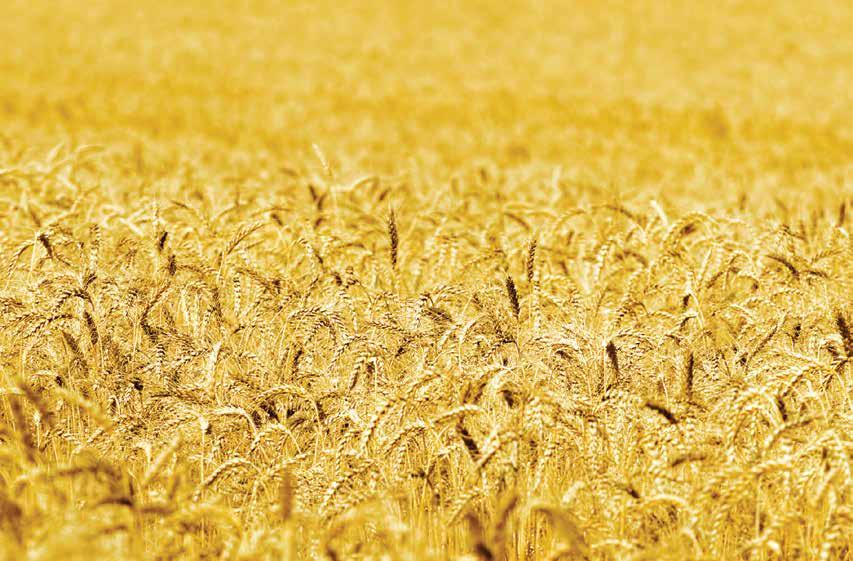
DON’T GET CAUGHT OUT - Make sure you are up-to-date!
• Over 140 new listings
• 160 deleted products
• 100 existing labels updated (new weed, pest & disease claims)
Plus the latest regulatory amendments
The definitive guide to agrichemicals registered for use in New Zealand.
A comprehensive alphabetical listing of products, active ingredients, crop & weed tables, weed & pest identification and much, much more all in one single publication. It really is the definitive agrichemical guide and the only one you’ll ever need.
Purchase a manual to receive a FREE 12-month subscription to our subscriber only website.
The website is continually updated and contains product listings, a fully searchable online product manual, a powerful search engine of weeds, diseases & pests, including photo galleries with all the agrichemical options to use on individual crops as well as up-to-date SDS’s, Haznotes and product labels, plus posts about industry news and information.
ORDER NOW to receive your FREE pair of SureShield Coveralls

SureShield Coveralls supplied by pH7, provides both protection and comfort with exceptional liquid and particulate protection. Ideal for a wide range of industrial applications. One size fits all.
Shigematsu Respirators supplied by pH7.
* Available to those who order directly from www.novachem.co.nz - while stocks last.
Print up-to-date SDS’s & Haznotes from novachem.co.nz to ensure you are compliant.
Article supplied by Barenbrug
A FAST-ESTABLISHING, FAST GROWING CHICORY CROP CAN BENEFIT FARMERS, ANIMALS AND THE ENVIRONMENT.
Barenbrug’s Graham Kerr says a chicory crop combines high dry matter yield with quick establishment, superb quality and climatic resilience to keep animals well-fed in summer and autumn.
What’s more, research has shown cows grazing chicory excrete significantly less N every time they urinate, reducing the N load in the urine patch compared to a typical ryegrass-clover pasture.
Graham says there has been a lot of information about plantain’s potential to improve environmental performance, but a chicory crop, such as Barenbrug’s 501 Chicory is potentially better.
“Chicory, like plantain, has a high water content to dilute urine, but it provides higher animal performance. This gives scope to lower greenhouse gas output per unit of product whether it's milk or meat,” he says.
The first study to directly compare urinating patterns of dairy cows grazing chicory, plantain or ryegrass was carried out at Lincoln University Research Dairy Farm in February and March 2018 by scientists from the university’s Faculty of Agriculture and Life Science.
Milk yield was similar across all three forages for the trial period. Results from this study align with earlier research showing cows grazing chicory produced more milk solids than those grazing ryegrass.
This reflects chicory’s higher summer ME, which averaged 12.3 in this trial compared with ryegrass at 11.9.
Graham says chicory’s nutritional advantage is much higher in summer dry situations. When it comes to incorporating chicory into a farming system, it is worth taking a close look at the options.
“Most chicory cultivars are perennial types. But 501 Chicory is an annual type, so it establishes quicker and can be grazed sooner. This advantage can add up to one full grazing more than other chicory cultivars over summerautumn.”
He says Barenbrug has measured the difference in DM yields between 501 and perennial chicory in two trials and it is significant. In one trial 501 Chicory grew 550 kg DM/ha more than a perennial chicory. That may not sound like a lot, but it could equate to an extra $390/ha income (based on $8/kg MS).
501 Chicory’s deep roots also improve soil structure, mine deep soil N and pull up other minerals from the soil profile.
It is ideal for effluent blocks, for example, because it soaks up both excess N and K, which are then re-distributed more evenly around the farm via the cows.
Another benefit is that it is low risk for facial eczema. Unlike brassicas, it doesn’t need insecticide sprays, and because it is tap-rooted, it is more resilient and water efficient than ryegrass in summer droughts.
It’s also recommended as part of parasite resistance management programmes for both lambs, and young beef and dairy cattle.
“Farmers in sensitive catchments like it because it establishes well via direct drill or mini-

mum till, and can be renewed into grass in autumn the same way. So they are not getting the same soil N losses as they would with full cultivation, which is better for fragile soils.
“Plus animals love eating it. It is green and leafy and consistently high in protein when pasture dries off in summer, and much cheaper than feed that arrives on a truck. You can’t ask for more than that.”
For best results, 501 Chicory should be sown early, while
LIKE PLANTAIN, CHICORY HAS A HIGH WATER CONTENT, SO IT DILUTES URINE AND CAN REDUCE NITROGEN LEACHING.
moisture is available for good germination (as soon as soil temps are 12°C and rising). Use treated seed at 10 kg/ha, drilled no deeper than 1 cm.
For more detail on Barenbrug forage cultivars, talk to your local area manager. RC
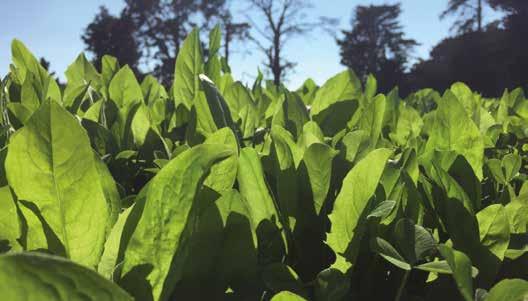
Article supplied by Pastoral Improvements
THE HEALTH OF OUR SOILS IS PARAMOUNT FOR THE SUSTAINABILITY AND SUCCESS OF NEW ZEALAND FARMING, WHICH ACCOUNTS FOR A SIGNIFICANT SHARE OF THE NATIONAL ECONOMY.
Diverse pastures are growing in popularity and they can play a crucial role in enhancing pasture productivity, improving soil health, storing carbon, and reducing methane emissions. Understanding the benefits and integrating these practices into your farming system can lead to more sustainable and productive outcomes.
Diverse pastures consist of a variety of plant species, including grasses, legumes, brassicas, cereals, and herbs, which contribute to a more resilient and productive soil ecosystem.
The varied root structures of
these plants help improve soil structure and increase organic matter. This, in turn, enhances water infiltration and retention and reduces the impact of drought, erosion and compaction that are common in monoculture systems.
Moreover, diverse pastures foster a robust microbial community. The different plant species support a range of soil microbes that are essential for nutrient cycling and disease suppression. As these microbes break down organic matter, they release nutrients in forms that plants
can readily absorb, leading to healthier, more vigorous growth.
One of the most significant environmental benefits of diverse pastures is their ability to sequester carbon. Plants capture atmospheric carbon dioxide during photosynthesis and transfer it to the soil through their roots.
Diverse pastures, with their extensive root systems, enhance this process and lead to higher soil carbon levels in more of the soil profile. Studies have shown that diverse pastures can sequester more carbon than monoculture systems.
the need for synthetic fertilisers. Emerging data suggests that fenugreek may also lower methane emissions from livestock, making it a promising crop for the future of New Zealand farming. Integrating fenugreek into pastures can help reduce environmental impact while enhancing soil health.
For livestock farmers, the shift to diverse pastures involves careful planning and management. Selecting the right mix of species for local conditions is crucial.
Soil testing and consultation with agronomists can help determine the best combinations to achieve desired outcomes.

Reboot diverse pasture mix from Pastoral Improvements is a prime example of how integrating multiple species can boost soil carbon sequestration. Recent trial data by Verdi found area sown with Reboot had a soil carbon level of 156.53 tonnes which is 37.54 tonnes greater than the control area.
They also found that with the diverse species mix, soil carbon was stored deeper in the soil profile. This is important because carbon is much more stable at depths below 150 mm. It also provides the opportunity for additional income via soil carbon credits using Verdi NZ. Integrating species like chicory, plantain, and fenugreek into diverse pastures can further enhance soil health and productivity.
Chicory and plantain are notable for their substantial root exudates, which are compounds released by plant roots that stimulate microbial activity and enhance nutrient availability in the soil.
Fenugreek is a legume, which fixes atmospheric nitrogen. It can enrich the soil and reduce
Another important factor in the successful establishment of diverse pastures is sowing depth. Due to the wide range of seed sizes in these mixes, the sowing depth should be an average between the large and small seeds. This is usually around 15-20 mm. Sowing deeper than this risks burying the small seed and preventing germination. Implementing diverse pastures may also require adjustments in grazing management. Longer rotation lengths may be needed to optimise pasture utilisation and maintain plant diversity. This can ensure that the benefits to soil health and carbon sequestration are sustained over time.
THE VARIETY OF ROOT STRUCTURES IN DIVERSE PASTURES HELP IMPROVE SOIL STRUCTURE, INCREASE ORGANIC MATTER AND FOSTER ROBUST MICROBIAL COMMUNITIES.
Diverse pastures offer a multitude of benefits for stock and soil health, carbon storage, and overall pasture productivity. By incorporating a variety of plant species farmers can enhance the resilience and productivity of their soils while contributing to environmental sustainability. Products like Reboot exemplify the potential for innovation in this space, and demonstrate that thoughtful pasture management can lead to substantial ecological and economic gains. Embracing these practices represents a forward-thinking approach to sustainable farming in New Zealand. RC
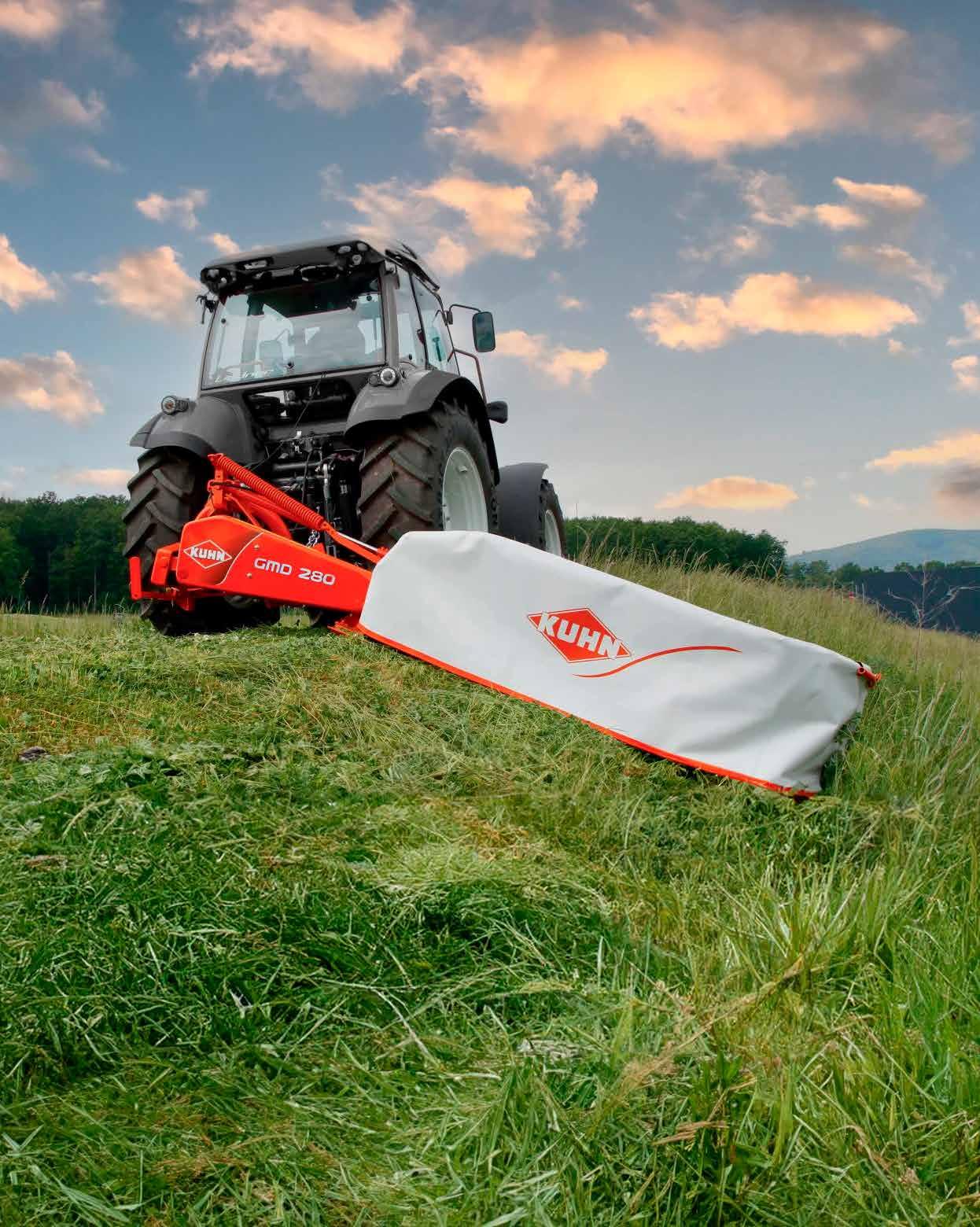








contractors, he says. For example, if there are consistently high


FOR ANY CONTRACTOR OR FARMER WHO HAS EVER WONDERED WHAT THE FINANCIAL RESULT WOULD BE IF THEY LET PASTURE WEEDS GET AWAY ON THEM, THERE IS NOW A GREAT WAY TO SEE THE ANSWER.
The new Grassmanship online app from Nufarm is designed to help Kiwi farmers get the best out of their pastures all year.
Grassmanship is free and you can tailor it to any farm or paddock. It can help quantify exactly what you stand to gain or lose by making certain spending decisions when looking after home-grown pasture.
Available at the grassmanship.nz website, it is packed with features, including several calculators. It allows farmers and contractors to compare and contrast the outcome of different weed control scenarios in terms of net return on investment per hectare.
“Farmers intuitively know old, run out pastures don’t produce as much feed as newer, higher performing pastures, just like they know maintenance fertiliser supports higher annual feed production, and improved animal genetics benefit their business,” says Nufarm North Island sales manager Richard Bell.
“However, during tighter financial times, it is understandable that they look for ways to trim on-farm costs. Feed, labour, and/or weed management programmes are typical

budget categories that come under scrutiny.
“That said, the relatively small investment from controlling weeds in pasture – particularly newly sown pasture – pays a return within six to 12 months in a range of situations.
“That is why we have loaded the Grassmanship programme with separate dairyspecific calculators for both the North Island and South Island. They cover common scenarios like spring weeds, new pasture and winter weeds.”
Maintaining clean, productive pastures year-round offers a double win, Richard says. They give farmers both higher dry matter yield and better feed quality than those that are infested with weeds.
That sets up on-going benefits. These include easier grazing management, happier animals and more milk in the vat.
Richard says, in addition to the calculators, grassmanship.nz also provides useful information to help farmers and their advisors get the optimal results from a pasture protection programme, including a range of Nufarm’s resources that support best practice.
Much of the background data is built from commonly used industry statistics and regional pasture growth data generated by Beef+Lamb NZ and DairyNZ.
The tool assumes good agricultural practice, which means using the right products at the right rates and at the right time. Spraying weeds earlier, rather than later, often yields the best results, he says.
Grassmanship.nz is the first of a suite of decision support tools for farmers and rural professionals that Nufarm plans to develop.
To find out more about the app, visit the grassmanship.nz website. RC
ash levels in the crop, then something could be wrong with the rake.
“An NIR sensor gives you the ability to monitor what is going on when you are harvesting. If the DM readings are too low, you might want to let the crop wilt a bit more. If it is too high, you might want to pull the mowers up a bit or take off the conditioners.”
Waikato’s Jackson Contracting Ltd (JCL) offers a range of services and maintains a sharp focus on quality. Its mission statement is to keep up-to-date with the latest technology so its operators can carry out work to the highest standard.
JCL managing director Jeremy Rothery says the company was founded by dairy farmers who wanted to harvest silage when it is at its peak, not when it is convenient for the contractor.
Jeremy says the company has been using a Claas NIR sensor since 2018 so they are very
familiar with the technology. He says the sensor on the new Jaguar they bought in 2023 is more accurate than its predecessor.
“It is a brilliant tool and very good for the industry. In earlier days there was a lack of understanding of NIR readings, but the technology has improved. We have full faith in its accuracy. If it is well-calibrated I would be confident to trade maize based on its dry matter readings,” he says.
“When we make silage for farmers for their own use, we are happy to provide DM measurements from the NIR sensor. We have not used the NIR readings when trading maize. Now that FAR has approved it, we will begin to see if our customers will accept it.
“A contractor trading silage is the middleman in a trade that has to be acceptable to both buyer and seller. It is a big responsibility and it has to be fair to both, so the question is whether it will be accepted by the market.”
Jeremy says when JCL first got an NIR sensor, they thought they could provide farmers yield maps showing low and high yielding parts of
their paddocks. With that data they could lift the low performing areas or farm them more economically.
“My brother-in-law is a contractor in the UK. They use yield maps a lot to do variable rate fertiliser applications and seeding, but there is not much demand for it here.”
Nevertheless, as part of its bulk silage service, JCL uses the NIR sensor to provide farmers a report detailing the quality of their crop. It covers tonnage, moisture, protein and starch.
When JCL harvests maize for trading, they do things the traditional way with a weighbridge and samples sent to a lab for testing.
“When we sample a truck with 10 tonnes of maize, the sample fills a 2-litre sandwich box. It is such a small amount compared to the NIR sensor, which looks at every kg of the crop,”
Jeremy says.
“It is exciting that we can now use the NIR for the trading side of things. We will talk with our customers, give them the option and try to ease it into the marketplace.” RC
NORTHLAND DAIRY AND SHEEP AND BEEF FARMERS TANIA AND INNES ANDERSON HAVE TAKEN THEIR OPERATION UP A BIG STEP WITH THE ADDITION OF A PEECON BIGA MIXER WAGON.
In June they had the opportunity to visit the factory in the Netherlands, where Peecon mixer wagons are made. They came away with an appreciation of the scale and sophistication of the manufacturing technology as well as some suggestions on how to use their mixer wagon more effectively.
Hokonui Farms has been in the Anderson family for more than 50 years. Innes and Tania milk 500 cows on 211 effective hectares.
To deal with the challenges of wet conditions and heavy clay and limestone soils, they have built a concrete feed pad and recently bought their 18m3 Peecon mixer wagon from FarmShop.
They run the wagon with the farm’s 110-hp tractor, and Innes says it is easy to operate and simple to maintain, thanks to its centralised greasing system.
One feature he says has been a big benefit is the mixer wagon’s highly accurate scales. The scales allow them to add precise amounts of minerals into the feed.
“Farmers hate the hassle of dusting paddocks with magnesium. That job is completely gone now, and we know each cow is getting the correct amount. We are seeing happier cows and fewer metabolic problems.
“The Peecon wagon has also been helpful in the heat of the summer. We can put about 2000 litres of water into it. When the feed is moist, the cows are not thirsty when they go back to the paddocks.
“That takes a lot of pressure off the troughs when the cows go back into the paddock. There is no more sucking the troughs dry

and breaking ballcock arms.”
The Andersons also appreciate the Peecon’s hydraulic discharge conveyor system. It makes it easy to fill feed bins without spillage, and it is easy to operate from their tractor.
With the Peecon wagon they can keep a comfortable distance from the edge of the feed bin during loading. With their previous wagon they had to be right up close to the feed bin, which was tough on the tractor’s tyres.
When Innes and Tania visited family and friends in Europe recently, they also booked in a visit to the Peeters Group, the family-owned business that produces Peecon mixer wagons and other agricultural machinery.
Tania says their host at the factory was Arno Brosens, who is passionate about his role and the story of Peeters.
“One thing that stood out for me was the quality of the machinery produced at the factory. I did not realise how much of a mixer wagon is handmade or that customers can have their own specifications, with as much as 85 percent of a machine made to order.
“The history of the factory also really captured me. It is a long-
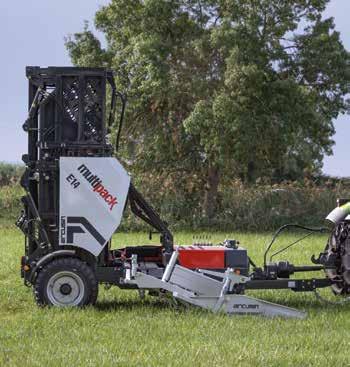
www.gaz.co.nz
E14 Multipack Bale Packer.
Compacted & perfectly aligned bundles. Increase your loading capacity. Fit more bales per load. Increased compression. Bale pack options of 8, 10, 12 or 14 bales.

INNES ANDERSON SAYS HE LIKES HIS PEECON MIXER WAGON’S ACCURATE WEIGH SCALES AND THE DISCHARGE SYSTEM, WHICH MAKES IT EASY TO FILL FEEDING TROUGHS.
The staff’s commitment also amazed Tania and Innes. One staff member they met has worked at the factory for 24 years, and Arno has been there
started on the factory floor and is now the sales and export manager.”
Innes says they were able to sit around a board table and learn about some practical modifications they could make to enhance their productivity and performance with their Peecon wagon. They were happy with their mixer but now feel even better since they have seen firsthand how impeccably the gear is made.
“I found it fascinating. I kept

fields you could fit in the factory. The laser-cutting capabilities, the thickness of the steel componentry, and the handmade parts, right down to the precision of putting on the final decals – it is all impressive,” he says.
“Peeters Group has huge contracts with China for wagons that are at least five times the size of ours.”
After the factory tour, Tania and Innes visited a robotic milking farm to see Peecon gear in
A PEECON MIXER WAGON UNDER CONSTRUCTION AT THE PEETERS GROUP’S FACTORY IN THE NETHERLANDS.
“Our visit really opened my eyes. It makes me appreciate where our money has gone. It is an investment in innovation, quality and plenty of after-sales care.”
For more information visit the website farmshop.co.nz or call
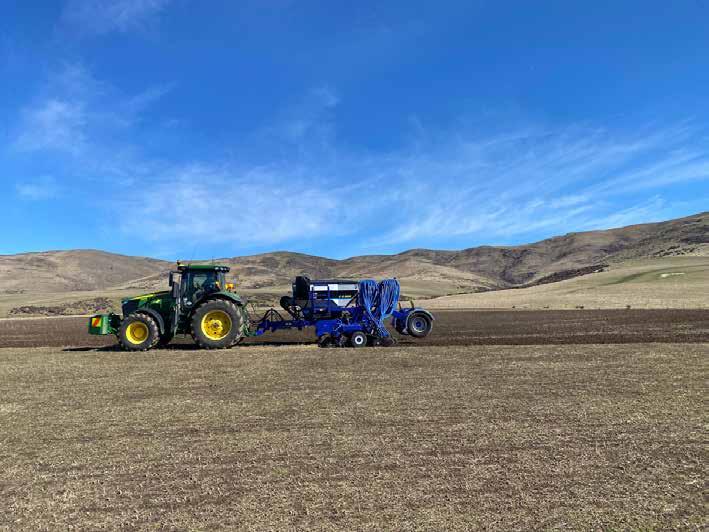




IN MODERN AGRICULTURE EFFICIENCY AND PROFITABILITY ARE PARAMOUNT. SUCCESSFUL FARMERS AND CONTRACTORS CONTINUOUSLY SEEK WAYS TO MAXIMISE THEIR RETURN ON INVESTMENT BY MAINTAINING SUSTAINABLE, HIGH PRODUCTIVITY.
Vantage NZ’s mixed fleet technology provides a means to achieve this. It offers a cost-effective approach that can integrate existing and new equipment to enhance farm operations.
The high cost of acquiring and maintaining machinery is one of the biggest challenges farmers and contractors face. Traditionally they had to invest in brandspecific equipment to get new technology, which could lead to substantial capital costs.
Vantage NZ’s mixed fleet options provide an alternative because they can work with a rage of machinery, regardless of
A FORAGE CROP THAT THREE RIVERS CONTRACTING HAS SOWN WITH AUTOMATIC ROW SHUT OFF.
brand or model. This flexibility enables contractors and farmers to use their current equipment alongside new technology. This can significantly reduce the need for large-scale investment.
Southland company Three Rivers Contracting offers a full range of services from their base at Wyndham. Those services include baling and bulk silage harvesting, cultivation, precision planting fodder beet and swedes, effluent management and cartage.
The two owners of Three Rivers Contracting – Jeff Robinson and Johnny McEwan – have a focus on quality. They are registered contractors with Rural Contractors NZ, a certification that ensures the contractor is committed to provide the best possible service.
Johnny says while they have a John Deere tractor and forage harvester with Greenstar GPS, the rest of their mixed fleet uses Trimble’s signal for guidance.
“We use the Trimble signal in our Valtra tractors, our Case IH Puma 240, and our Krone Big M self-propelled mower. We have Trimble monitors in the Case, the Big M and one of the Valtras. The other Valtras all have AGCO monitors.
“We use the Puma on our precision planter and the Trimble


A TRIMBLE GUIDANCE CONTROLLER MOUNTED ON THREE RIVERS CONTRACTING’S BIG M SELF-PROPELLED MOWER.
monitor gives us section control and automatic row shut off.
“Our old Valtra 174 has a Trimble CFX 750 monitor. I think its almost obsolete now but it still gives us adaptive curves when we are roller drilling, which lets us drill cleanly in some of the tricky, ugly paddocks we work in.”
It is straight forward to use the Trimble signal with the AGCO monitors in the other Valtra tractors, Johnny says. “We only use them to do AB lines and guidance but it is straightforward and easy to use.”
A unique way that Three Rivers Contracting uses Trimble guidance is to space silage bales out on consistent spacings in winter forage paddocks. They can set an initial A-B line and then specify the gap that they want between bales. Then, when they drive at 90° to the A-B line, the monitor tells them when to drop the bale to maintain the gap.
Using Trimble with a mixed fleet can optimise the performance of all machinery on the farm or contracting business. Managers can synchronise the operations of different types of equipment to increase efficiency.
For instance, GPS and automated steering systems can be implemented across different brands of tractors and harvesters, ensuring precise and coordinated fieldwork.
Another advantage of Vantage NZ’s mixed fleet offerings is reduced maintenance and operational costs. With a mixed fleet,
SOME OF THE TRACTORS AND SELF-PROPELLED UNITS IN THREE RIVER CONTRACTING’S FLEET USE TRIMBLE MONITORS AND THE OTHERS USE THE TRIMBLE GUIDANCE SYSTEM THROUGH THEIR OWN MONITORS.
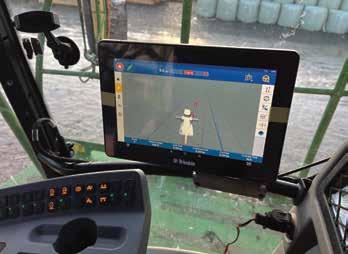
THE PRESENCE OF FUNGAL PATHOGENS CAN REDUCE THE YIELD AND QUALITY OF WHOLECROP SILAGE AND THEREFORE ADVERSELY AFFECT THE PRODUCTIVITY OF LIVESTOCK THAT FEED ON IT. THE CORRECT FUNGICIDE CHOICE AND TIMING IS IMPORTANT TO PROTECT THE POTENTIAL OF THIS IMPORTANT LIVESTOCK SUPPLEMENT.
A new foliar fungicide to protect barley crops from ramularia leaf spot and scald is now available to farmers.
Miravis Flexi is a fourth generation SDHI fungicide (Group 7) from Syngenta and is powered by the active ingredient Adepidyn technology.
Syngenta New Zealand technical services lead Paul Hassan says Adepidyn technology is a new active for barley growers and it offers powerful, long-lasting control of fungal diseases.
“Barley growers understand that ramularia leaf spot and scald can both cause significant yield losses if not properly controlled,
so they will be pleased to know that, based on seven years of pre-release trials by Syngenta and our industry partners, “Miravis Flexi provides excellent control of both diseases. Multiple trials on ramularia have demonstrated that it can achieve significantly higher levels of control than older generation SDHI fungicides,” Paul says.
After applying Miravis Flexi preventatively, a reservoir of Adepidyn technology is formed within the waxy layers of the leaf.
Once inside the leaves, the active ingredient moves acropetally (from base to tip) at a steady rate and over an extended period. This effectively protects the whole leaf and delivers very long-lasting disease control.
“The yield-building leaves are protected from the damaging effects of diseases for longer, keeping the canopy green and driving yield.
“Miravis Flexi is a solo-active formulation, which means growers have the flexibility to add the most suitable tank-mix partner to control the spectrum of diseases that present a threat at the time,” Paul says.
“It has been thoroughly tested with other products and has shown excellent compatibility with a wide range of other fungicides,

farmers can select the best machinery for specific tasks, and still ensure that it is used optimally and not overburdened.
Selective usage can extend the life of machinery, reduce wear and tear, and lower the repair costs.
Every farm and contracting business is unique. It has specific needs depending on its size, crops, and geographic location.
Vantage NZ products and services are
adaptable and can be tailored to meet the requirements of different operations.
Whether a business requires advanced irrigation systems, precision planting technology, or efficient harvesting, Vantage NZ can integrate these elements into a cohesive and cost-effective system.
As agricultural technology evolves and the sector faces economic and environmental challenges, it is important to make smart
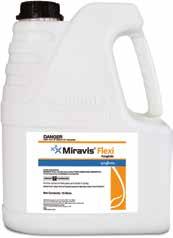
MIRAVIS FLEXI IS A GROUP 7 FUNGICIDE THAT IS APPLIED PREVENTATIVELY AT A RATE OF 1.2 LITRES/HA IN A MIXTURE WITH ANOTHER APPROVED FUNGICIDES.
insecticides and plant growth regulators that may be used in a tank mixture with it.”
Miravis Flexi is best used at T2 – typically GS 39-49 – to take best advantage of its high efficacy on ramularia. When applied at this stage, it will keep leaves green during grain fill. This timing also complies with its withholding period.
Miravis Flexi should always be applied preventatively and at a rate of 1.2 litres/ ha in mixture with another approved, non-cross resistant fungicide recommended for the control of the same target diseases. The addition of an approved triazole fungicide is recommended.
Make no more than two applications per season or any foliar sprays containing a Group 7 fungicide.
“Syngenta has a long history of providing high-quality fungicide solutions to the cereal market including Amistar and Elatus Plus,” Paul says.
Purchases of Miravis Flexi help growers qualify for free nozzles along with any other Syngenta products purchased.
For more detail, contact your local Syngenta territory sales manager or your local cereal agronomist. RC
SYNGENTA’S MIRAVIS FLEXI IS A FOURTH GENERATION SDHI FUNGICIDE THAT PROTECTS BARLEY FROM RAMULARIA LEAF SPOT AND SCALD.
investments. Vantage NZ can be a trusted partner that helps farmers and contractors navigate these complexities.
In particular the ability to use Trimble products in a mixed fleet is a great way to futureproof a business.
If you would like to know more about Vantage NZ’s mixed fleet technology, contact the Vantage NZ team on 0800 462 862 or visit the website vantage-nz.com. RC
The new benchmark in seeder versatility. No matter the landscape, the EasyDrill can adapt so you can seed on tilled soil, direct seeding or live cover. With the ability to modulate pressure levels from 0 to 250 kg, the EasyDrill effortlessly operates in both wet and dry conditions. Transition seamlessly to direct seeding without compromising quality. In a single pass, the EasyDrill can seed four different products, at four different rates, by separating two seeding depths.
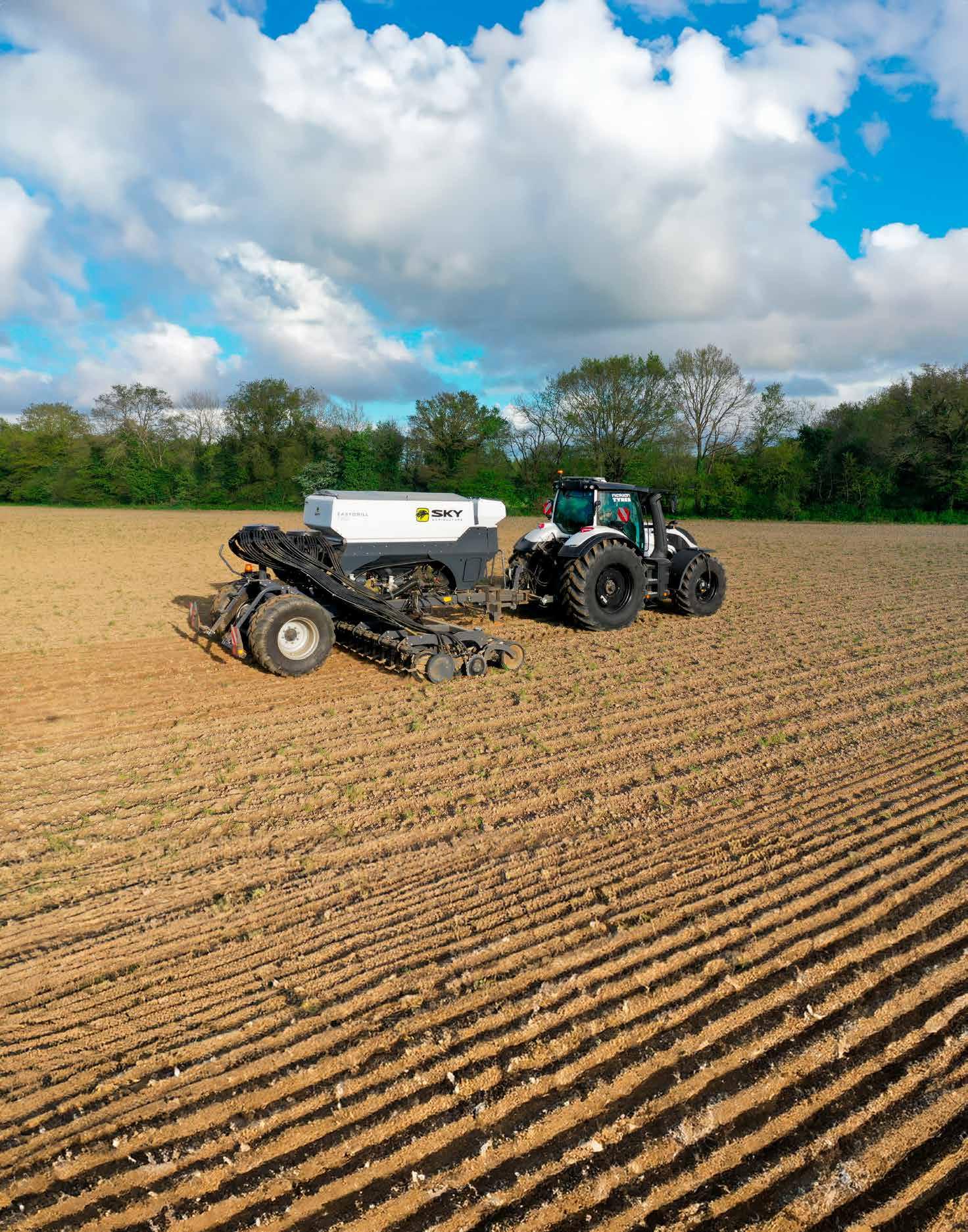
166mm Row spacing 3-8m Working width
2250-5100L Hopper capacity
Capable of seeding 4 di erent products
KUHN HARVESTING EQUIPMENT HAS BEEN AWARDED SEVERAL INTERNATIONAL AWARDS INCLUDING THE FARM MACHINE OF THE YEAR AWARD AT TWO LEADING AGRICULTURAL FAIRS.
At Agritechnica 2023 Kuhn’s FC 13460 RA mower-conditioner with swath grouper won the 2024 Farm Machine of the Year award.
The FC 13460 RA offers a remarkable leap in high output and mowing efficiency thanks to its variable working width of 12.4m to 13.4m.
Kuhn New Zealand brand manager Andrew Johnson says the FC 13460 RA mower-conditioner has the capacity to enhance farmers’ productivity around the world.
“By harnessing new technology and challenging existing standards, Kuhn is keeping farmers ahead of the curve,” Andrew says.
Kuhn's reputation for excellence in agricultural machinery was further enhanced at the 43rd edition of the International Agricultural Machinery Fair (FIMA) in Zaragoza, Spain early this year.
At the fair, Kuhn's GA 8131 CL central delivery rake was recognised for its innovation. It took home the prize for Technical Novelty in the category of ‘Driven Machines and Stationary and
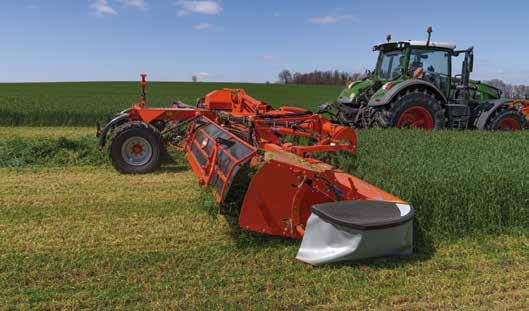
Mobile Installations’.
The award highlights the GA 8131 CL's cutting-edge design and advanced features, which contribute to its superior performance and reliability in the field.
Awards to the Kuhn FC 13460 RA mower-conditioner and GA 8131 CL rake are just the latest awards the company has earned.
“Year-on-year we have been honoured to have a product from our core range recognised as Machine of the Year in its category. This is a testament to our dedicated staff and their commitment to the agricultural industry.
“Challenging the standard and leading farming innovation into the future is something Kuhn
Group have prided itself on since its foundation in 1828,” Andrew says.
Another prominent machine in Kuhn’s harvesting equipment range is the high-performance VBP 7160 iD baler-wrapper.
The Kuhn VBP 7160 is an 'Intelligent-Density' model designed to produce bales with up to 25 percent higher density in tough, dry straw conditions.
Kuhn’s patented i-Dense density regulation system is a twintension arm system for optimal tension distribution. The i-Dense system ensures a reliable bale start in all crop conditions.
Andrew says the result is perfect bales in dry straw, wet

THE KUHN FC 13460 RA MOWER-CONDITIONER WON THE 2024 FARM MACHINE OF THE YEAR AWARD AT AGRITECHNICA
autumn grass and everything in between.
“By adapting the baling pressure to specific circumstances, the bale start is guaranteed, bale formation is always optimal and you avoid unnecessary power consumption.”
Beyond increased density, the VBP 7160 iD features an upgraded driveline and transmission components, which deliver significant cost savings. With lower costs, you can achieve more profitable baling, whether in conventional crop production or in the most demanding environments.
Competitive finance offers are available from Kuhn throughout the season. The combination of financing and award-winning technology can give peace of mind to anyone who wants to keep ahead of the curve and maximise results. RC
IN FEBRUARY 2024, ITS INNOVATIVE FEATURES EARNED KUHN'S GA 8131 CL CENTRAL DELIVERY RAKE A MAJOR AWARD AT THE AGRICULTURAL MACHINERY FAIR (FIMA) IN SPAIN.








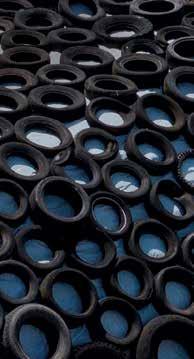
PERFECT PARTNER PASTURE’S




















FENDT NOW OFFERS A TWO-ROTOR RAKE WITH ALL THE ADVANCED ISOBUS-BASED FUNCTIONS OF ITS LARGER FOUR-ROTOR MODELS.
The name of the new Fendt Former 920 C Pro rake says it all. It is labelled the 920 because of its 9.2m working width, the C stands for central delivery, and the Pro designations is for models with ISOBUS.
A non-ISOBUS version of the Former 920 C is also available.
AGCO product managing manager Mark Hamilton-Manns says with the help of ISOBUS, operators can set the Former 920 C’s working and swath width, the raking height, and the intensity of automatic height control directly from the tractor cab.
“ISOBUS control of the rake can be fully integrated into the tractor terminal. You can assign the advanced functions the system offers directly to the tractor’s joystick.
“ISOBUS control enables individual lifting of the rotors. Individual lifting can eliminate double processing of the crop and gives efficient raking, even on wedge-shaped paddocks, slopes and headlands.
“Individual lifting also enables the Fendt Former 920 C Pro to provide section control. Section control detects the areas that have already been raked and automatically raises the rotor as soon as these areas are reached.
“This reduces the chance that dirt will contaminate the crop, increases the efficiency of raking and makes the operator’s job easier,” Mark says.
Another feature is adjustable headland
WITH
lift, which allows the lift height of the rotors at the headland to be adjusted in five stages using the terminal.
Electro-hydraulic individual lifting can be ordered as an option on the standard version of the Former 920 C (without ISOBUS).
Mark says the ISOBUS system on the Fendt 920 C Pro includes Fendt’s proConnect, which has two main functions – flexHigh automatic height adjustment and the myMemory menu of saved settings.
“To optimise raking performance, flexHigh automatically adjusts the working height of the tines to match the forward speed of the tractor. If the forward speed increases, flexHigh lowers the rotors and regulates the distance between the tines and the ground. This minimises the amount of crop that is lost during raking.
“If the forward speed slows, flexHigh raises the rotors to prevent dirt from contaminating the sward. This significantly increases output, even when raking high-yield crops.”
Fendt’s myMemory management system stores such settings as the working width, swath width and raking height. At the push of a button, the machine moves into its most compact transport position when the work is done.
When you get to the next job, the previously saved settings are recalled at the touch of a button and the machine moves to the last settings fully automatically. This reduces operating errors and reduces set-up times.
With an ISOBUS-capable tractor, all functions can be operated via the joystick and the tractor terminal. The simple, clear display makes it easy to operate the Former 920 C Pro and the user interface is completely opti-
mised for FendtOne.
“Whether it has ISOBUS or not, the new rake has Fendt’s patented SteerGuard rotary shaft steering system,” Mark says.
“With SteerGuard, the design of the steering axle within the main frame protects the pivot shaft but still enables precise steering, even after many years of use.”
The design and build of the new rake are also impressive. A maintenance-free, bolted rotor head and long maintenance intervals of the PTO shafts reduce the maintenance costs. Each rotor is equipped with its own independent overload protection.
To make the operator’s life easier, a hectare and hour counter makes it easier to calculate the work performed and qualifies the machine for an extension of the warranty.
Fendt Former rakes have several features that improve ground tracking. The rotors’ jet effect and the double swing arm for the cardanic rotor suspension help to produce high-quality forage.
Operators can steplessly adjust the longitudinal and transverse tilt of the rotor frame while large tyres and spring relief on the lift arms protect the ground. Spring relief on the lift arms shifts some of the weight of the rotors onto the main frame, so it is easier for the rotors to travel over rough ground.
A number of functions simplify transport and keep set-up times to a minimum. The transport height of the Fendt Former 920 C with attached tine arms is less than 4m. Three or four tine arms can be removed to reduce the transport height further.
Options include high-performance LED work lights. RC

Article supplied by Carrfields
PLACING FERTILISER WITH THE SEED WHEN PLANTING MAIZE HAS NOW BECOME STANDARD PRACTICE IN EUROPE.
With new climate challenges, fertilisation strategies for maize have been undergoing change for several years. The aim is always to supply plants with nutrients earlier to compensate for weather conditions and to support crop development to maintain yields.
After sowing, maize has to emerge quickly and evenly. The maximum possible yield is determined by the formation of the cobs at an early stage (four to eight leaves).
Therefore at this stage, the availability of nutrients is essential for the plant. But it can still be cool at that time. For example, in many parts of Europe the soil temperature is below 15° C.
This means that mineralisation is not yet taking place, so the plants are not receiving lots of nutrients from the soil. Moreover, the subsurface fertiliser deposit cannot yet take effect as it has only been opened up by the plant to a limited extent.
At this time of the year, warm and cold temperatures often alternate, making nutrient uptake more difficult. Also maize plants at this point have only formed a rudimentary root system so their nutrient utilisation is rather poor.
The nutrient demand of maize varies enormously over the course of its development stages. At the same time, nutrient availability and nutrient uptake change too.
During the early stages of development – during the switch from grain to root nutrition – the supply of N and P is crucial. During this period, the demand of maize for N and P is highest while the uptake rate in relation to the dry matter formed is lowest.
After this, the requirement for nitrogen and phosphorus increases until the blossoming stage. During this phase, the underground fertiliser depot is
already fully available. As the soil gets warmer, mineralisation and additional supply from the soil or from organic fertilisers also increase.
Therefore, in some regions, liquid manure is applied at the time of stem extension. This additional application should provide the largest possible daily nutrient supply.
To counteract the problem that nutrients are not fully available in the soil after seeding, the trend in Europe is towards a concentrated input of starter nutrients. The amount depends on the type of soil, the availability of nutrients already present in the soil, and the climatic zone.
When sowing early in somewhat colder temperatures, the starter nutrient application is more important than in regions where the soil heats faster or where seeding is carried out later.
The soil’s general nutrient supply is also very important. In soils where the supply is excellent – for example, due to the long term use of organic fertilisers – starter fertiliser plays a rather minor role.
In poorly supplied soils, a targeted nutrient input close to the seed makes sense to supply the plants as early as possible.
The starter nutrient input can be applied in the form of granular or liquid fertiliser which is placed near the seed in the seed furrow. This ensures an efficient nutrient

use because the first roots can absorb the concentrated fertiliser.
In dry soils, liquid fertiliser’s advantage is that it is readily available to the plant. Even small quantities of liquid fertiliser are sufficient to ensure an ideal supply of nutrients to the plant.
The big advantage of solid fertiliser is that it can be mixed for different variants and compositions. Logistics and market availability are important too, and granulated fertiliser is more widespread in many markets.
Granulated starter fertiliser is easier to handle. Anyone who can handle seed, can normally also handle solid fertiliser.
Whether using solid or liquid starter nutrients, the point is not
HEAVILY STIMULATED FINE ROOT GROWTH IN MAIZE. THE REQUIREMENT FOR NITROGEN AND PHOSPHORUS INCREASES UNTIL THE BLOSSOMING STAGE.
to apply large quantities of nutrients. The objective is to concentrate small amounts of nutrients and make them available to the plant close to the primary and secondary root system to encourage youth development.
The main nutrient supply still comes from the underground deposit, organic fertilisation or the additional nutrients from the soil.
This article originally appeared in Issue 28 of TerraHorsch. RC

YEARS AGO, A PERSONAL TRAGEDY SPARKED AN IDEA THAT WOULD RESONATE AROUND THE GLOBE.
Following the loss of a close family member to breast cancer, Agpac sales representative Sam Southcombe suggested using the colour of silage film to raise awareness and funds for breast cancer. This simple yet powerful concept led to the creation of a pink silage film by Agpac’s premier stretch film supplier, TrioWorld.
Agpac was the first company in the world to offer the pink film and it dedicated a portion of sales to supporting Sweet Louise, an organization that provides care and resources to patients battling breast cancer.
AGPAC AND ITS SUPPLIER TRIOWORLD WERE THE FIRST IN THE WORLD TO DEVELOP PINK SILAGE WRAP TO RAISE AWARENESS OF BREAST CANCER.
The pink film initiative took root, blossomed, and captured the hearts and minds of agricultural communities across the globe. Trio expanded the pink wrap campaign to Sweden, Germany, Switzerland, Austria, the UK and Ireland the following year.
Pink silage film became an international symbol of hope and support for breast cancer awareness. Vivid pink bales are now a common sight in fields and farms, and they serve as a constant reminder of the fight against the devastating disease.
Building on the success of the pink silage film, TrioWorld and Agpac introduced a blue silage film to support prostate cancer patients and a yellow film to support children with cancer.
From 2024, Agpac has formed a partnership to support BluBlokes, an initiative focused on raising awareness for men’s health issues, including both prostate cancer and mental health.
With the TrioWrap Plus Blue stretch film, the charitable reach of the coloured films
has grown, ensuring that the conversation around health and well-being is inclusive and comprehensive.
Now, 10 years later, more than 13 million bales have been wrapped in coloured silage film and over €1.7 million have been donated to the causes they stand for.
Agpac's colourful silage films are more than just agricultural tools, they are beacons of philanthropy and social responsibility.
Through their continued support of Sweet Louise and BluBlokes, Agpac and Trio World have demonstrated the power of innovation and community spirit. As this movement celebrates its 10th anniversary, it stands as a testament to the impact that a single idea can have when nurtured with care and commitment.






Agpac’s dedication to using their platform for the greater good not only underscores their leadership in the crop packaging industry but also the commitment to creating a positive impact in the lives of countless individuals and communities worldwide. RC



KVERNELAND HAS EXPANDED ITS OFFERING IN THE TRIPLE MOWERCONDITIONER SEGMENT WITH TWO NEW COMPACT MODELS DESIGNED FOR LONG PRODUCTIVE WORKING DAYS. THE KVERNELAND 5387 MT HAS A WORKING WIDTH OF 8.75M AND THE 5395 MT HAS A WORKING WIDTH OF 9.5M.
Both models are based on Kverneland’s 53100 triple mower series platform, which offers such well-established features as QuattroLink suspension, dual position conditioning hoods, and hydraulic adjustment of both the working width and overlap.
Kverneland triple mowers are also available with belt mergers, which can deliver the perfect swath to the harvesting implement.
Conditioner options for the KV 5387 are SemiSwing steel tines or rubber roller conditioners, while the wider KV 5395 features Semi Swing steel tines.
The KV 5387 has two 3.2m eight-disc rear cutter bars which are easy to operate for tractors starting at 180 hp. The KV 5395 has two rear 3.6m nine-disc cutter bars which, combined with the front mower, give it a 9.5m working width. They can be managed by tractors 200 hp and up.
The rear mowers are ideally paired with a 3.2m or 3.6m KV 3330 FT front mower with SemiSwing steel tines or KV3330 FR with roller conditioners. Both versions have a dual adjustment conditioner hood.
Both feature Kverneland’s round cutting discs and the fully welded cutter-bar, which are standard features throughout their range of disc mowers and mower conditioners.
The KV 5387 MT and KV 5395 MT are also available with BX belt mergers. The belt merger offers new possibilities for efficient crop collection to improve output and forage quality.
BX swath belts can work in a large range of crops and crop volumes. This includes heavy first cut silage, cereal silage, and fragile crops like lucerne.
Featuring adjustable high-speed belts that will operate up to 1500 rpm, BX belt mergers can carry high volumes of crop and place it into even, well-formed swaths. The belt speed can be adjusted to make perfect swaths to suit the following implement, whether it is a baler or a forage harvester with wide pickup.
Open center tractor hydraulics and the preselection control box, which comes standard with the belt mergers, power both Kverneland 5387 MT BX and 5395 MT BX. Oil requirement for BX versions of the new triple mowers is a
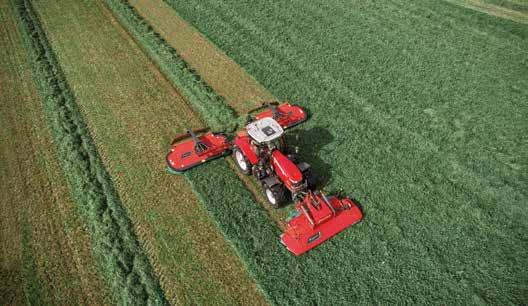
WHEN FITTED WITH BX MERGERS, KVERNELAND TRIPLE MOWERS CAN DELIVER EVEN, WELL-FORMED SWATHS THAT ARE TAILORED FOR BALERS OR FORAGE HARVESTERS.
minimum of 60 litres/min.
Just as with the flagship 53100 MT BX, the merger belts can be removed in less than 10 minutes. Once the BX belts have been removed, they can be parked safely on specially designed transport rollers. This means, you can easily leave unnecessary weight at home when crop merging is not required.
Kverneland’s unique QuattroLink suspension concept provides accurate ground following and a generous working range. QuattroLink uses four suspension arms fitted onto a fixed carrying arm, which provides the mowing unit with exceptional flexibility so it can adapt to uneven ground contours.
It gives a mowing pattern with a vertical working range of 400 mm upwards and 300 mm downwards and a transverse adaptation range of 30°. The mower floats over the ground and the operator can adjust its height accurately and instantly.
The 100 percent non-stop breakaway system offers protection across the full working
width of the cutter bars. There are no limiting factors on the inside part of the mower. If it should hit an obstacle during work, the mowing unit instantly moves backwards and up, and then returns to its original position.
Ground Pressure is taken care of hydraulically on both models with large pressure gauges visible from the tractor cab for ease of setup and reference.
KV 5387 and 5395 MT mowers fold into a safe transport position at an angle above 90° for stable weight distribution. An option is for the outer guards to fold hydraulically into transport position.
Strong and stable parking feet for vertical parking are standard to minimize space during storage.
The new Kverneland 5387/5395 MT takes all the strong features of the well-established 10m triple mower 53100 MT into a smaller package. This is a productive, easy to handle and versatile mower combination to suit Kiwi contractors and large scale farmers. RC
KVERNELAND’S QUATTROLINK SUSPENSION SYSTEM GIVES REAR MOWERS ACCURATE GROUND FOLLOWING AND A GENEROUS WORKING RANGE.

Article supplied by Orion AgriScience
SUCCESSFULLY CONTROLLING WEEDS IS IMPORTANT TO ACHIEVE MAXIMUM YIELD IN MAIZE GRAIN AND SILAGE CROPS .
Weeds compete for water, nutrients and light, which affects photosynthetic efficiency, dry matter production, crop health and yields. In addition, certain weeds can harbour pests and diseases that may contribute to yield loss.
Orion AgriScience is a leading supplier of maize crop protection products. With a focus on delivering practical and effective solutions to better meet the needs of the farming industry, Orion AgriScience products are designed for New Zealand and trusted to perform under local conditions.
With 23 herbicide, insecticide, and fungicide products registered for maize, Orion has the products New Zealand farmers and growers need to maintain their competitive edge.
Effective weed control begins before planting. A properly prepared seedbed can reduce weed problems and is a key factor in establishing a good maize crop.
Orion’s quality glyphosate
POST-EMERGENCE WEED CONTROL IS ESSENTIAL TO PREVENT WEEDS FROM ESTABLISHING AND COMPETING WITH THE MAIZE CROP.

products in combination with Silmaxx surfactant or penetrant pre-planting give extended grazing and lessen the time interval between the previous crop and this season’s maize crop.
Pre-emergence herbicides control weeds following germination and before they emerge. An effective pre-emergence herbicide programme provides weed control during the sensitive time of early crop establishment.
The Orion range includes products with five different modes of action to deliver pre-emergent control of both broadleaf and grass weeds in maize. They are:
• Ace (Acetochlor 840 gm/litre)
• Asset (Terbuthylazine 500 gm/litre)
• Atraflow (Atrazine 500 gm/ litre)
• Charger (Metribuzin750 gm/ kg)
• Chord (Thifensulfuron-methyl 750 gm,/kg)
• Corral (Alachlor 480 gm/litre)
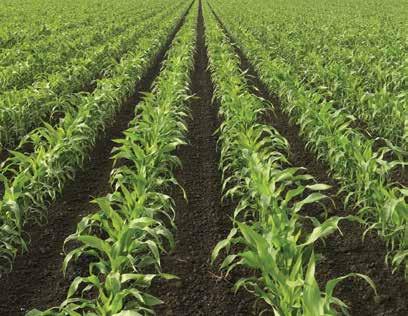
• Cutter/Cutter Safe (Acetochlor 840 gm/litre and alphacypermethrin 6 gm/litre)
• Dominator (Mesotrione 480 gm/litre)
• Guvnor Gold (S-metolachlor960 gm/litre)
• Sylon (Acetochlor 840 gm/ litre)
Following germination postemergence weed control is essential to prevent weeds from establishing and competing with the maize crop. Early herbicide application is important as weeds that emerge with the crop are more competitive than those that emerge after the maize has established.
The Orion range offers four different modes of action targeting broadleaf and grass weeds. Options are:
• Asset (Terbuthylazine 500 gm/litre)
• Atraflow (Atrazine 500 gm/ litre)
• Bandit (Dicamba 480 gm/ litre)
• Blast (Flumetsulam 800g/kg)
• Dominator (Mesotrione 480 gm/litre)
• Nico Ultra (Nicosulfuron 60 gm/litre)
• Void (clopyralid 300 gm/litre)
• Atragranz (Atrazine 900 gm/ kg)
Regular monitoring of the maize field is crucial for effective weed management. Early detection of weed problems allows for timely intervention. Keep track of any weed species present and their growth stages to choose the most appropriate control methods.
IT IS IMPORTANT TO APPLY POST-EMERGENCE HERBICIDES EARLY BECAUSE WEEDS THAT EMERGE WITH A MAIZE CROP ARE MORE COMPETITIVE THAN THOSE THAT EMERGE AFTER THE CROP IS ESTABLISHED.
Weeds can harbour pests and diseases that may contribute to yield loss as well as encourage invertebrate pests such as slugs. Options include:
• Dusk slug bait (Iron complex 10 gm/kg)
• Cypher (Alpha-cypermethrin 100 gm/litre) and Chlor-P (Chlorpyrifos 480 gm/litre) foliar applied insecticides
• Patrol (clothianidin 600 gm/ litre) and Acclaim (imidacloprid 600 gm/litre) insecticidal seed treatments
• Manco (Mancozeb 750 gm/ kg) and Convoy (pyraclostrobin 250 gm/litre) fungicides, which can be combined with their preand post-emergent herbicides to provide complete protection packages for maize.
Effective maize weed and pest control involves a combination of pre-planting preparation, strategic herbicide, insecticide, and fungicide use, and ongoing monitoring.
By adopting the Orion AgriScience range of maize products, farmers can minimise the impact of weeds and pests, enhance maize productivity, and improve quality and yield. RC


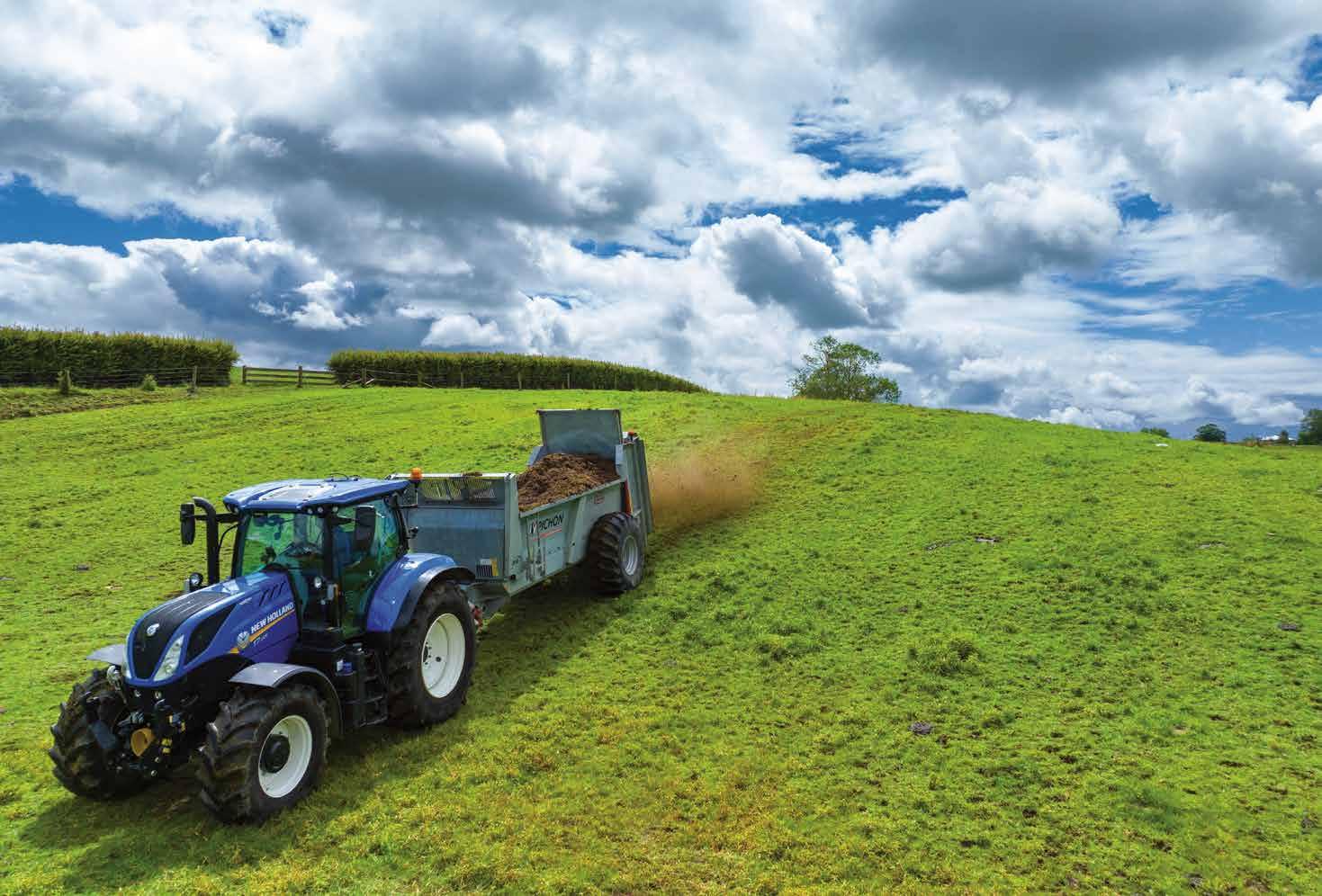



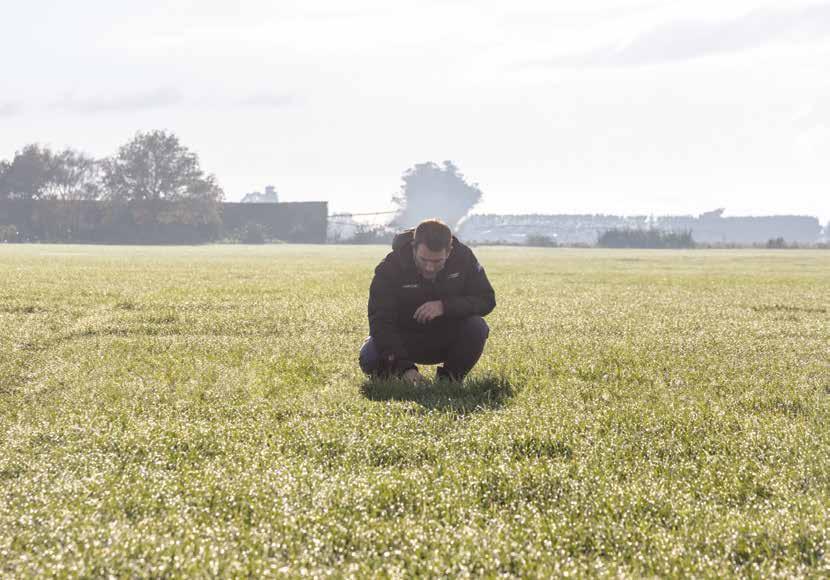
THE BEST FORAGE COMES FROM HIGH QUALITY GRASS, MAIZE, LUCERNE, CLOVER, HERBS AND FODDER BEET. IN THIS FEATURE NEW ZEALAND’S LEADING SEED COMPANIES TELL US ABOUT THEIR LATEST PRODUCTS.
Agricom says Align AR37 is its smartest grass yet. The new tetraploid perennial ryegrass is extremely late heading and is set to revolutionise the tetraploid game.
Agricom product development manager Allister Moorhead says Align is an impressive edition to our ryegrass portfolio.
“It introduces an elite style of tetraploid genetics characterised by dense, highly tillered, leafy plants that result in resilient, productive pastures all year round.”
Align AR37 is bred to meet the unique challenges of New Zealand’s diverse agricultural landscape. It gives farmers an adaptable grass that will excel in any sheep, beef or dairy system.
Coupled with AR37 endophyte, you can expect increased persistence, even in some of New Zealand’s more challenging growing conditions.
Allister says Agricom’s agronomy team has identified Align as a powerhouse that will deliver
exceptional productivity in challenging summer, autumn and winter seasons.
It has the ability to remain in a vegetative state throughout summer. Its low aftermath seed head and exceptional rust tolerance put it in a league of its own and sets it apart as a vital asset for any Kiwi farmer seeking resilient high performance pasture.
Align’s summer performance and pasture quality allows dairy farmers to maintain peak lactation as long as possible. These same traits provide sheep and beef farmers with high quality pasture for newly weaned lambs to perform at their best.
Throughout winter, Align's dense nature provides winter
resilience not normally associated with tetraploid pastures.
“Align is one of the healthiest and most productive ryegrasses I've experienced and it comes at a great time for producers trying to maintain productive efficient farm systems,” Allister says.
Currently Align is being studied in 36 internal trial locations in Agricom’s extensive trial network across the country from Northland to Southland. Of these, 22 are yielded.
This commitment ensures that you can have confidence that Align AR37 is a consistent, reliable top performer across a variety of regions and farm systems.
If you are looking for a grass backed by research, data and innovation, look no further than Align AR37. RC

The unique parentage of Palliser tetraploid long rotation ryegrass gives it features that can benefit different types of livestock systems. It offers strong growth throughout the year, including warmer and cooler months.
Trial testing across New Zealand has proven Palliser offers something different. It has retained the traditional benefits of hybrid ryegrasses, but with its late flowering, reduced aftermath heading (AMH), and rust resistance, Palliser offers additional summer quality.
With its high-quality annual and seasonal dry matter yield, Palliser has stood out in PGG Wrightson Seed’s breeding programme. Plant breeders put special attention on improving summer quality traits, including low AMH and disease tolerance, notably against crown and stem rust.
Before Palliser was commercialised, it was extensively tested in trials across New Zealand. Trials were conducted in all kinds of conditions – from the dry East
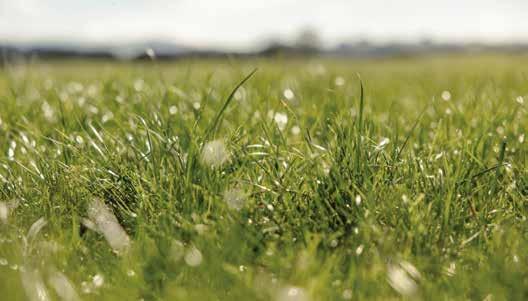
Coast to wet, cold Southland and everything in between.
Palliser has consistently shown its value with its early spring production and it keeps its quality of leaf longer than earlier heading varieties. This combination allows for cool season activity with quality growth in summer and autumn.
It is +25 heading and combines Italian and perennial ryegrass genetics. It is ideally suited to pastures lasting for three to five
years, or alternatively, it can be used to undersow existing pastures to extend longevity.
Trial testing has concluded that Palliser is suited to various farm systems where high-quality pasture is critical. These systems include dairy platforms, pasture silage, and sheep and beef breeding and finishing operations.
A standout feature of Palliser is its versatility within different farm systems. Depending on the

situation it achieves this versatility because it can be adapted to a wide range of farm systems.
• Crop rotations. It can be used for one to five years.
• Environment. Testing has shown its versatility across Aotearoa.
• Stock class. It can be used for all classes (dependent on endophyte type).
• Late heading date. It distributes spring feed flush longer.
• Grazing management. Palliser is best suited to rotational graz-







Pioneer offers New Zealand’s most comprehensive range of silage and grain hybrids specifically selected and tested for local growing conditions.
When choosing hybrids, it is important to consider yield performance based on information collected over several seasons within a growing region and to compare hybrids that are similar in maturity. As part of your decision-making you should also consider the important trait ratings for your growing region.
Listed below are some of the Pioneer brand maize hybrids recommended for planting this spring.
P8086 is similar in type, maturity, and management requirements to P8000 which it replaces. P8086 has a long cob with deep dent grain to produce higher silage yields than P8000. It combines strong standability, drought tolerance, staygreen and high northern leaf blight ratings and is widely adapted where an 80CRM hybrid is required.
P8240 is a tall, high-yielding silage and grain hybrid backed by strong drought tolerance, staygreen and standability. Where northern leaf blight is a seasonal concern, consider planting P8086 or P8532. It is widely adapted to Central Plateau, Taranaki, Lower North Island and South Island growing regions.
P8333 is a tall bulky plant with a long grain filled ear. It is supported by strong all-round agronomics, superior drought tolerance and staygreen. P8333 delivers top grain and silage yields for maturity, particularly in the South Island.
P8666 is a popular widely adapted medium-late hybrid in the South Island and it provides an early option in the warmer regions of the North Island.
P92575 delivers competitive silage yields compared to P9400 and P9127, which it replaces. It is an excellent option where northern leaf blight, standability and drought tolerance are seasonal concerns. P92575’s late season staygreen and plant health deliver a wide harvest window and silage with superb digestibility and energy. Widely adapted throughout the North Island where this maturity is required.
P9400 is a tall, dense plant that produces high grain content silage with superior digestibility. It is agronomically strong and has sound all-round disease resistance. P9400 is a high yielding early choice in Northland and Waikato, and it gives stable yields in Taranaki and Lower North Island as a mid to full season hybrid.
P9978 is now a popular hybrid with strong roots and stalks, superior foliar health, drought
tolerance and staygreen. P9978 provides comparable silage yields to P9911, but is quicker to harvest, has better standability, northern leaf blight and rust resistances. It is a great option throughout the North Island where this maturity is required.
P9911 is a tall showy hybrid in the Optimum AquaMax range. P9911 is widely grown throughout the North Island as a midmaturity option in the north and a full-maturity option in the Lower North Island.
P0640 is a tall plant with sound standability, staygreen and drought tolerance producing silage with superior energy content. P0640 provides yield stability in moderate to high yield environments from Northland to the East Coast.
P0891 delivers exceptional yield stability for silage and grain in all northern North Island production regions. P0891 produces grain with excellent appearance, very high test weight and food grade end-use quality. It is a popular all-rounder with very good drought tolerance, standability and sound resistance to northern leaf blight.
P0900 is an exceptionally balanced hybrid that delivers superior foliar health, Optimum AquaMax drought tolerance and yield stability for silage and grain. It delivers silage with high energy content and is widely grown in

the warmer northern growing regions.
P1636 produces silage that is highly digestible and has high grain content. P1636 has strong agronomics, drought tolerance and staygreen that together provide a wide harvest window. You can plant P1636 early to maximise yields. In high-risk northern leaf blight situations consider P0900 or P1837.
Choosing the right hybrid for your growing environment and intended end-use is the first and most important decision when planning to grow maize.
Selecting the highest yielding hybrid best suited for your conditions will give the best return while noting that the right seed treatment will enable the selected hybrid to reach its full genetic potential.
Please contact your Pioneer or merchant representative for assistance or to confirm seed availability. RC

ing but can sustain periods of set stocking.
• Soil type. It is adaptable to most grazing soil types.
PGG Wrightson Seeds national technical manager Wayne Nichol says the company has been awaiting the arrival of Palliser long rota-
tion ryegrass for some time.
“There has been a growing trend towards the use of hybrid ryegrasses. This is likely a reflection of their versatility because they can be used for undersowing, specialised pastures or in association with perennial pas-
ture mixes,” Wayne says.
Palliser retains the attributes of cool season activity normally seen with hybrids but has additional summer quality benefits, he says.
“This is due to its very late flower habit, reduced AMH, and very
good rust resistance. Add AR37 endophyte and that adds to the value proposition that Palliser long rotation hybrid ryegrass offers.”
For more detail visit the website pggwrightsonseeds.com or call 0800 805 505. RC
Carrfields Grain & Seed is a market leader in the supply of forage and herbage seeds. It offers a wide range of in-house grass, clover, herbage and brassica options.
We also have access to a wide range of proprietary seed varieties from out supply partners such as Agricom, PGG Wrightsons Seeds, Barenbrug and RAGT. Delivery of our seed is handled by our experienced inhouse logistics team.
Carrfield’s in-house products include:
Long Rotation Perennial Ryegrass. Long Rotation is high yielding tetraploid hybrid ryegrass that has a three to six year production period. It is quick establishing and withstands heavy grazing. It has strong and rapid regrowth and being a tetraploid it is very palatable with high ME.
Long Rotation has excellent early spring and summer growth to provide high quality feed when it’s required most. Suggested sowing rate is 20-25 kg/ha), and it has a mid heading date.

Exalta Italian Ryegrass. Exalta ryegrass is a diploid Italian with an 18-24 month production period. It is very quick to establish, which makes it flexible and an option in the three to six month space because of its vigor.
Exalta is well suited to winter grazing or silage production. It has a fine leaf, which makes it more tolerant of drier conditions. It has a late heading date and a suggested sowing rate 20-25 kg/ha.


Nicola Annual Ryegrass. Nicola Ryegrass is a tetraploid annual ryegrass with a 9-15 month production period and very quick establishment. Nicola is an ideal cultivar to sow between maize silage crops or after cereal crops. It has excellent winter activity which carries through to spring with extended performance and excellent feed quality. Being a tetraploid its upright growth makes it easy to mow, which is a benefit for both silage production

and high ME for animal performance. Exalta’s suggested sowing rate is 23-30 kg/ha and it has a late heading date.
Pulsar Forage Rape. Pulsar forage rape is an early to midmaturity variety that is ready to graze 12-14 weeks post planting. Pulsar is a very versatile brassica that is suitable for a wide range of soil and environmental conditions, stock classes and sowing dates.
Due to its earlier maturity and
Maximise coverage, efficiencies and savings
Du-Wett® delivers superior spreading using less water. That saves time, labour, and fuel. And because Du-Wett optimises efficacy, you get the most out of every cent you spend on your spray programme.


H&T Agronomics offers farmers the three things they need to grow high-yielding pasture and forage crops – top seed genetics, crop protection and the scientific advice to get the most out of them.
Its team of agronomists have the expertise to help farmers plan, monitor and protect crops, manage harvest and use digital technology to store data.
As an independent seed supplier, H&T can source cultivars from leading seed breeders and distributors, but it has taken this a step further by acquiring the advanced machinery needed to apply crop protection coatings to its seed.
H&T business manager Duncan Thomas says treated seed reduces the reliance on foliar agrichemicals and bait. It also provides a better means to deliver many products where they can be most effective.
“We can apply a range of synthetic and biological coatings to seed. When they take up moisture, these products create a halo around the seed and the forming root zone,” Duncan says.
H&T Optimised seed enhancement coatings combine protection from pests or disease with a biostimulant that can boost yields. The biostimulant is a blend of humic and fulvic acids that H&T applies directly to the seed.
Optimised biostimulant increases yields and maximises the genetic potential of cereals, maize and pasture by encouraging root development. Stronger root growth improves the plants' vigour so it is better equipped to use the soil’s nutrients.
multiple graze opportunity, it can be sown with companion species like chicory, plantain and Persian clover. It provides a spring-sown option that can last 18 months.
It can also be mixed with annual or Italian Ryegrass to give more flexibility in a farming system. Pulsar’s suggested sowing rate is 5 kg/ha as straight stand and it has early to mid maturity.

Duncan says H&T Optimised has been shown to improve maize root mass by 400 percent at 39 days after sowing.
The Optimised range of products includes maize, cereals, brassicas and a full range of pasture mixes.
Optimised can be combined with H&T’s Rappel slug-repellent seed coating. Rappel protects seedlings through establishment rather than spread as a bait through the paddock.
Rappel also contains a biological product that repels rather than kills slugs. The aim is to maintain the biodiversity in the paddocks but still relieve slug pressure so the crop can establish itself.
H&T supplies a range of pasture and forage mixes that have been developed by rigorous analysis of all certified New Zealand seed lines.
They include Fusion, a kale and plantain mix that gives multiple grazings and gives the flexibility to provide lots of feed at virtually any time of the year.
Persian Clover. Turbo Persian Clover is an annual clover with a 12-15 month production period, depending on sowing date. It can be drilled in spring or autumn and is a great option as a partner species with Nicola ryegrass for hay or silage production.
When planted with a short term grass (like Nicola), the early cuts or grazes will be more
Duncan says unlike other brassicas, kale does not have a specific ripening stage so it can be grazed whenever production targets or animal health requires it. In Fusion it is combined with plantain, which has remarkable resilience and growth potential right through to early winter.
“Both species give a high level of performance and flexibility for on-off grazing. Fusion can be used for strategic grazing throughout the season and it can provide exactly the right amount of feed at the beginning of the season.
“You can plant Fusion in November and graze it in January-February and again in May, June or July. In the following spring you can undersow it with ryegrass and clover to create a herby, long-term pasture.
“The kale in Fusion is bred to be structurally better rather than to deliver the highest total yield. It is bred for its high leaf ratio, so it does not produce a 6 ft tall plant that is 50 percent stem. That might be fine for cows grazing in winter, but for young stock to graze in summer, kale has to
ryegrass dominant while later crops and grazings will be more clover dominant. It is also a good option as a nitrogen-fixing crop.
Premium Pea and Barley Mix. Premium is a 60 percent Rose maple pea and 40 percent spring barley mix. Planting can be done from August to November thanks to its short growing season of 12-15 weeks.
Premium has a potential yield
have lots of high quality leaf.”
For lamb and sheep finishing, H&T offers Ballistic, a powerful chicory and clover mix. It is ideal for the lower North Island and parts of the South Island.
Duncan says Ballistic can provide perennial, high quality forage year-round. For example, it can be used during summer to finish 80-100 lambs per ha. Then, when it is more dormant in autumn or winter, it can be undersown with ryegrass. The next spring it will “go ballistic” and produce high quality pasture.
Chicory is an ideal companion for clover. Traditional pastures lack feed quality during summer and autumn, while chicory and clover swards maintain their quality at that time.
“Our Ballistic mix provides high quality feed for finishing lambs through summer and autumn. Rotational grazing of lambs produces huge net liveweight production per ha in comparison to traditional systems,” Duncan says. RC
of 16,000 kg/DM/ha and it delivers much higher protein than a cereal crop alone. It also has the potential to add 70 kg/ha of nitrogen to the following crop. Other forage options from Carrfields Grain & Seed include brassicas, such as kale, turnip to swede, white, red and other clover options, plantain, fescue, cocksfoot and other amenity grasses. RC
Succulent, super-abundant and lighter on the environment – the latest hybrid ryegrass from one of the country’s best-known pasture companies ticks all the boxes.
Barenbrug says Forge hybrid ryegrass is a perfect fit for any farmers adapting their systems to meet fast-changing social, climate and market expectations.
The high-yielding tetraploid has recorded 14 to 28 percent more growth year-round than other hybrids over three years in national industry trials.
Barenbrug commercial manager Graham Kerr says extra dry matter is great, but extra dry matter across all seasons is even better, because it gives farmers more flexibility.
“Forge excels in this regard. We are particularly excited about its growth in autumn, winter and early spring. These are times when high quality, home-grown feed has most value in New Zealand farm systems.”
Strong cool season growth also helps soak up excess soil nitro-

gen when the risk of leaching is highest, Graham says.
Data from the National Forage Variety Trials spells out the difference – in autumn, Forge produced 14-33 percent more dry matter than other hybrids and in winter, 15-36 percent more, in a series of trials that were each run for three years.
Annual DM yield is at least 14 percent more than any other hybrid in the NFVT, making Forge the new champion in medium-
term, high performance ryegrass for dairy and red meat production, Graham says.
That’s enough to make most farmers sit up and take notice.
“In parts of NZ where milder winters and hotter summers are becoming the norm, this growth pattern offers better opportunity to maximise cool season production.
“Over three to five years, Forge grows approximately 1.4 tonnes DM/ha more than a high perfor-
mance perennial, making it ideal for farmers who want an outstanding medium term pasture,” he says.
Yield is one thing, but quality is another, as any farmer who has ever tried to get their animals to graze an unpalatable pasture will confirm. Forge is a tetraploid, so that extra growth is juicy and delicious for cattle, sheep and deer.
This in itself benefits not only animal care, nutrition and per-

With spring upon us, it is the time to start thinking about fodder beet. A variety of factors come together to achieve the best outcome for a beet crop, so detailed planning is essential.
The condition of the seedbed, sowing date, soil temperature, cultivar selection, sowing rate, row spacing and depth, and timing of pre-emergence herbicide all influence the yield potential of the crop.
Catalyst’s team of agronomists are specialists in bringing all these pieces of the puzzle together with attention to detail.
Fodder beet represents a major part of the growth of Catalyst’s business. From the company’s beginnings, it is a crop they have taken seriously. Maximising yield through good advice and products represents the best return on investment per kg of DM. Fodder beet has consistently been at the top of the pile and has become a mainstay in the winter cropping space.
Catalyst has exclusively procured two leading varieties from the Cropmark portfolio for the 2024-2025 season. Both performed exceptionally well in the 2023-2024 season.
Anselmo. Anselmo is a newly released medium dry matter variety. It has a yellow-orange bulb with a dry matter range of +/- 16 percent and sits 50 percent above the ground. In trials, it has performed very well, particularly with its leaf disease score.
Gustea. Gustea is a recently bred high dry matter (20-22 percent) fodder beet. It sits approximately 30 percent above the ground and has strong disease
and bolting tolerance. It is best suited for farmers who want to lift and feed fodder beet to stock, although under certain conditions it can be grazed in situ by some classes of stock.
Other leading varieties which Catalyst trusts and which continue to consistently perform are:
Feldherr. Feldherr has a low bulb dry matter percentage (12-15 percent), preferred by some farmers for grazing. It can produce large bulbs and high yields for its type with an abundance of leaf growth. It is suitable for all classes of stock, particularly young stock, older animals, and deer.
Bangor. Bangor is a uniform fodder beet with a medium-bulb dry matter percentage (16-18 percent) and high yield potential. Approximately half the bulb sits above ground and is yellow in appearance.
Delicante. A recently released high-yielding monogerm variety. Suitable for grazing in situ or can be mechanically lifted. It has exceptional leaf retention and sits higher above ground compared to Enermax. Dry matter percentages are +/- 18 percent.
Geronimo. Geronimo’s origins trace back to France. It is identifiable by its yellow-orange tankard-shaped bulb. This variety is known for its tolerance to diseases such as ramularia and mildew. It is versatile across various grazing applications and can be grazed in situ, lifted, or fed whole or chopped.
SF1505. SF1505 offers medium to high dry matter ensuring maximum yield potential. It suits both grazing in situ or self-harvesting, ensuring feeding system versa-


tility. It offers a high leaf-to-bulb ratio which makes it suitable for a range of grazing systems.
Rampart Fungicide. A newly introduced fungicide treatment in 2023 which controls Rhizoctonia. Rampart is a locally systemic fungicide treatment with both preventative and suppressive activity. It has been extensively trialled in Europe and the USA.
Combined with standard fungicide treatment (hymexazol), it
provides a broader range of protection against damping-off diseases, offering up to four weeks of protection during the critical danger period for Rhizoctonia damage.
This effectively provides an insurance policy on your investment and aids in plant survivability.
For more detail about Catalyst’s recommended fodder beet best management practices, visit the website catalystag.co.nz and look under ‘Guides & Advice’. RC
formance, but farm system management, and environmental outcomes, Graham says.
“Animals love tetraploids. They are soft, legume-friendly, rich in energy and easy to eat. Forge’s high metabolisable energy and palatability encourage high intakes, optimal per head performance and easier grazing management.
“That’s good for animals and for the environment, because it enables farmers to generate a
similar amount of milk or meat from fewer livestock with lower nitrate leaching and greenhouse gas emissions.
“These sorts of efficiencies are only going to become more important as NZ agriculture adapts to the many changes ahead.”
A key goal in breeding Forge was to create a longer lasting cultivar for farmers who wanted the benefits of a tetraploid with more persistence than other hybrids.
Persistence of Forge in trials and on-farm has been very good for a tetraploid hybrid. It also dovetails perfectly in the Barenbrug tetraploid range between Shogun hybrid ryegrass and 4front perennial ryegrass.
Shogun is still at the top of the class for one to three year pasture. It is ideal for paddocks destined to be crop in the next season or two, and for undersowing into existing pastures that have thinned out.
“Shogun transformed the hybrid ryegrass market when it was first released, and is still making a massive difference to productivity and animal performance on farms all over the country,” Graham says.
“Forge will be equally transformative, if not more so. No other three to five year pasture can match it.”
Seed for Forge tetraploid hybrid ryegrass is available now for spring sowing. RC
Agpac is proudly supporting cancer awareness through the sales of TrioWrap Pink and Blue Celebrating 10 years of cooperation with Sweet Louise



HSR Maize Seed has introduced three new maize seed hybrids to the market for New Zealand’s upcoming growing season.
Triton, MaxTwo, and Spartacus have undergone extensive research and development, including selective breeding and on-farm trials, to ensure their performance and adaptability to New Zealand's diverse climates. They are now available to farmers and growers nationwide.
HSR maize specialist Guy Mason says the hybrids have been developed to meet various environmental conditions, including the shorter seasons in the South Island and the warmer conditions found in the North Island.
“It is exciting to be able to provide farmers with more choice,” Guy says. “Each HSR Maize hybrid has unique strengths that make them suitable for different situations and ensure high-quality grain or silage.”
Building on generations of
In New Zealand’s dynamic farming landscape, staying ahead means being innovative, especially when it comes to perennial ryegrass.
RAGT has done this by introducing its own novel endophyte, RGT18, which is the fruit of many years of development.
RGT18 sets the bar high by offering superior tolerance against a wide array of insects, and RAGT
research, trials, and experience in Australia, HSR introduced its first hybrid maize seed varieties in New Zealand over a decade ago. Since then, the company has continued to innovate and develop hybrids to capitalise on genetic improvements that can enhance New Zealand’s reputation for growing quality produce and livestock to feed the world.
HSR works closely with genetic plant-breeding partners around the world to source genetic material that can be used to develop new and exclusive hybrids with superior traits to those currently on the market.
Triton (78 CRM) is a grain or silage hybrid with an excellent yield package and root structure. With the bonus of excellent leaf blight tolerance, Triton is perfect for northern areas.
MaxTwo (100 CRM) is a midmaturity hybrid that delivers high starch levels for quality silage. It is a perfect option for mid-season from Taupo and northwards, as

well as a full season in the lower North Island regions.
“With MaxTwo’s versatility and dual-purpose attributes, it is an appealing solution for New Zealand farmers,” Guy explains. Spartacus (102 CRM) is a hybrid maize seed that offers a new level of grain yield potential to its maturity group. Spartacus is an ideal choice for grain growers looking for an excellent return on
investment with its resilience to diseases and strong root structure.
Triton, MaxTwo, and Spartacus showcase HSR’s dedication to innovation by providing farmers with the latest genetic advancements to create superior seed varieties that optimize results. You can find out more about the hybrids at the website nutrinza. com/hsr/. RC
says it surpasses the well-known AR1. It ensures peak animal performance, while minimising the risk of staggers.
It has been through rigorous testing, including extensive agronomic trials and assessments for insect protection and animal safety. This underscores the exceptional performance of RGT18.
Independent animal safety trials conducted over a compre-
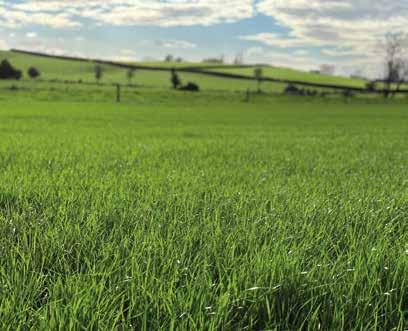
hensive five-year period across diverse ryegrass genetic backgrounds confirm that RGT18 is a very safe endophyte for sheep, beef and dairy.
The benefits of RGT18 are impressive. With its strong tolerance to key pests like black beetle and Argentine stem weevil, RGT18 offers NZ farmers a way to mitigate insect pressures and increase persistence. Ongoing trials for pests like porina promise even broader protection.
RGT18 is now available with RAGT Hustle, a variety that stands out as one of NZ’s top-performing perennial ryegrasses.
Now fortified with RGT18, Hustle is a powerhouse that offers incredible pest protection precisely where it is needed most.
PBRA trials further validate the exceptional performance of Hustle RGT18, which cements its status as a standout choice for farmers seeking premium quality and reliability.
Nouga tall fescue is proving to be a game-changer for Kiwi farmers. With its early spring growth and exceptional heat and pest
tolerance, it is emerging as a superior alternative to traditional ryegrass.
Historically, managing grazing with tall fescue has been challenging, particularly during late spring. Nouga addresses this issue with its remarkably soft leaves and high digestibility, which make grazing management simpler and more efficient.
Nouga's compatibility with legumes is another significant benefit. It can support a 20-30 percent legume content in the pasture, which enhances the natural nitrogen contribution from the environment. This reduces the need for synthetic nitrogen applications, such as urea.
The increased legume content boosts digestibility, which translates into higher milk yields. Farmers are already noticing a rise in milk production compared to their ryegrass pastures. They can effectively generate more milk with less applied nitrogen, a win-win for both productivity and sustainability.
For further information on RAGT products, call free phone: 0508 7333 36, email office@ragt.nz or visit the website ragt.nz. RC
Intimidator forage oats are a versatile and high-yielding forage or silage crop which can be sown throughout the year.
Luisetti Seeds holds the New Zealand license for Intimidator forage oats, which were bred in the USA specifically for forage production.
They are particularly palatable, which helps drive performance in livestock systems, but it is their multi-functionality that makes these oats so valuable in crop rotations.
Frost tolerant, Intimidator oats can be sown anytime from February until May for winter grazing or in early-spring for silage production.
When sown in winter or spring, these oats can be used as a catch-crop to capture nutrients left in the wake of intensively grazed winter bulb or brassica crops. They can then be harvested for hay, green-chop silage or whole-crop cereal silage.
Mixing Intimidator forage oats with a forage legume such as
rotation are encouraged to talk to their Luisetti Seeds agronomist about establishing and growing these highly-productive greenfeed oats. RC LUISETTI
Max peas, which have compatible maturity, will enhance the silage crop’s yield and nutritional value even further.
Because of their ability to generate high yields, Intimidator oats provide a good return on investment. Field trials show it can deliver a 31 percent higher economic return over lower-yielding varieties.
A Ministry of Primary Industries Sustainable Farming Fund (SFF) project that looked at using catch crops to mitigate nitrate (N) leaching during winter forage grazing showed that the inclusion of a catch-crop such as Intimidator oats can generate a gross profit of $1800/ha (DM valued at 20c/kg).
That was from a 12 tonnes DM/ ha Intimidator oat crop sown into a grazed kale paddock in midJuly and harvested on November 20.
In this particular example the oats pulled up 223 kg N/ha that would have potentially been lost to the environment.
Oats have large seeds so they are well suited for drilling in low
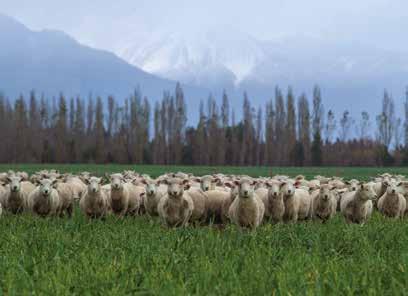

soil temperatures. They are also robust and have deep roots to capture the soil N.
Farmers considering including Intimidator oats in their crop
• Extensive product range
• Premium manufacturers
• Large stock holding
• Four branches
• Quick & hassle-free delivery
• Experienced & knowledgeable product specialists






Corson Maize recognises the benefits that maize can provide New Zealand farmers and it says their core business is to provide growers with a range of premium hybrids for silage and grain production.
With maize, New Zealand farmers can boost their feed supply, both for silage and grain, manage weather risks, and support pasture renewal and farm development.
Growing maize is also very important for controlling and managing appropriate nutrient levels in soils. Maize requires high levels of nitrogen and potassium to grow well and can be utilised to either extract high levels of these nutrients from the soil or to reduce potential leaching to protect our waterways.
While they always keep the broader benefits of maize in mind, Corson never loses focus on providing maize hybrids that growers can rely on. To do this, they search for three key things – yield, quality and resilience. While this may sound simple, there is a lot of hard work that
goes into finding the right maize hybrid.
Corson Maize has access to maize genetics from all over the world. They include some of the largest international maize seed companies, as well as some of the smaller niche providers of specialised maize genetics. On this basis, they recommend growers and farmers check out some of these great options:
PAC 081. PAC 081 is a tall, bulky, high-yielding hybrid that is suitable for use in maize growing regions around New Zealand. It is an early-maturing maize hybrid.
PAC 144. Pac 144 is a mediumtall plant with good bulk and very good early growth, PAC 144 performs at its best on good ground, where it will reliably produce long, girthy, uniform cobs packed with large medium textured grain of excellent quality.
PAC 298. PAC 298 is one of our newest release hybrids. It is a reliable and robust hybrid well suited for the North Island silage and grain markets.
PAC 314. PAC 314 is an attractive, medium-tall plant with
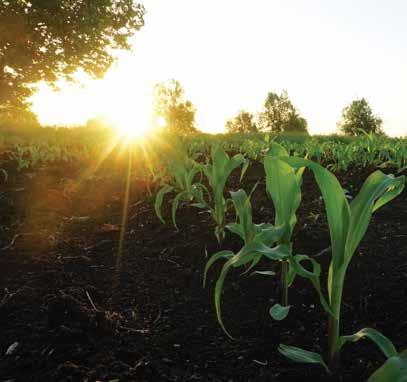
good early growth and excellent drought tolerance and adaptability.
PAC 430. PAC 430 is a robust, medium-tall plant with broad leaves. This hybrid is consistently among the top performing hybrids in grain production trials.
PAC 564. PAC 564 is a unique medium, bulky hybrid. It is in the ultra-full season bracket dominated by tall plants.
PAC 624. PAC 624 is a purposebred silage hybrid for early plant
situations in the warmer northern regions. It is firmly positioned as a market leader in the ultra-long maturity group. It produces large girthy cobs packed with medium soft, starchy grain. This is combined with very good digestibility, which ensures silage of excellent quality.
To find out more get in touch with your local Corson Maize sales agronomist on 0800 4 MAIZE (62493) or visit the website corsonmaize.co.nz. RC

• Over 140 new listings
• 160 deleted products
• 100 existing labels updated (new weed, pest & disease claims) Plus the latest regulatory amendments






STAMPEDE CM142.
It is disappointing when ryegrass fails to live up to its promise. It can leave farmers feeling frustrated and wary of perennial cultivars.
Cropmark says it understands that resowing perennial ryegrass is a significant investment and Kiwi farmers and agronomists demand enduring, high-yielding performance for the lifetime of the cultivar.
Farmers also seek reliable assurances that they will not have to deal with such common problems as ryegrass staggers and insect damage. Taking onboard this feedback, Cropmark developed Stampede diploid perennial ryegrass with the innovative CM142 endophyte.
The journey to Stampede CM142 has been one of perseverance. Stampede represents many years of research and insight to combine New Zealand’s best ryegrass genetics with a new and unique novel endophyte.
When Cropmark's breeding team in Canterbury developed the cultivar, they incorporated insight from farmers.
Stampede CM142 is more than
just another ryegrass cultivar says Cropmark plant breeder Stephane Montel.
“It is a late heading diploid perennial ryegrass that boasts consistent yield performance. This has been validated through rigorous on-farm trials across New Zealand and Australia.
“Stampede is a very nice-looking grass. It is dark coloured with very high tiller density to improve its persistence and ensure a reliable source of high-quality forage throughout the year.”
Central to Stampede's remarkable resilience is the CM142 endophyte, a ground-breaking discovery with origins tracing back to the harsh alpine regions of Greece. CM142 harnesses the natural insect deterrent capabilities of epoxy-janthitrem alkaloids.
Stephane says in combination with Stampede’s robust genetics, it offers a natural defence mechanism to increase pasture persistence, which is a key attribute for perennial pasture.
“Our main effort in developing CM142 was to maintain the component around insect protection while increasing livestock perfor-
Herbivore chicory is a highquality leafy forage chicory that is rapidly changing the game for producers focused on livestock feed. Known for its erect growth and high feed utilisation, Herbivore chicory ensures robust establishment, vigorous regrowth, and outstanding nutritional benefits for livestock.
The features, benefits, and agronomic advantages of Herbivore chicory include:
1. High yields and erect growth. The erect growth of Herbivore give livestock easier grazing, so they can access the forage efficiently. The plant's structure reduces wastage and gives more effective use of the available feed.
2. Fast establishment and regrowth vigour. With its rapid establishment and regrowth, Herbivore chicory grazing rota-

mance, due to lesser toxicity and better forage production.”
The benefits of Stampede extend beyond pest resistance, however.
“CM142 has consistently shown a reduced potential to induce ryegrass staggers and heat stress. We believe this is a result of its unique alkaloid levels,” says Stephane.
Stampede will be commercialised this spring. In anticipation of its launch to the market, seed has been distributed to participating livestock farmers throughout the country to further assess its on-
farm performance.
“It is a great achievement for the team and the wider industry,” Stephane says. “It has been developed through the innovation of a New Zealand-owned company that provides farmers an alternative to support them in what they do best.”
For further information contact your local Cropmark Seeds representative: Upper North Island – James Bryan: 027 235 4989, Lower North Island – Matt Kidby: 027 230 1783, and Upper South Island – Liam Martin: 027 555 6813. RC
tions can begin earlier and occur more frequently. This provides a steady supply of high-quality forage throughout the grazing season.
3. Soil fertility and moisture stress tolerance. Herbivore chicory thrives across a range of soil fertilities and exhibits exceptional tolerance to moisture stress, thanks to its deep, fibrous taproot.
This root system allows the plant to access water and nutrients from deeper soil layers, making it a resilient option during dry periods. This adaptability ensures consistent forage production, even in challenging environmental conditions.
4. Nutrient-rich forage. Herbivore chicory draws high levels of nutrients and trace minerals from deep within the soil, delivering them to the leaf. The result is forage with a high dry matter (DM)

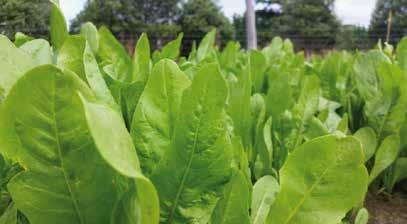
Germinal is a global plant breeder with operations in the UK, Ireland and New Zealand. It supplies international markets with cutting-edge forage cultivars.
All New Zealand cultivars are tested locally at Germinal Horizon Broadfield, our trials' site near Lincoln. This ensures any cultivars available in New Zealand are proven to work here.
What sets Germinal cultivars apart is their ability to deliver on pasture performance and animal production while supporting sustainability.
Aber high sugar grasses (HSG) are true perennial ryegrasses that have 17 percent higher water-soluble carbohydrates (WSC) compared to standard ryegrasses.
This matters because the additional WSCs improve the natural digestive energy imbalance that causes ruminant animals to waste much of the protein they consume.
With Aber HSG pasture, livestock can capture more of the protein from grass to improve production and reduce methane emissions.
AberGain is a late-heading (plus 24) tetraploid perennial ryegrass capable of yielding 12,000 kg DM/ha in a year. With strong growth late in spring, it provides quality grazing or silage options. As a tetraploid, AberGain is highly palatable to livestock, which can help increase animal production, particularly in a dairy platform.
percentage, excellent digestibility, high metabolisable energy (ME), and elevated crude protein levels.
These nutritional benefits translate into better animal health and higher production, which makes Herbivore chicory an invaluable addition to any pasture.
5. Perennial longevity and sowing rates. Herbivore chicory has a lifespan of one to three years,
AberGain is densely tillered for a tetraploid. This helps it better withstand wet weather and compete with new weed growth. Available with the AR1 endophyte, AberGain is ideal for farmers throughout the lower North Island and South Island.
With AberGreen, farmers have a diploid option that has the potential to yield around 13,000kg DM/ha each year. AberGreen produces vigorous ground cover due to its tiller density. It offers enduring persistence and outstanding late spring yields, as found in trials conducted by the NZ Plant Breeders and Research Association.
Compared to standard ryegrass, AberGreen is 5.5 percent higher in digestibility, resulting in increased meat and milk production.
AberGreen is also available with the AR1 endophyte and is suitable for use in the lower North Island and the South Island.
Germinal also breeds gamechanging clovers. DoubleRoot is a world-first cross between white and Caucasian clover species. Unique to DoubleRoot clovers is the ability to grow above and below ground, granting protection from drought and cold shock down to -30°C.
AberLasting is the first cultivar in the DoubleRoot range. It is a persistent clover that naturally fixes nitrogen and reduces fertiliser inputs while fuelling livestock production.
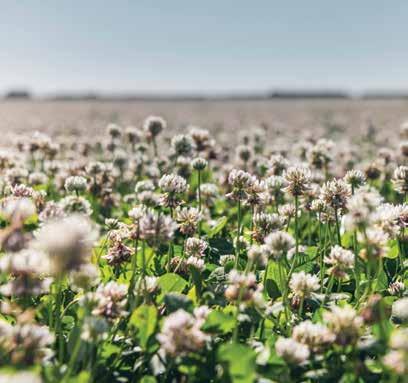
Bred for greater persistence, AberClaret is a red clover ideal for farmers who want to produce quality forage and silage that is high in digestibility and highly palatable and has elevated protein levels over other feeds.
Germinal has gathered comments from farmers who have used Germinal cultivars.
Methven dairy farmer Andrew Barlass says, “We want to maximise the amount of metabolisable energy produced per hectare. Our cows milk better off the high sugar grass.”
South Otago sheep and beef farmer Scott McKenzie says the majority of his farm is planted in Germinal seed.
“The stock love it. Sheep certainly like the high sugar grass, as they will often eat that over other recognised varieties. All of our clovers are from Germinal, and the pasture seems to really hang on in the dry,” Scott says.
Canterbury dairy farmer Vaughan Jones says with Germinal seed, growth is consistent.
“Some other varieties continue to go to seed, whereas Germinal pasture stays in leaf with very good autumn and summer growth. It is highly palatable and persistent pasture, and cows really enjoy grazing it,” Vaughan says.
“AberLasting DoubleRoot is a very competitive clover. You cannot say that about other clovers out there. The paddock is six years old now and still thriving.”
Otahuti dairy farmer Jason Erb says the thickness of his Germinal pasture is a big advantage. “It does not go stalky. This means our pasture quality is easier to maintain and we achieve higher yields.
Helen Andrews does cattle finishing in Canterbury. She says changing the pasture into AberLasting DoubleRoot clover has given her team confidence. With its deeper root system it delivers a strong performance year-round.
You can ask your local seed merchant for Germinal grasses and clovers. Call 0800 171825 or email enquiries@germinal.co.nz with any questions. RC
and offers flexible pasture management. Recommended sowing rates are 1-2 kg/ha in a pasture mix or 6-8 kg/ha as a standalone crop (or with clover).
This means Herbivore Chicory can be integrated into different grazing systems, so farmers can optimise its use according to their specific needs and conditions.
Herbivore chicory's performance has been validated through independent trials.
They show it delivers a consistent advantage in DM production, especially during the early part of the season, i.e., the first four or five grazings.
The ability to handle monthly cuts and its mean DM production highlight its superiority in early season growth, which ensures a reliable feed source when it is most needed.
Herbivore’s fast establishment, regrowth vigour, and ability to
thrive in diverse soil conditions make it an essential addition to any forage strategy. By integrating Herbivore chicory into their pastures, farmers can gain significant improvements in feed production, animal health, and overall farm productivity.
For more information on Herbivore chicory and to explore how it can benefit your forage systems, visit: pastoralimprovements. co.nz. RC
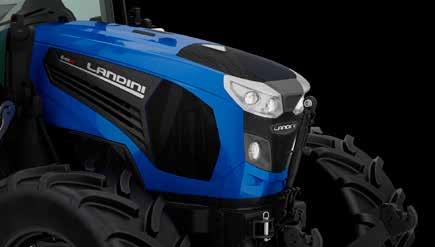

The Series 6 is the first unit to offer the “SmartPilot” joystick, which controls all the main tractor functions, plus acts as an integrated loader joystick. Combined with visibility of the loader through the glass roof the Series 6 is the perfect partner for your farming operation.
Ask us about the Landini Series 6 and let’s grow together.


ROTORUA CONTRACTOR
ALISTAIR DINNIS WAS BOUGHT UP ON A SHEEP AND BEEF FARM AND ALWAYS WANTED TO BE A FARMER.
To get there he is working hard. Not only does he run his contracting business, AD Agriculture, he also manages Te Paiaka Lands Trust, a 500-ha dry stock farm on the edge of Rotorua.
If that is not enough to keep him busy, Alistair and his partner, Ashley Edkins, are both in their second marriages and their blended family has eight children ranging from 18 years to 10 months.
Their aim is to save enough from the two income streams to buy another farm.
AD Agriculture began in November 2019 when Alistair bought an existing business from retiring contractor John Caulfield.
“After my marriage breakup, I was looking at land to buy, but the bank moved the goalposts. I looked at other options for cashflow to complement what I am doing at the trust farm.”
Because Alistair has always done his own ag work and mowing, he had a good foundation to work from to go contracting.
“I have also been a shepherd, and worked on a ranch in Canada. Up there you spend all summer making hay and all winter feeding it out.”
AD Agriculture makes round bales. Ninety percent of them are silage and the others are hay. It is predominantly grass with a small amount of lucerne. AD Agriculture also makes conventionals for lifestyle blocks, of which there are a lot around Rotorua.
“Lifestyle blocks keep the cash-
flow turning over. I group them into lots to make it a day’s work. It is tricky accumulating 10 bales here and 12 there, but it still pays the bills.”
He mainly works for dairy and dry stock farmers around the Rotorua basin.
In winter he uses his tractor-pulled dump trailers to sub-contract for race work or
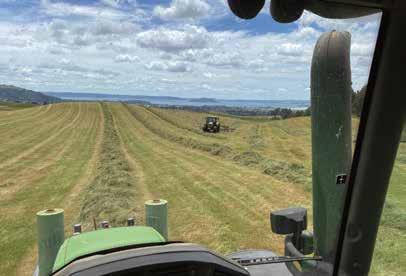

Alistair bounces in between farm and contracting. For example they might weigh lambs in the morning and then Alistair returns to the tractor.
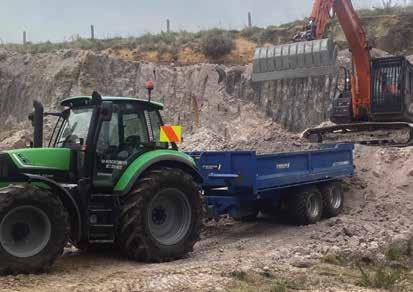
also comes back to run the second baler during peak times.
“You can’t beat that experience,” Alistair says.
general earthmoving jobs.
Lots of contractors also have farms, so like them Alistair has found ways to work the two strands together. Te Paiaka Lands Trust has a large dairy heifer grazing component and also fattens angus steers and lambs.
“By the time I am into the tractors, most of the fat steers are gone and there are just lambs being finished.”
He has a full-time farm worker who keeps the farm going, and
AD Agriculture has four seasonal staff. Alistair has had no problems finding operators. One came with the business when he bought it, and two others joined him when another contractor sold up. The only concerning part is the mower driver is in his 70s and wants to slow down.
“That experience is hard to come by. He knows all the paddocks and all the clients. He will be sorely missed.”
The previous owner of the contracting business, John Caulfield,
His crew tends to work together. The mower driver is doing his own thing, but everyone else works together. It makes supervision easier and is also more efficient.
“The rakes might be 30-minutes ahead between jobs, but other than that we work together. Our wrapper zips between rows keeping up with our two balers.”
Both trailers are Kiwi-made McIntosh. One is 11-tonne and one is 12-tonne. With the sides off and deck extensions added, they are used to stack bales for other contractors.
“With those trailers running between paddocks we can move a lot of bales in a hurry,” Alistair says.
Four Claas Arion tractors came with the contracting business when he bought it.
They include a 160-hp Arion 640C, which runs a baler, a 150hp Arion 530 runs the double mowers, a four-cylinder, 140-hp Arion 530 runs the wrapper, and a
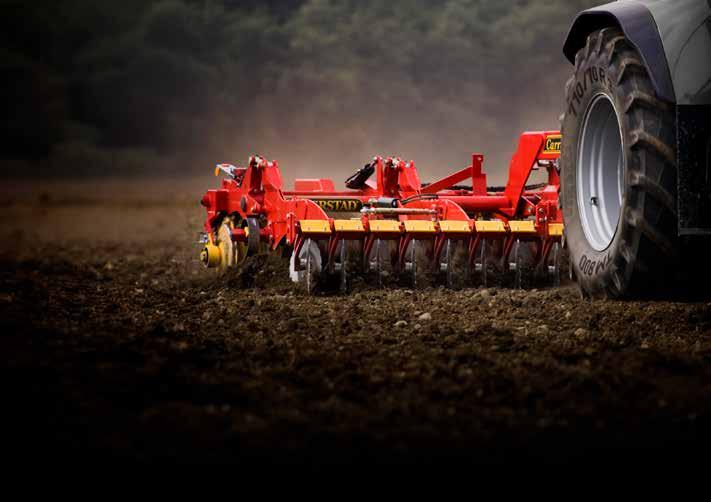





lifestyle blocks, but provides ample power for baling and mowing. It was on 1800 hours when Alistair got it and has a front linkage.
120-hp Arion 520 takes the rake. Since then Alistair has bought a second-hand 2019 Deutz Fahr Agroton 6160, with a powershift transmission. At 160-hp, the Agrotron 6160 is a good size for the business. It is not too big for
IF ALISTAIR DINNIS IS NOT CONTRACTING, FARMING OR LOOKING AFTER KIDS YOU MIGHT FIND HIM HUNTING IN THE HILLS AROUND ROTORUA. Buildings, sheds and food storage areas can attract large numbers of rodents, so ongoing effort is required to reduce trap or bait shyness.
ALISTAIR DINNIS AND HIS PARTNER ASHLEY EDKINS HAVE A BLENDED FAMILY WITH EIGHT CHILDREN AGED 18 YEARS TO 10 MONTHS.
Alistair bought the Deutz Fahr second hand on 1800 hours. He says with the price of machinery, there is a lot to be said for second hand gear, but he also points out that with the price of parts and repairs, there is also a lot to be said for a warranty. “Parts have gone through the roof.”
“It is the backup if the mower tractor decided to cark it. It was also a good price. It has proven to be a very good tractor. For value for money, I think you get more bang for buck out of the Deutz Fahr.”
He says the Agrotron 6160 is very stable on hills, comfortable to drive and has very good p
ower delivery.
Alistair first started thinking about Deutz Fahr because of the dealer, Truck and Tractor Services Rotorua, which is the local Power Farming retail branch.
“Doug Acutt is a very good owner-operator. It is nice to deal directly with the owner when sorting issues or purchases. You can negotiate properly, rather than with a big corporate. It’s a nice working relationship. There is no waiting. I go straight to the top, he’s on speed dial.”
AD Agriculture has both double and single Claas mowers, a 3200F on the front and 320s on the rear. Most of the time they use the doubles, but if they get behind, the rake driver can jump onto the single mower to get more grass down.
“These later model mowers can work on 1000 rpm. I really like that feature, because they can pick up grass that has fallen down. They also leave a nice clean finish.”
He says with their previous mowers, which only operated on the slower speed, they were leaving a lot of grass behind. This was exaggerated during wet seasons,

AD AGRICULTURE USES CLAAS MOWERS, A MCHALE RAKE AND A MCHALE VARIABLE CHAMBER ROUND BALER.
where there was long wet grass and tiny weather windows.
Alistair has not specified conditioners on his mowers because they are usually only good in the early part of the season.
“Then, as we get through the season, the grass dries out too fast. If it is really wet we give it a quick flick with our Claas tedder before going in with the rake and baler.”
Swathing is done with a McHale 6878 twin-rotor trailing rake, which can pull in to around 8m. “It is a good heavy duty rake that does a beautiful job.”
AD Agriculture runs round belt balers. Alistair recently traded in a Case IH baler and now runs a new McHale V6750 threebelt baler. He liked the Case IH but says the McHale is better for silage. He says the V6750’s main drive bearings are good for 100,000 bales and it is all self-lubricating.
“Hopefully it will have longevity and a good resale price.”
He also has a back-up Fendt variable chamber baler. It is a four-belt baler that is on 20,000 bales and still producing good bales.
Bales are wrapped with a McHale Orbital. The two balers can make 600 bales in a day and the wrapper easily keeps up with them.
The conventional baler is a Massey Ferguson 1840 inline, which came with the business.
“It is a good little baler. It makes a good consistent bale with nice tension, and it is easy to operate.”
Each season Alistair makes from 7,000 to 10,000 bales. Most of his clients pick up and stack their own bales and for the rest Alistair has discovered a group of Fijian tree planters. He says if you think contractors work hard, you should see them in action.
“They plant trees all day, then
THE COMPANY RUNS A DEUTZ FAHR AGROTON 6160 WITH A POWERSHIFT TRANSMISSION, AND ALISTAIR DINNIS SAYS THE BRAND IS GREAT VALUE FOR MONEY.

alistair dinnis says farming costs have gone up at a dizzying speed
He says his repair and maintenance costs have more than doubled.
“We didn’t even have any major breakdowns but even mundane parts have gone up ridiculously. Plus you can chuck in the interest rates on fleet finance.
“With price increases doubling, how do we know how to price jobs? We did have to put our bale price up a bit last year.”
There is not a lot of wriggle room in pricing bales, however, and with sheep and beef prices where they are, there is not a lot of room for farmers to pay more.
happily go out and pick up bales in the evening, then back to work the next day.”
Alistair is not a big fan of the trend toward carbon farming, however. He has seen good farmland in the Rotorua area being planted in pines for carbon credits.
“I would love to mow them into the ground. It is disappointing seeing land we used to mow planted in trees.”
Last season was an exceptionally good season for getting bales made. They could make bales in a timely manner and did not get caught up with bad weather like the previous extremely wet season (2022-2023).
“Last year we could easily get to our customers within five days, whereas during the previous season it was often two weeks
before we could get their baling done. It was like drawing teeth. To get hay dry was impossible.”
Wet seasons highlight the value of having two balers with a separate wrapper. Compared to running combi balers, they are a lot lighter on paddocks, especially
on hills, so they cause less damage to soggy pastures.
Alistair does a lot of his own maintenance and some repairs such as replacing bearings, but it comes down to the best use of his time. Anything major goes to the experts. RC
WHEN ALISTAIR DINNIS BOUGHT HIS CONTRACTING BUSINESS, IT CAME WITH FOUR CLAAS ARION TRACTORS, INCLUDING AN ARION 520, WHICH TAKES THE RAKE.


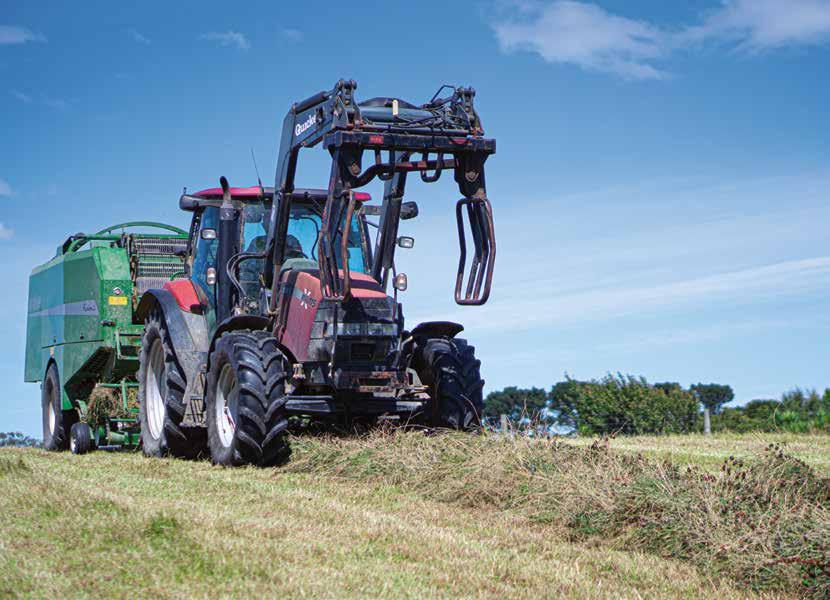
SOUTHLAND CONTRACTOR
OWEN SCOTT HAS SEEN A LOT OF CHANGES DURING HIS 30 YEARS IN THE BUSINESS.
Owen is based at Wallacetown, near Invercargill. He started out contracting with a conventional baler and was later one of the first in the area to use a round baler.
“We have seen things come and go and some have come back round again. We had one of the first of the round balers to get started in Southland. There were only a couple of them and people said, ‘That will never take off'. Now, of course, everybody's doing it.
“We all did conventional hay bales back then, and everyone had their own wee team stacking hay in the shed. One benefit of round baling is it allowed us to extend our season.”
He kept the conventional baler running for a few seasons, but found it clashed with the round baling, so he decided to concentrate on making the rounds.
“Once you drive out of the pad-
OWEN SCOTT AND HIS LATE WIFE CARA LAUNCHED SCOTT CONTRACTING 30 YEARS AGO.
dock, our job is done. I would like to be doing more baling, but there are that many other balers out there now.
“Wherever you look there is another baler or a plough and I think everybody is busy, so there seems to be enough work to go around, but we are still governed by the weather.”
Largely a one-man band, Owen serves farmers around Invercargill and north out to Otahuti, Lochiel and beyond.
“It depends on where people
ALONG WITH HIS CONTRACTING, OWEN SCOTT HAS TWO BLOCKS OF LAND WHERE HE PRODUCES SILAGE TO SELL.
phone from. We will go anywhere. We can fit into most farming types, from lifestyle blocks to dairy farms and run-offs.”
Owen grew up on a farm at Orauea in western Southland.
His parents sold the farm when Owen was 13-years-old and the
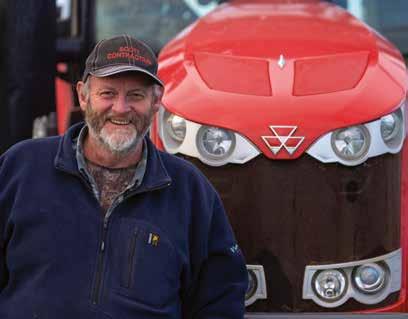

MANY OF THE IMPLEMENTS THAT SCOTT CONTRACTING RUNS HAVE COME FROM WEBBLINE IN GORE, INCLUDING THE SIP TWOROTOR SWATHER.
family moved to a small block near Winton, before his father retired and moved into town.
After leaving school, Owen spent 13 years working at the freezing works before starting his own contracting business with his late wife, Cara, who was a school teacher.
“I said I would be a contractor or a farmer by the time I was 30. When my wife was teaching, I looked after the kids and
then I went on the conventional hay over the summer. Then we went with round bales and that lengthened the season.”
He started out with a Lely Welger round baler and Cara would follow behind with a Goweil wrapper.
Now he operates a McHale Fusion II combination baler-wrapper. He calls on a neighbour who lives in Wallacetown to help with the raking and sometimes his son Ray lends a hand to move machinery. Ray also does the paperwork and computer work for the business.
Because Owen has been working for his neighbours for many years, he knows the layout of their farms, the gateways and

the hazards, which makes it easier to get in and get the job done quickly and safely.
His dog Ziggy also comes along for the ride. “I can't get away without him.”
Today Owen mainly does mowing, raking, baling and a bit of agricultural work, including ploughing, power harrowing, levelling and rolling.
He also does some pest control, fencing, and carting bales of silage and hay for local farmers.
“We try to have options for people. If they want something done, we can generally get it done for them. Being a small operation, you can spread yourself too thin, so we stick to the basics.”
OWEN SCOTT IS LARGELY A ONE-MAN BAND BUT HE CAN CALL UPON A MATE TO RUN HIS RAKE IF NECESSARY.
Owen’s approach to machinery is to keep things simple. For example, he sows grass by running a spinner behind a motor bike, rather than leaving marks behind with a tractor.
He does have three tractorsa 100-hp New Holland T6010, a 124-hp Case IH MXU115 and he has taken on a 150-hp Massey Ferguson 7615 this season.
The Massey Ferguson has been put to work baling and ploughing, as it is “a bit more

The all-new Continental Farm Tyre range has extra grip to help lower fuel costs and get the job done faster. Then there’s N-Flex resilience for extra damage resistance and a longer lasting, more comfortable ride. All backed by a 10-year manufacturer's warranty.
Technology that’s ahead of its field. So you can stay ahead in yours.

now 62, owen scott says he has no plans to retire
He intends to ensure continuity for his loyal clients for several years to come.
“Although I will get to the pension in another three years, I won't retire. I will keep on doing it as long as I can.
“We have got good gear and it should have a good few years left in it yet. We are just trying to do things easier, like cutting back on the stock. We want to keep it simple, so the contracting has to run like that. When you get a bit older, you've got to be careful.”
He likes to give back to the community and is one of the sponsors for the annual Deep South Cowboy Challenge held at Wyndham. It takes over two days during February, and this year Scott Contracting sponsored the rookie class. Owen helped out as the timekeeper.
A cowboy challenge is a competition designed to test the partnership of a horse and rider. Contestants are tested on a series of challenges and obstacles.
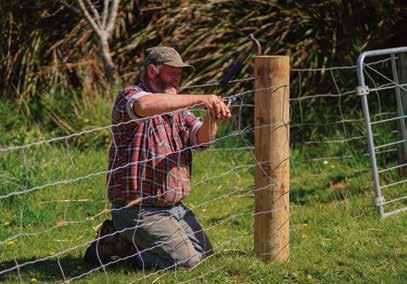

SCOTT CONTRACTING’S MOWER IS A 3.5M POTTINGER NOVACAT 352 V.
comfortable than the other two tractors,” Owen says.
The Case IH MXU115 powers the mower and the power harrow, while the lighter New Holland T6010 does the levelling, raking and runs the swather.
Owen says he does not have a preference for any particular tractor brand.
“Whatever you are doing, you have got to choose your tractor, but they have all got their place. When we were looking for tractors they were what come up and they ticked the boxes.
“We were quite keen on Massey Ferguson for a while, but when we decided to replace one a few years ago we ended up with a Case IH. Then, when it was time for the next change there wasn't anything available, so we went for the New Holland.
“The last Massey Ferguson we had was getting close to 12,000 hours. She had earned her retirement and we replaced her with the MF 7615.”
Owen says he has been impressed with the technology in the new Massey Ferguson, which has plenty of buttons and screens.
“You can find out how much fuel you are using and that sort of thing. It is quite interesting. I am quite happy with the tractors I am running now.
“The MF 7615 is miserly on fuel for a bigger tractor, which is good. It has a big fuel tank, but it doesn't go through the fuel by the hour, especially when you are baling.
“Whereas with the Case IH, I was only able to do 300 bales and then we had to fill up with diesel as well as the plastic.”
All of the tractor cabs now have air conditioning, which makes
ABOVE LEFT: IN ADDITION TO HIS BALING AND AG WORK, OWEN SCOTT DOES FENCING AND CARTS BALES OF SILAGE AND HAY FOR LOCAL FARMERS.
LEFT: A MCHALE FUSION II DOES THE BALING FOR SOUTHLAND CONTRACTOR SCOTT CONTRACTING.
tractor work much more comfortable, Owen says.
“We always did the work without air conditioning, but we were stripping off the layers until we couldn't go any further.”
He has purchased his tractors from a range of different local dealers, depending on who has the best deal at the time.
Owen's main mechanic is Ross Tily Tractors at Kennington, just outside of Invercargill. Ross and his team change the oil in his tractors. He highly recommends him and he has also had good service from JJ Ltd in Invercargill.
He bought his McHale Fusion combi baler second-hand from Webbline in Gore, and it is serviced by Power Farming in Invercargill. Owen says the team at Power Farming has some “pretty switched on boys”.
Being a small operation, Owen doesn't have a lot of big gear. His mower is only 3.5m, but he says it doesn't take too long to cut the grass. His Alpego power harrow, levellers and rollers are all 3m, and he has a two-rotor SIP swather.
“You have just got to get in and get it done. We do a good job. It takes a wee bit of time, but we get there.”
Owen has a ridger and planter for planting swedes, that quintessential Southland winter feed crop. He mainly plants swedes on dairy run-offs around Winton. He started with an old steelwheel ridger, but it took too long to get it from paddock to paddock, so he ordered a rubber wheeled model. After that he went from 60 ha of swedes to 350 ha the first season he had it. Now the ridging work has dropped due to the influx of precision planters.
He also has a Kverneland plough, which has been put to plenty of work. “It feels like I've tipped over half of Southland with that plough.”
Most of the implements have been purchased from JJ Ltd and Webbline.
“They don't seem to say ‘no' when I want something. They are pretty good. When you are only running one of each thing, you have got to look at ease-of-use, so we are trying to keep things simple.
“You can't run the gear down too far, because we can't afford expensive breakdowns in the

FROM HIS BASE IN WALLACETOWN, OWEN SCOTT LOOKS AFTER FARMERS IN A GOOD SIZED AREA OF SOUTH-CENTRAL SOUTHLAND.
middle of the season. We need good gear and we need it to keep running.”
For that reason Owen tends to buy his mowers and power harrows new, but his tractors are generally second-hand.
While he takes care of the oil changes himself, Owen has a mechanic he can call on to help keep his machinery up and running.
As a one-man band, moving gear can be a challenge, but most jobs are local so it is not too difficult. And Owen says he can usually call on his son Ray to help when necessary.
“Moving gear can be interesting, but we are generally not
THERE HAS BEEN A BIG PUSH IN SOUTHLAND TO FARM GREENER AND MOST DAIRY FARMERS NOW RECYCLE THEIR PLASTIC WRAP.
going too far as a rule, so usually the tractor goes down and does its job and comes home. Ray can be my taxi when needed and he can jump in and drive a tractor.”
Ray will also bring plastic rolls to the paddock to top up the Fusion baler-wrapper when needed.
Owen says when it comes to silage film, it has become increasingly important to be “clean and green” in Southland. Most dairy farmers recycle plastic wrap through Plasback and cardboard is used for the plastic wrap rolls.
“That means we can dispose of them properly and you don't have to bury it. It is all recyclable.”
Owen has two blocks where he grows grass to harvest in the summer months and uses for winter grazing. One is a 19-ha block at Underwood, near Invercargill, and the other is 15 ha at Wallacetown
“We did calves last winter for a dairy farmer and they seem to do quite well. This year we cut more grass and balage.”
Owen has been breeding with his own cows, which he mated with a Wagyu-Belgium Blue

OWEN SCOTT IS IMPRESSED WITH HIS MASSEY FERGUSON 7615’S TECHNOLOGY AND ITS FUEL EFFICIENCY.

cross bull to produce beef calves.
“He was a really great natured bull. His mother's name was named Chill and her progeny were the same,” Owen says. “The bull went to the Lorneville sale and was 1010 kg liveweight. He was a big boy, so there were a few burgers in that.
“I am getting too old for that now, however. We are looking to get rid of the cows so we will just do the calf grazing to make life a bit simpler.”
CULTIVATION GEAR THAT OWEN SCOTT RUNS INCLUDES AN ALPEGO POWER HARROW PLUS A PLOUGH, LEVELLERS AND ROLLERS.

Last season was a wet one in Southland, which made it difficult to make hay. Owen ended up doing a lot of balage, but it has been difficult to sell the surplus supply. RC
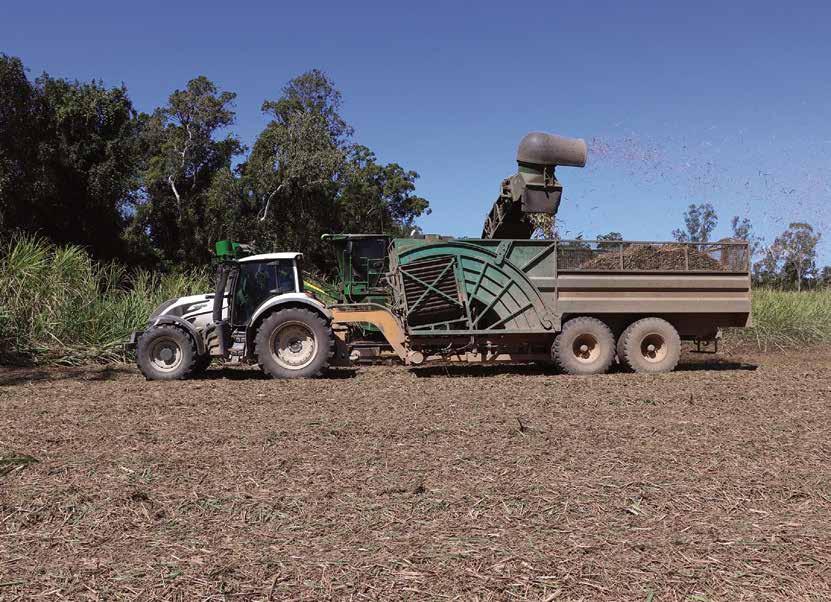
INGHAM SUGARCANE GROWER AND CONTRACTOR ANDREW SORBELLO’S FAMILY HAVE BEEN FARMING QUEENSLAND SINCE EARLY IN THE LAST CENTURY.
His grandfather Salvatore arrived from Sicily around 1920 and, in 1928, bought the farm Andrew is now on.
Andrew’s father, Santo, took over from him.
Both Salvatore and Santo had some cattle and sugarcane.
Andrew and his brother Michael have now taken over, with both of them also contracting for other Ingham sugarcane growers and a nearby mill.

group, but talked to the contractor and took over operations.
Cane in Ingham is grown as a dryland crop, with none under irrigation.
The entire region is under sugarcane, with few other crops on the land, he says.
The area has had excessive
HARVEST STARTS FROM MID-JUNE AND CONTINUES UNTIL ABOUT THE END OF NOVEMBER, DEPENDENT ON WEATHER AND THE SUGAR CONTENT OF THE SUGARCANE.
Andrew plants 60 hectares of his own sugarcane on two separate 30 hectare blocks, and also contracts as a sugarcane harvester.









across ditch the


PROFILED IN AUSTRALIA’S
AG CONTRACTOR & LARGE SCALE FARMER JULY/AUGUST 2024, WE VISIT ANDREW SORBELLO IN QUEENSLAND.
Brother Michael is on 58ha, also planting sugarcane and contracting.
Andrew got into contracting 18 years ago when the contractor that was cutting his father’s sugarcane decided to call it a day.
Andrew was driving for another
FROM LEFT; WIFE RHONDA, ANNABELL AND ANDREW. ANDREW SAYS HE LOVES THE LIFESTYLE FARMING GIVES THEM.


FORM LEFT, MICHAEL AND ANDREW. ANDREW GROWS SUGARCANE OVER 60HA AND MICHAEL OVER 58HA. THEY ARE BOTH ALSO CONTRACTORS IN THE INDUSTRY. THE FARM ANDREW IS ON WAS BOUGHT BY HIS GRANDFATHER IN 1928.
rainfall this year, with about 800mm falling from January.
“There’s been three or four months of just continuous rain. It’s been as muggy as muggy can be,” Andrew says.
Andrew’s two blocks of sugarcane are on different soils, with
one block, next to his house, on fast draining sandy soil.
As a contractor he looks at soil in practical terms.
“After a big rain event, if you get a few days of sun, you need a week and you can get back on and do whatever work you need to do. In the summer you need only one or two days and you’re back on again.”
In his area, most growers deliver sugarcane to Wilmar Mills, which crushes it and markets the finished product.
Sugarcane planting starts about May and continues until September, depending on weather.
Harvest starts from mid-June
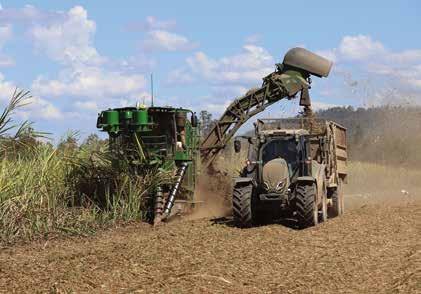
and continues until about the end of November, also dependent on weather and the sugar content of the sugarcane.
Harvest overlaps with contractors tag teaming each other to help out between the two jobs.
The contract group Andrew is part of aims to harvest about 80,000 tonnes in the Ingham area.
On his own 60 hectares, he hopes to get a 5,000-tonne crop off, he says.
As a contractor, one of the biggest challenges is trying to get the area he is contracted for harvested to the deadline the mill sets.
In a normal year he cuts 20 to
ANDREW HARVESTING SUGAR CANE. HE SAYS THE VALTRA IS A RELIABLE MACHINE FOR HAULOUTS.
25 acres per day, but when the mills “get going” they can push for 30 acres per day.
“There’s pressure to get that crop off in a reasonable time frame.”
Contracting takes almost all of his time, with work starting at 4 am and finishing at 4 pm.
After that, he has to tend to his own land and normal household responsibilities.
“It’s a big day,” he says.

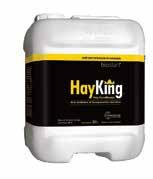
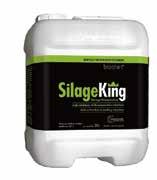
NZ Rural Contractor is available free of charge to readers who qualify under the publisher’s criteria and who supply proof of occupation (printed letterhead, business card, invoice etc) and to others via subscription and payment of the $68.00 inc GST annual NZ Subscription. Australian Subscription $130, Rest of World $270.
If you are not a registered reader, but would like to receive a regular bi-monthly copy, fill in the details of your contracting or farming business below.
Subscription criteria for owners/sharefarmers:
Dairy milk over 600 cows
Sheep & Beef 12,000+ stock units
Main contracting services offered:
Equipment operated







Last year, mill contractors worked six days on, with a two day break after that, and then seven days, followed by one day off.
This year they will work eight days on, followed by two days off.
Andrew says when the harvest season is going full tilt, a contractor needs to have all their ducks in a row to keep both farmers and mills happy.
Key to staying on top of your game is keeping everyone informed of what harvest schedules look like, he says.
However if there was, for example, too much rain, and the sugar content is too low, then it is pointless to harvest.
Australian instrument seller Instrument Choice explains how a brix refractometer works best.
farm Ha.: No. of sheep: No. of dairy cows: No. of beef cattle: Area in arable crop:
Make, Year, Model
To subscribe to NZ Rural Contractor & Large Scale farmer, please complete the credit card form below: $68.00 (NZ), $130 (Australia), $270 (Rest of World).
Name:
Company:
Address:
Email:
Rapid No.
Phone: Post Code:
Please sign here if you wish to receive a regular copy of this publication and send the form to AgriMedia Ltd, P.O. Box 37151, Halswell, Christchurch 8245. Freepost No. 114059.
Sign: Date:
Cropping over 250 ha in arable PAYMENT:
Credit Card: Mastercard Visa
Card Number:
Name on Card:
Expiry Date: / CSC:
Signature:
If you have moved, please write clearly your name and new address above and your old address (including post code) below.
Name:
Company:
Address:
Email:
Rapid No.
Phone: Post Code:
“While you’re cutting, you’re also organising the next couple of farmers. They have to know you’re coming and have to get sugar tested [so harvest can go ahead] and the mill needs to know when cane is coming in. And you need to know what’s happening after that so you’re ahead of the eight ball.”
One of the most critical factors that decides when harvests start is sugar levels in the cane, Andrew explains.
To determine this, sugar is extracted from sugarcane and a refractometer is used to gauge the brix content.
If the brix count on sugar is high enough, “then the harvest is on,” he says.
“When light enters a liquid at an angle, it changes direction. This phenomenon is called refraction. Light will refract more when travelling through a liquid with dissolved or suspended solids. Therefore, refraction can be used to measure the concentration of dissolved or suspended solids within a solution. Refractometers are scientific instruments that measure refraction angles and correlate them to an already established refractive index.
“Degrees Brix is the sugar content of an aqueous solution. One degree Brix is 1 gram of sucrose in 100 grams of solution and represents the strength of the solution as percentage by mass.”
Andrew says in the past there have been years where there was so much rain that entire harvests have gone to waste.
In 2022, the region had to leave behind 240,000 tonnes of cane as the sugar content was not up to standard.
There are chemical products available that increase the sugar

content, he says. The product, Modus, is sprayed 12 weeks prior to cutting and ripens the cane, and slows growth.
By doing this, the cane matures and sugar is brought on. The chemical basically matures the cane, which then dries off making it ready for harvest.
With too much biomass hard to harvest, the product can also stop the cane from growing.
The sugarcane in Queensland is green harvested with very little burning ever needed, Andrew says. But in the infrequent cases where the biomass is too dense, and harvesters struggle to get the job done, burning is an option.
But burning depletes soil moisture and Ingham growers prefer to preserve moisture, he says. He explains in this case he prefers to adjust his harvest methods and opens up space by going into the middle of a block.
Up to 40 tonnes per acre is a decent biomass to harvest, but once it goes up to 60 or 70 tonnes, it becomes a tangled mass and a harvester can get themselves into a lot of trouble, he says.
“We need good weather during

FOR HAULOUTS ANDREW USES THE VALTRA T SERIES 195. COMFORT IS KEY WHEN YOU SPEND LONG DAYS IN THE SEAT AND THAT’S WHAT VALTRA OFFERS.
the season and not a lot of rain. Ideally we get 2 to 4 inches during the season, which is enough to keep us going until the end. After that, if we can get spraying and fertilising done, then we are okay.”
The real rain in Ingham usually hits by harvest time, with a ‘big wet’ every 10-11 years. But if it is too dry, crops can be lost after cutting, he says. This is because new shoots, called ratoons, may
not grow in dry conditions, especially in sandy soils.
Andrew checks in with other contractors during the season to see where their challenges lie, with concerns around machinery breakdowns always at the front of mind.
If he can avoid the same issue other contractors are having, then he is ahead of the curve.
He does so by listening to their challenges and addressing pos-
sible equipment failure before it happens.
Andrew believes he has made the right equipment choices to keep breakdowns to a minimum.
For haulouts, Andrew uses the Valtra T Series 195 tractor.
Valtra boasts a couple of things about these tractors on their website.
For one, all-round visibility with big windows, a 6 cylinder engine, high road speeds with


high payload, LED daytime running lights, Stage V engines with hydraulic lash adjustment and a 600 hour service interval, 195Hp and 800 standard torque.
But for Andrew, who spends long hours in the tractor, comfort and ease of control is always a priority.
“It’s just a nice tractor to drive. Everyone comments on how well it drives. We had a Valtra break down once, and no one wanted to drive the backup we had from another brand, they just flatly refused.”
For harvesting, Andrew relies on the John Deere CH 570.
John Deere’s website also boasts about this sugarcane harvester.
A harvest monitor, cane loss monitor, fuel per tonne monitor, a smart clean cane cleaner, sugarcane field yield map,
4000+ readings per hectare, and a base cutter and chopper [that] set the benchmark for cutting and feeding in the global market.
Andrew has owned three of these, with reliability again the main reason for his continued trust in the green machine.
As a contractor his reliance is based on whether the machine can get the job done.
“When you turn the key in the mornings you know it will go all day; you don’t have major issues, as long as you do general maintenance.”
Andrew says contracting is not what it used to be, with all the old hands concerned that there are very few new entrants.
“We don’t see new blood coming in.
“The easiest route into contracting would be to buy an
existing group out, but that could cost close to AUD$1 million,” he says.
There are also no guarantees of success.
“You don’t have an agreement with anyone to say you cut their cane, a farmer can pull out anytime.
“If you want to start your own contracting business and you can’t find anyone to buy out, you look at a $2 million input cost at least. The money that used to be in contracting is not the same as in the past.”
With farmers paying for diesel, Andrew says his biggest cost is parts.
“I used to run a certain radial tyre called Alliance on the tippers. I can’t run them anymore. A couple of years ago it was AUD$5000 per tyre, so we run a cheaper one, called Sugar Dad-
FOR HARVESTING ANDREW RELIES ON THE JOHN DEERE CH 570, “WHEN YOU TURN THE KEY IN THE MORNINGS YOU KNOW IT WILL GO ALL DAY, YOU DON’T HAVE MAJOR ISSUES, AS LONG AS YOU DO GENERAL MAINTENANCE.”
dy, at AUD$2500. But you only need one spike through it and it’s buggered. Depending where you are working you can lose one a week,” he says.
A transmission failure sets a contractor back AUD$20,000 to AUD$30,000.
In future Andrew will continue as a harvest contractor, but his brother hopes to begin as a planting contractor in the next season.
There are no talks of succession yet, but his daughter Annabell is 14 and is interested in farming, although Andrew says he believes if she takes over one day it will be the growing operation and not contracting.
He hopes she will acquire a good trade first, before taking on the farm.
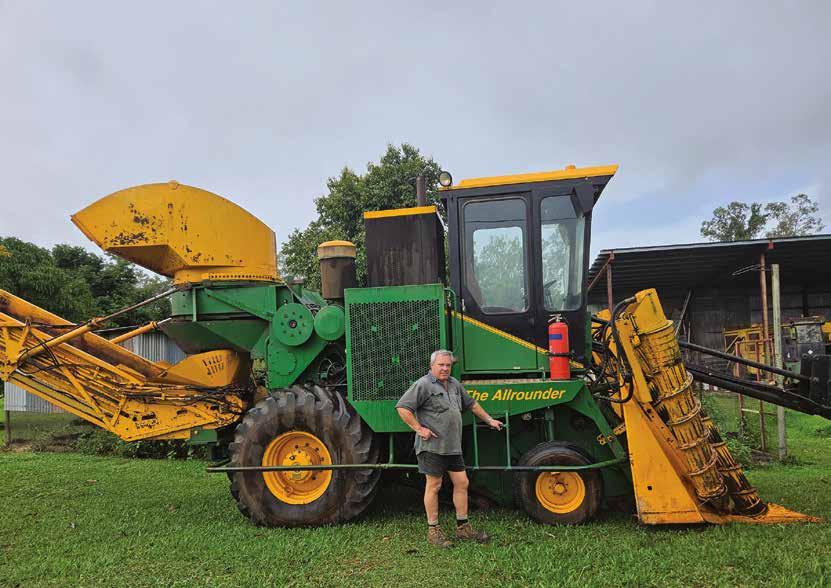
Who knows, perhaps the fourth generation of Sorbello’s will also work the land.
Until then Andrew says he loves the lifestyle the farm gives him, and the harvesting gives him a huge kick.
OLDER EQUIPMENT THAT NEVER SAYS DIE!
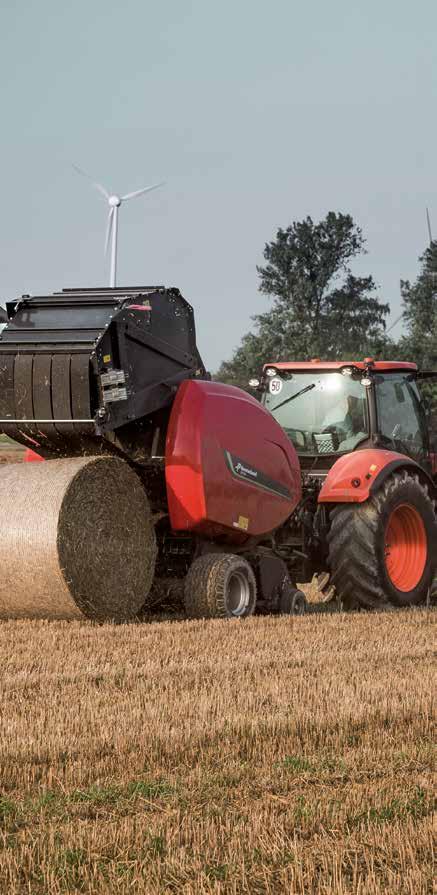

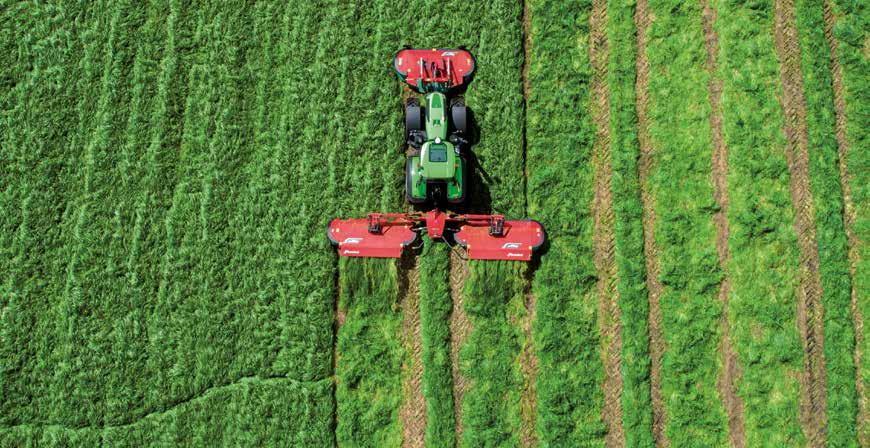



• 2 year full warranty
• Authorised start-up session by Kverneland specialist team
• Free winter pre-service inspection

• Starter kit
• Priority option of registering your machine at mykverneland for up-to-date technical updates & information, as they become available in Europe
• One service follow-up from a Kverneland specialist per year during the season
• Guaranteed 24 hour parts availability
• Back up machines available during the grass season
